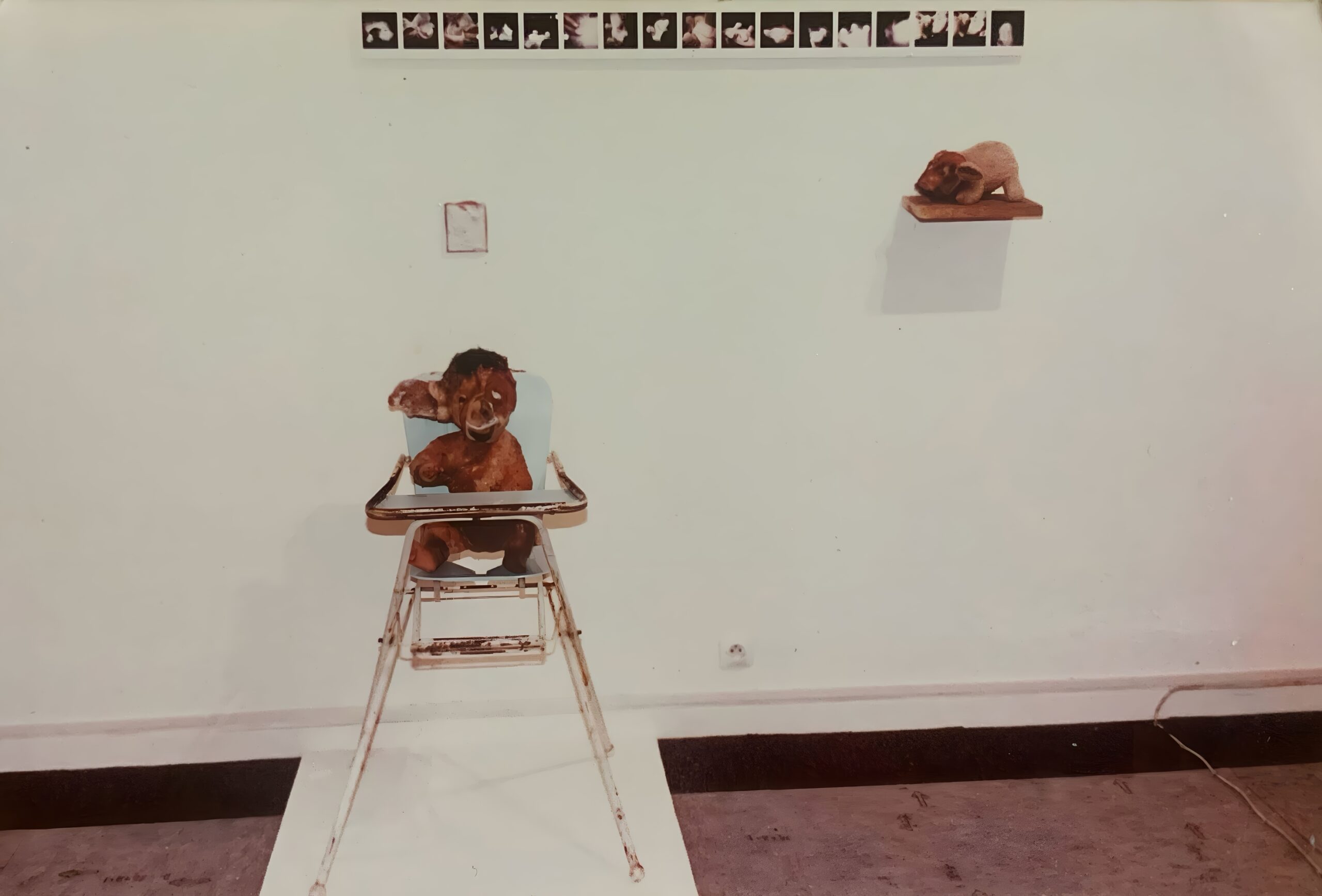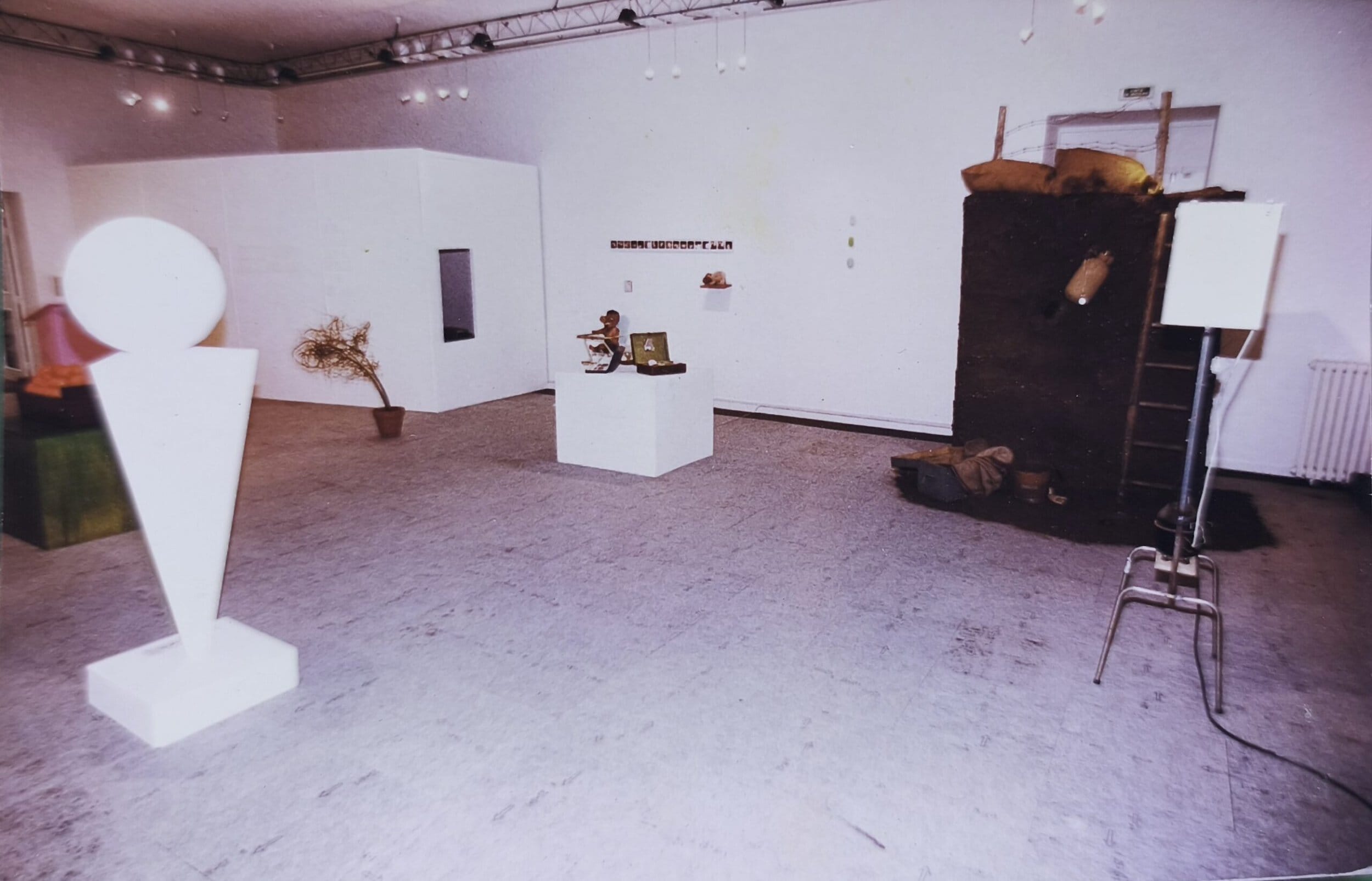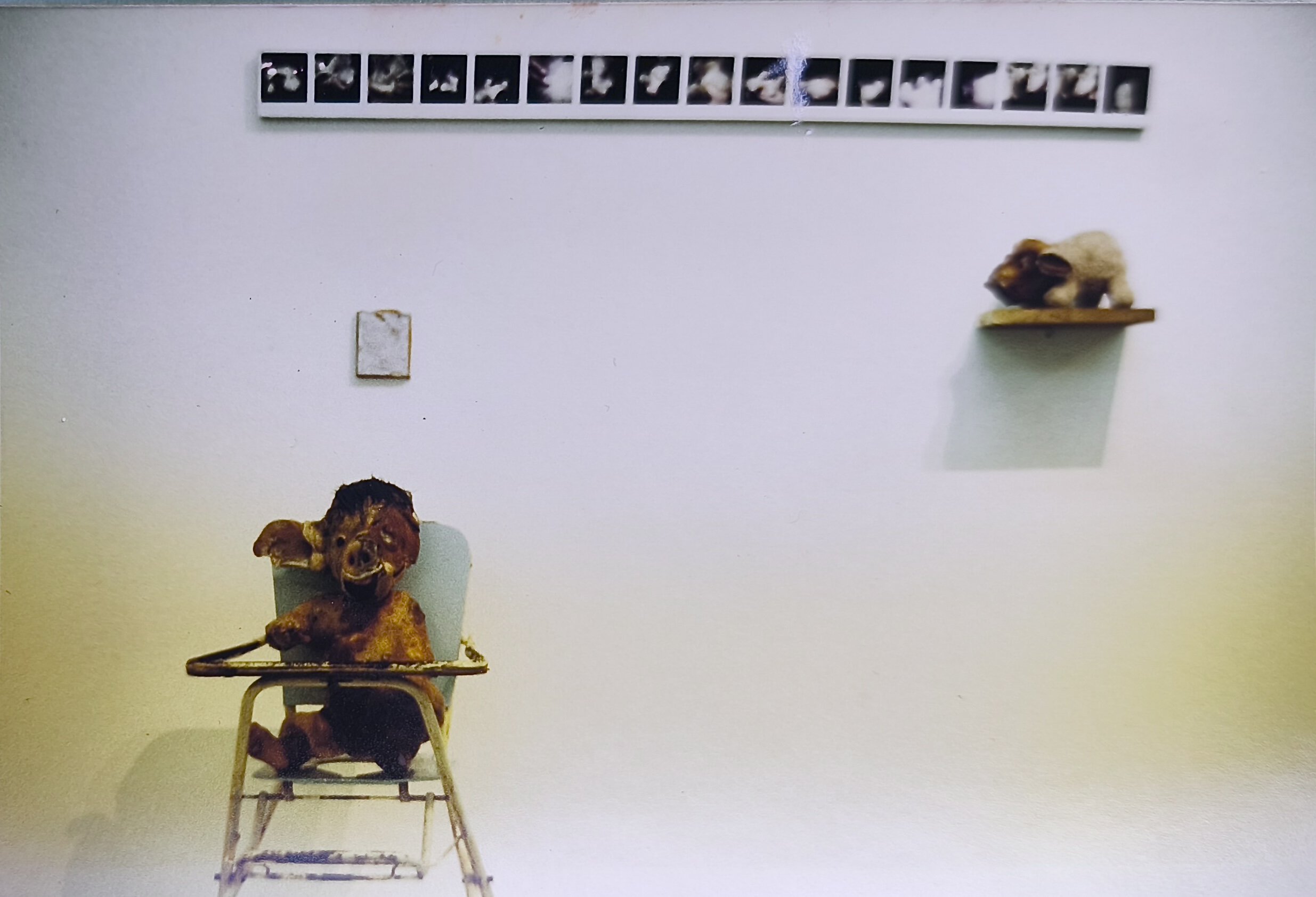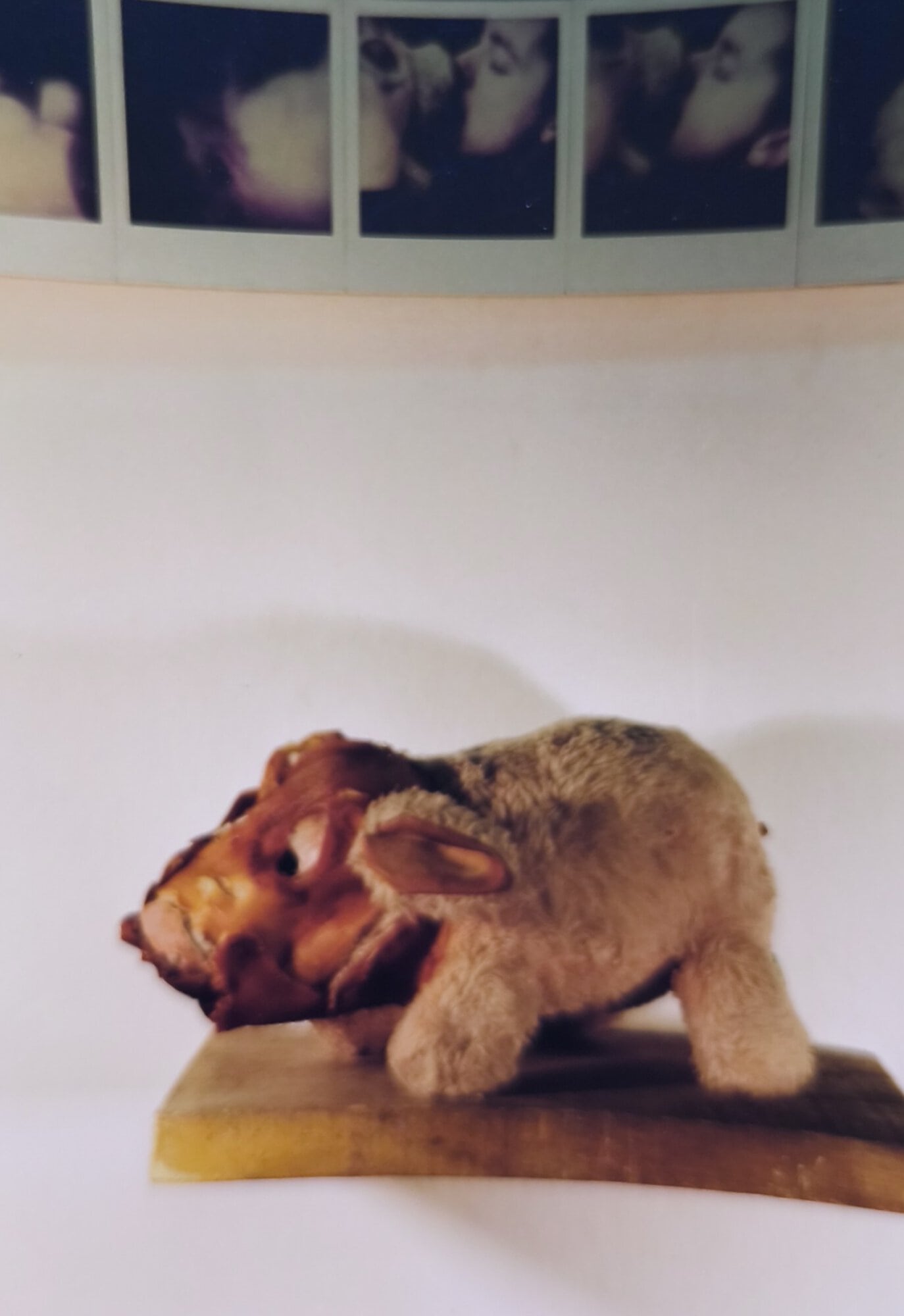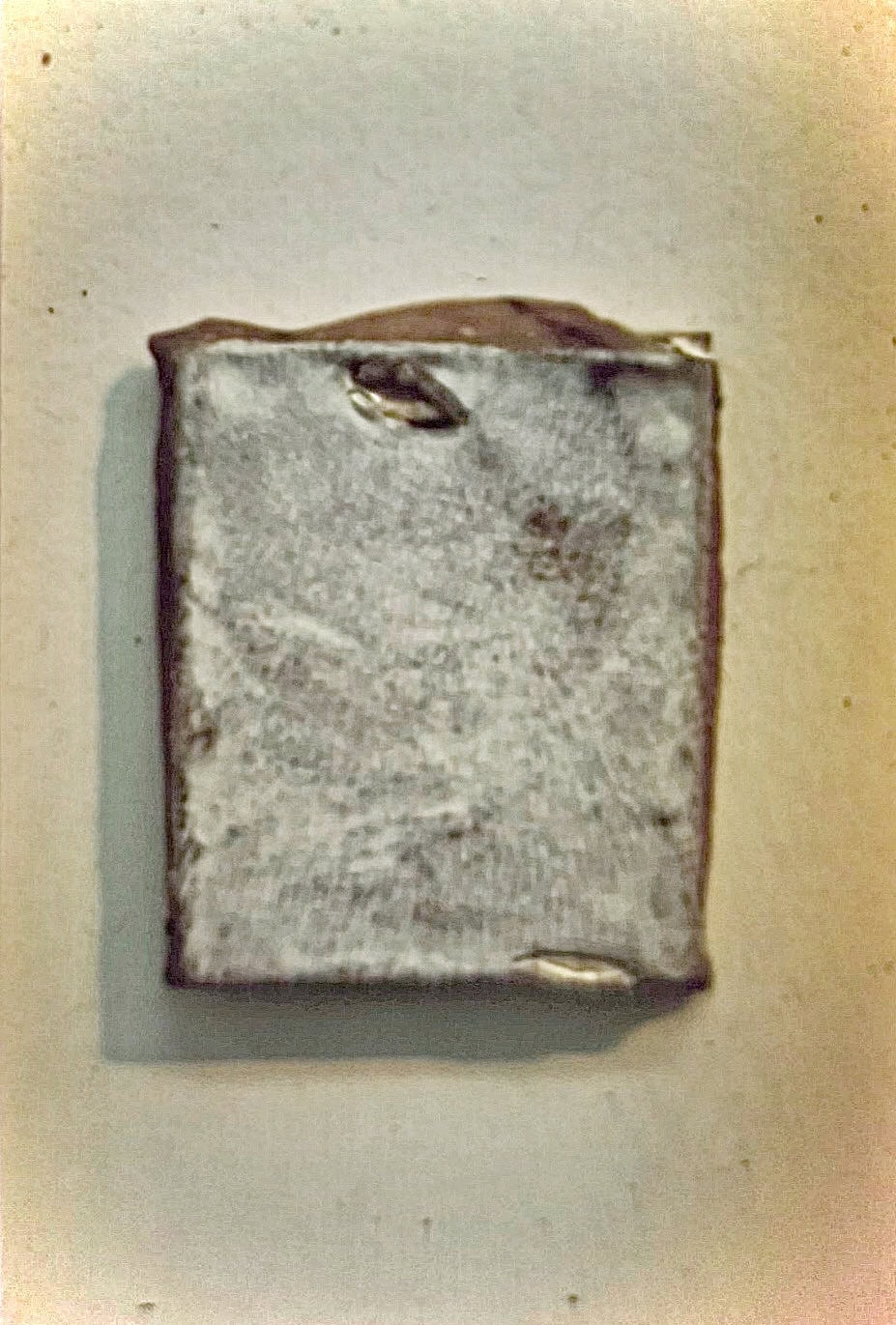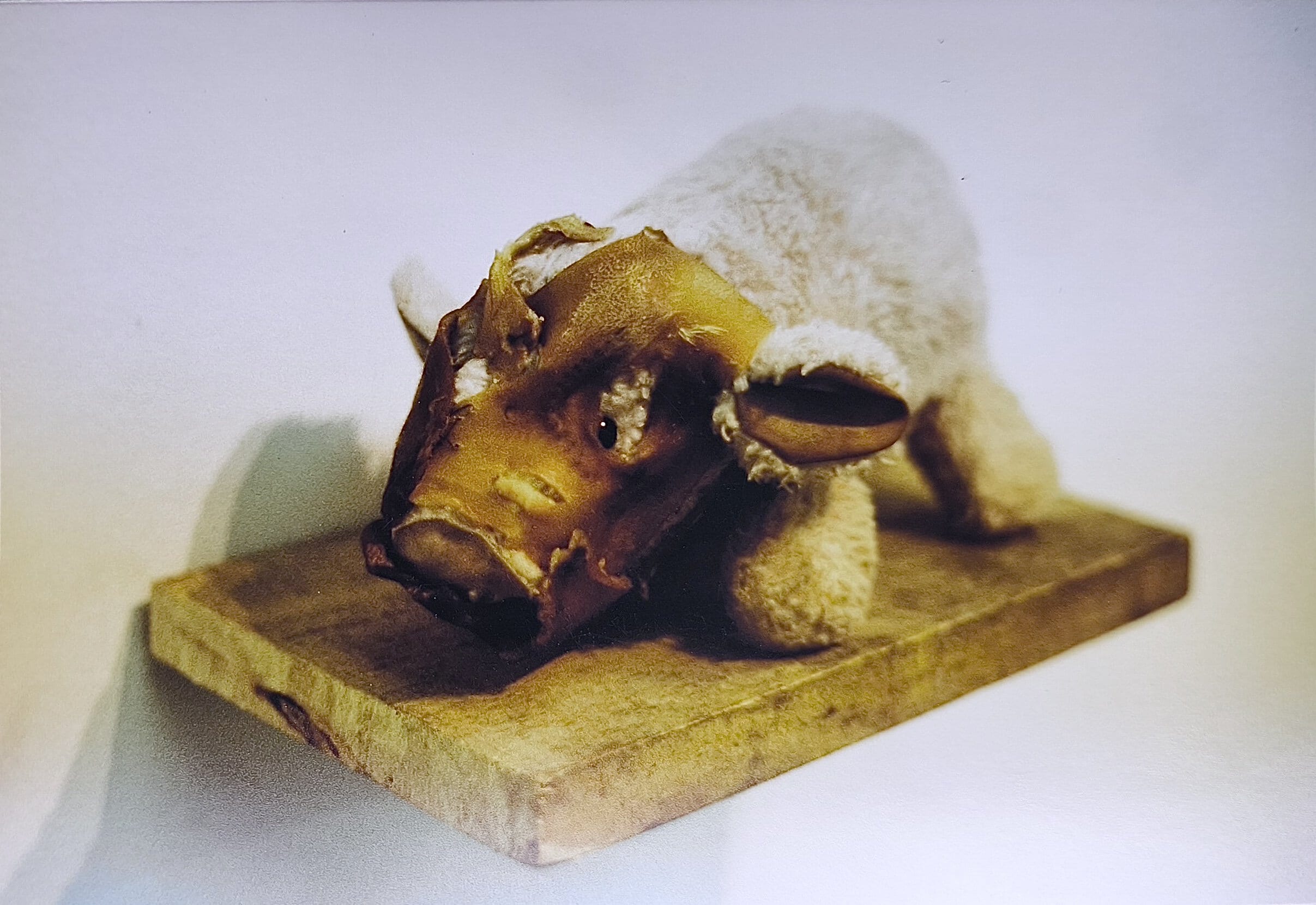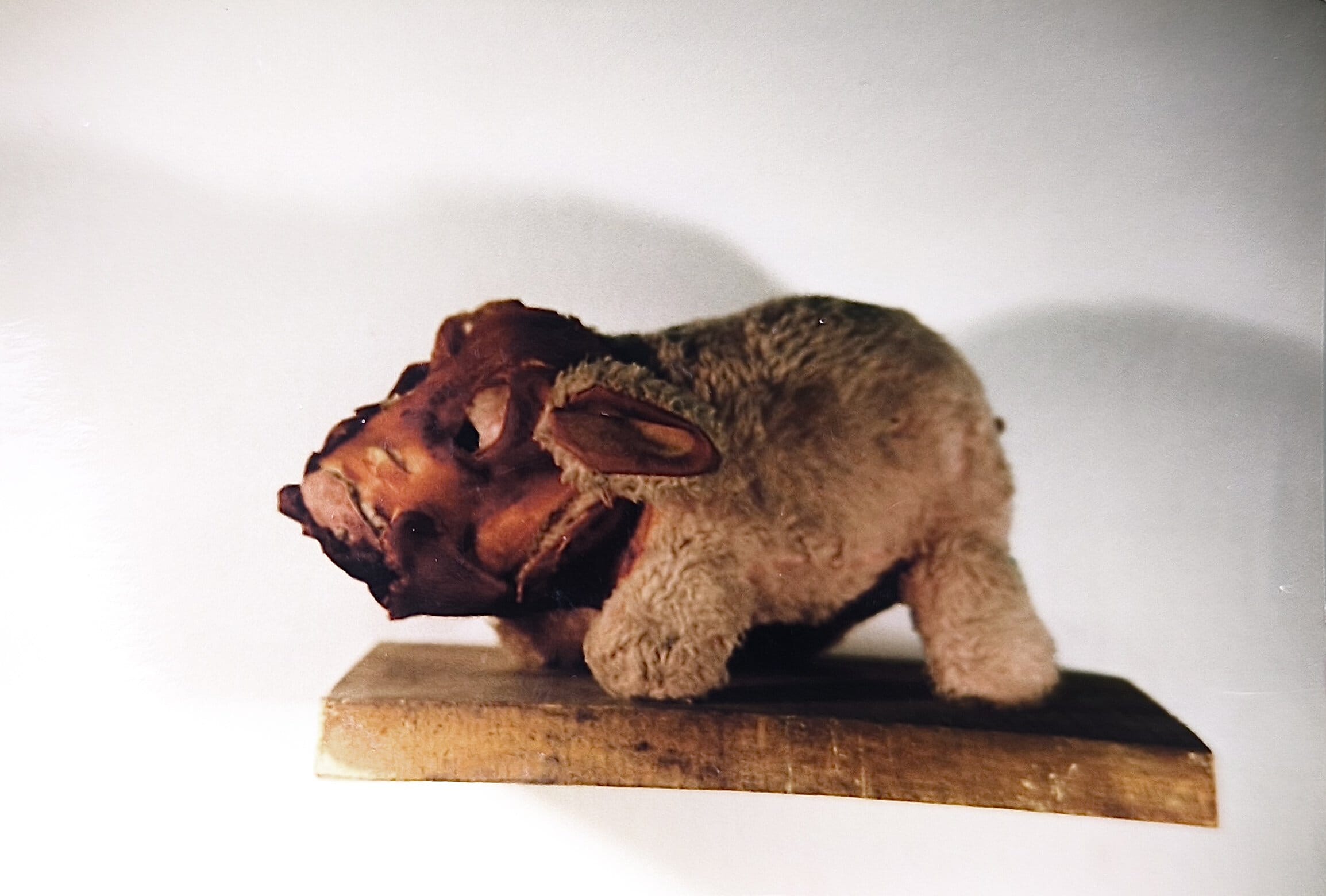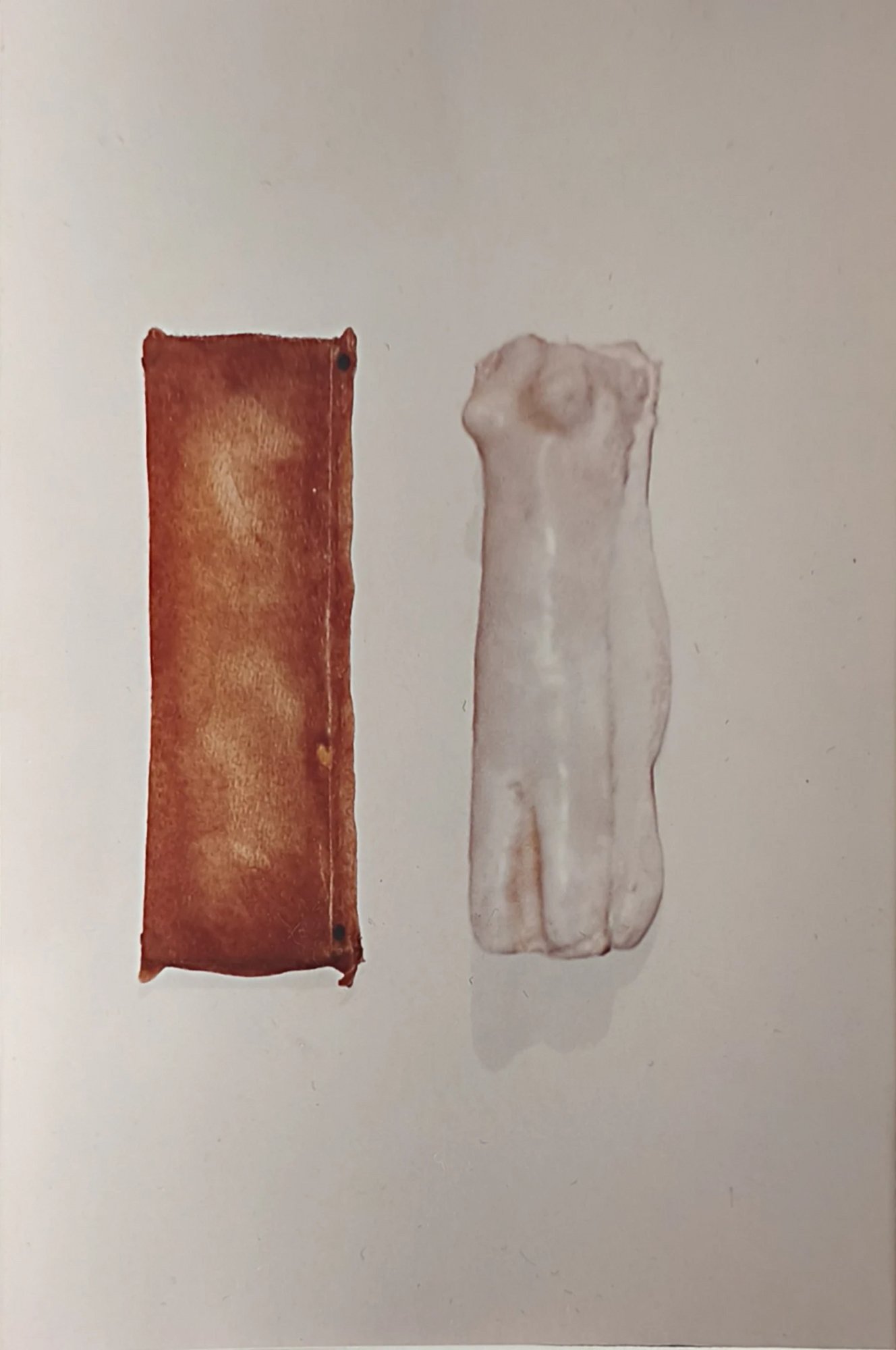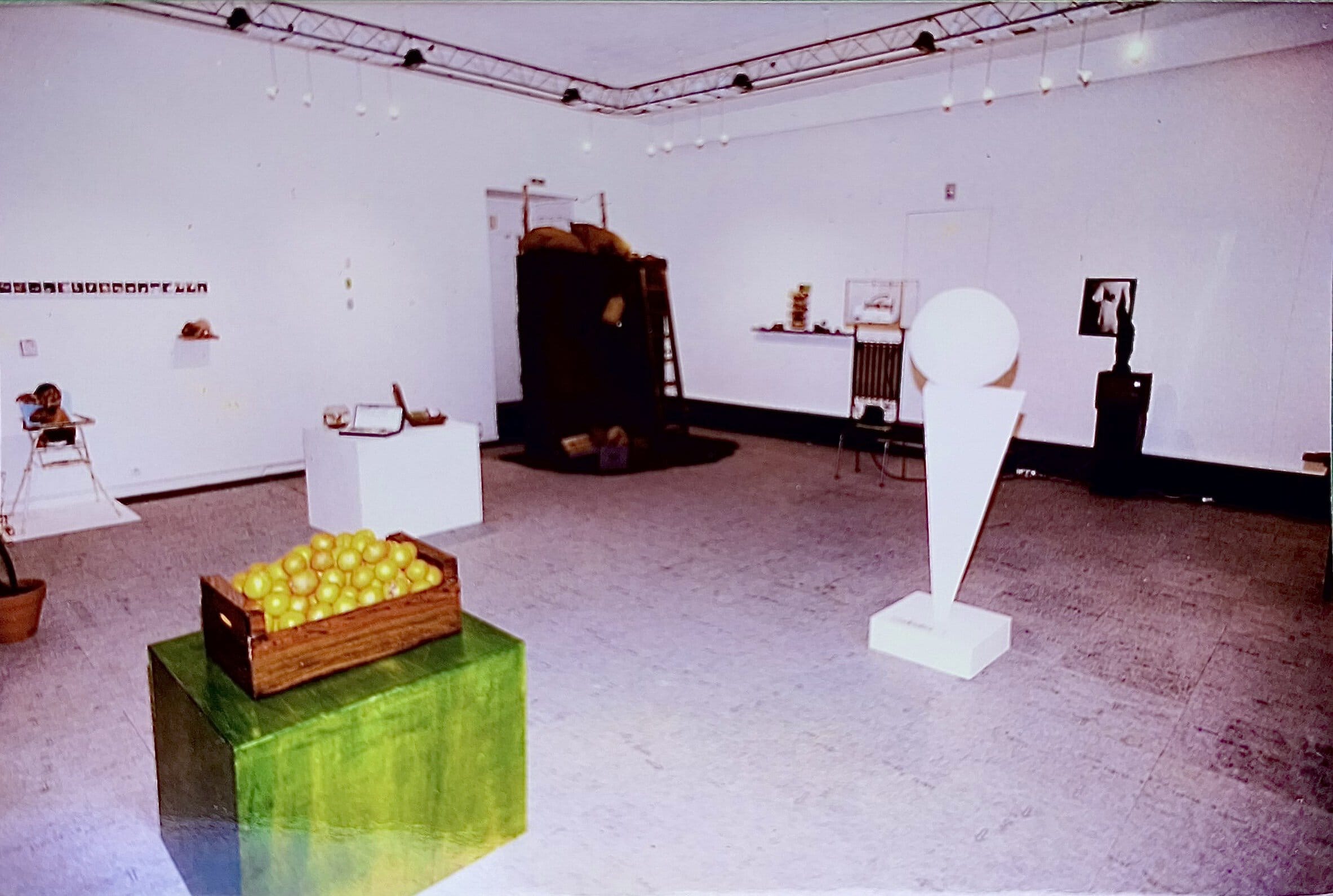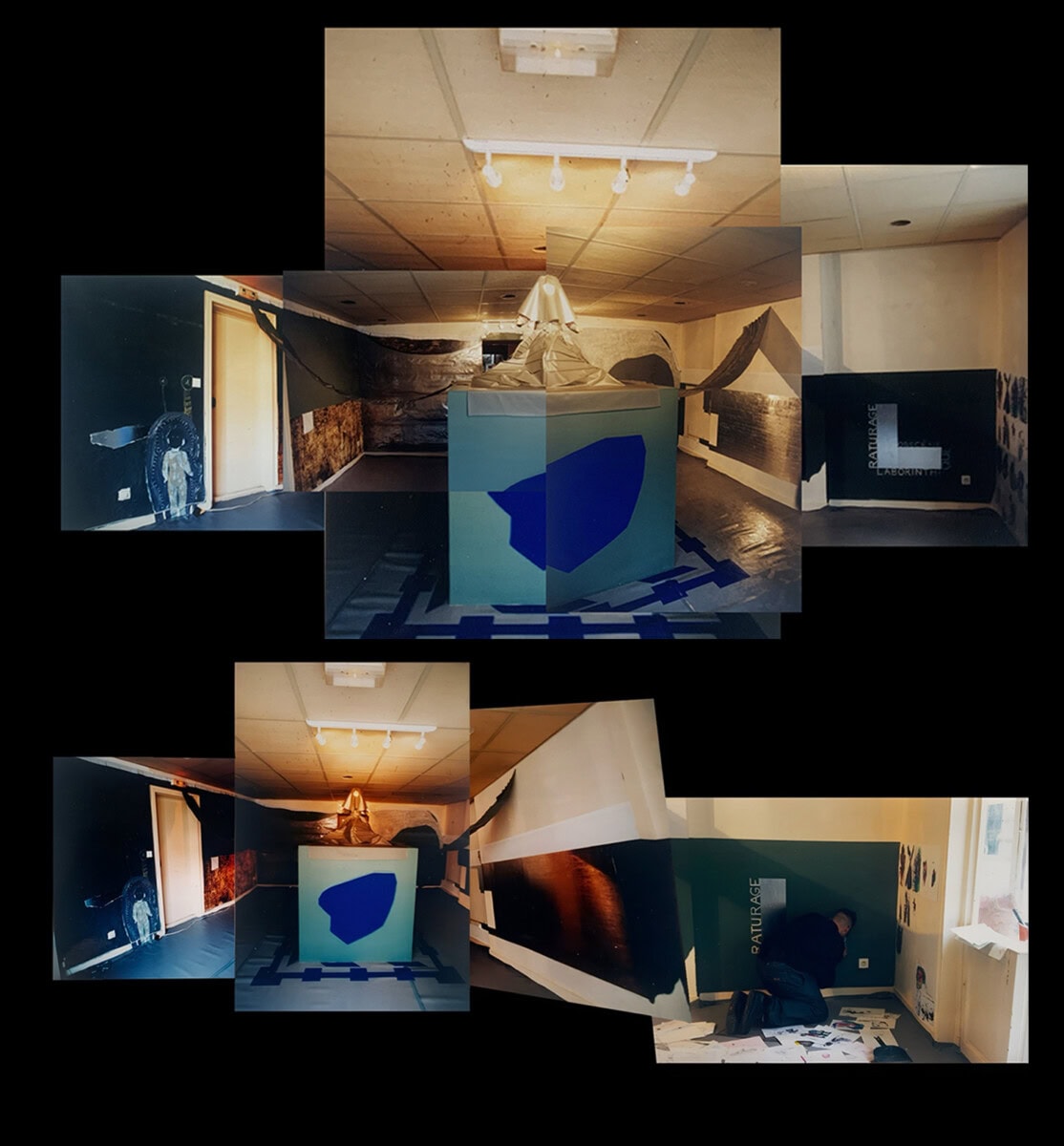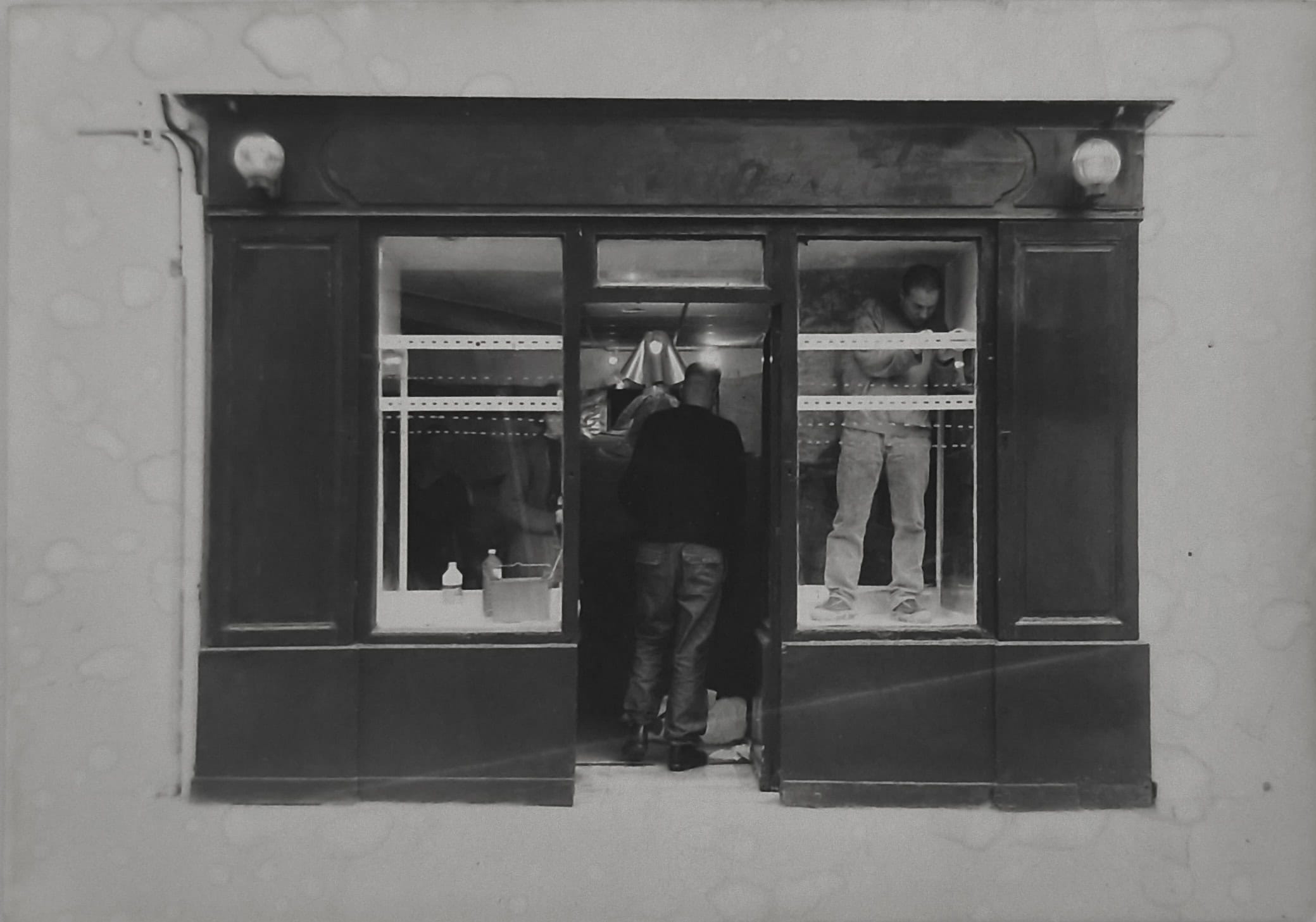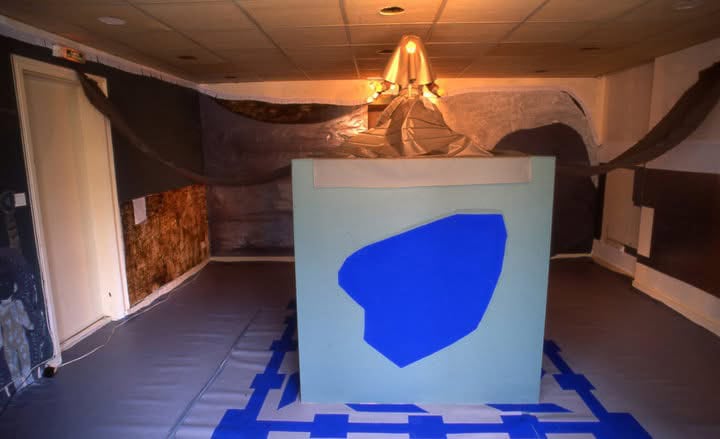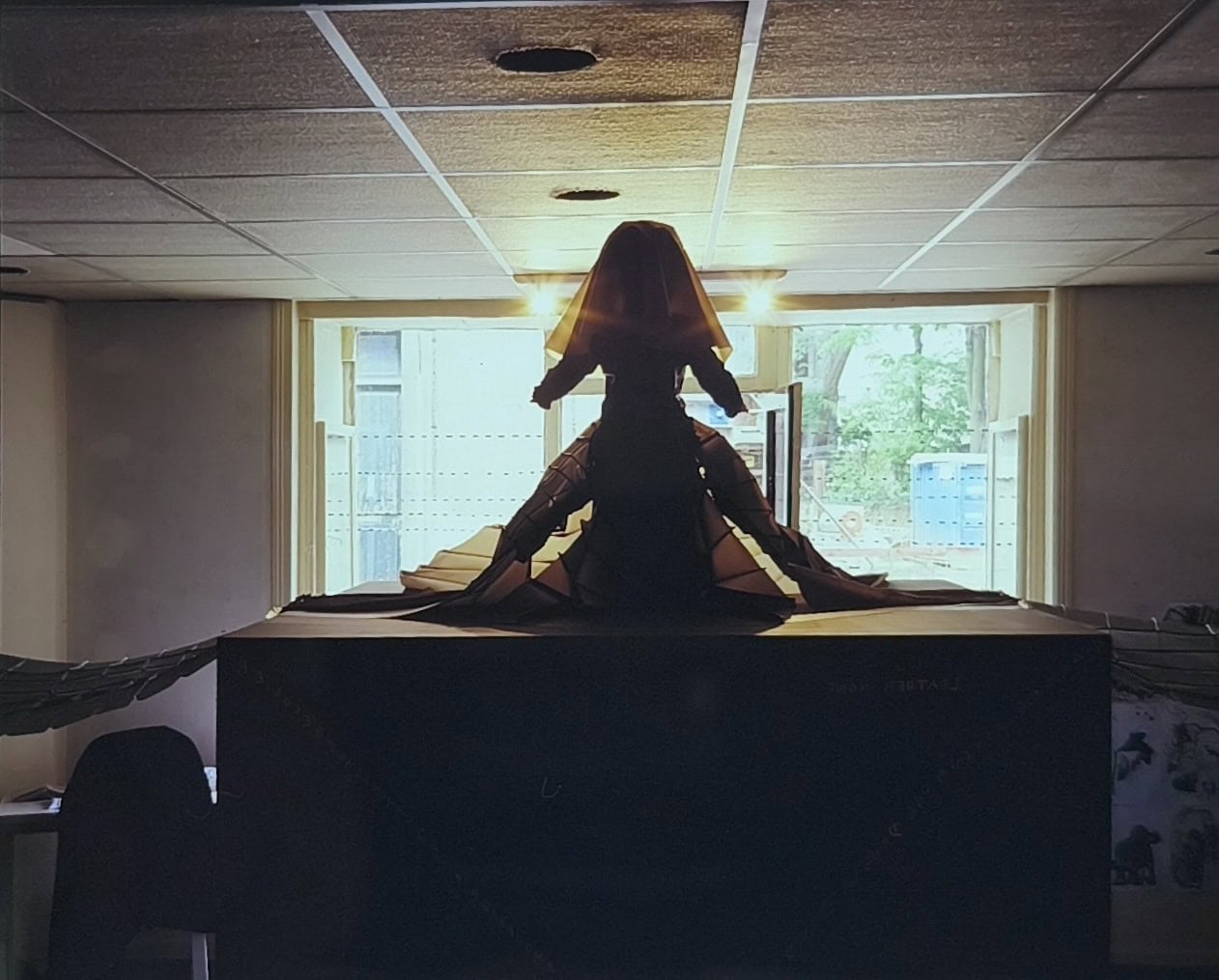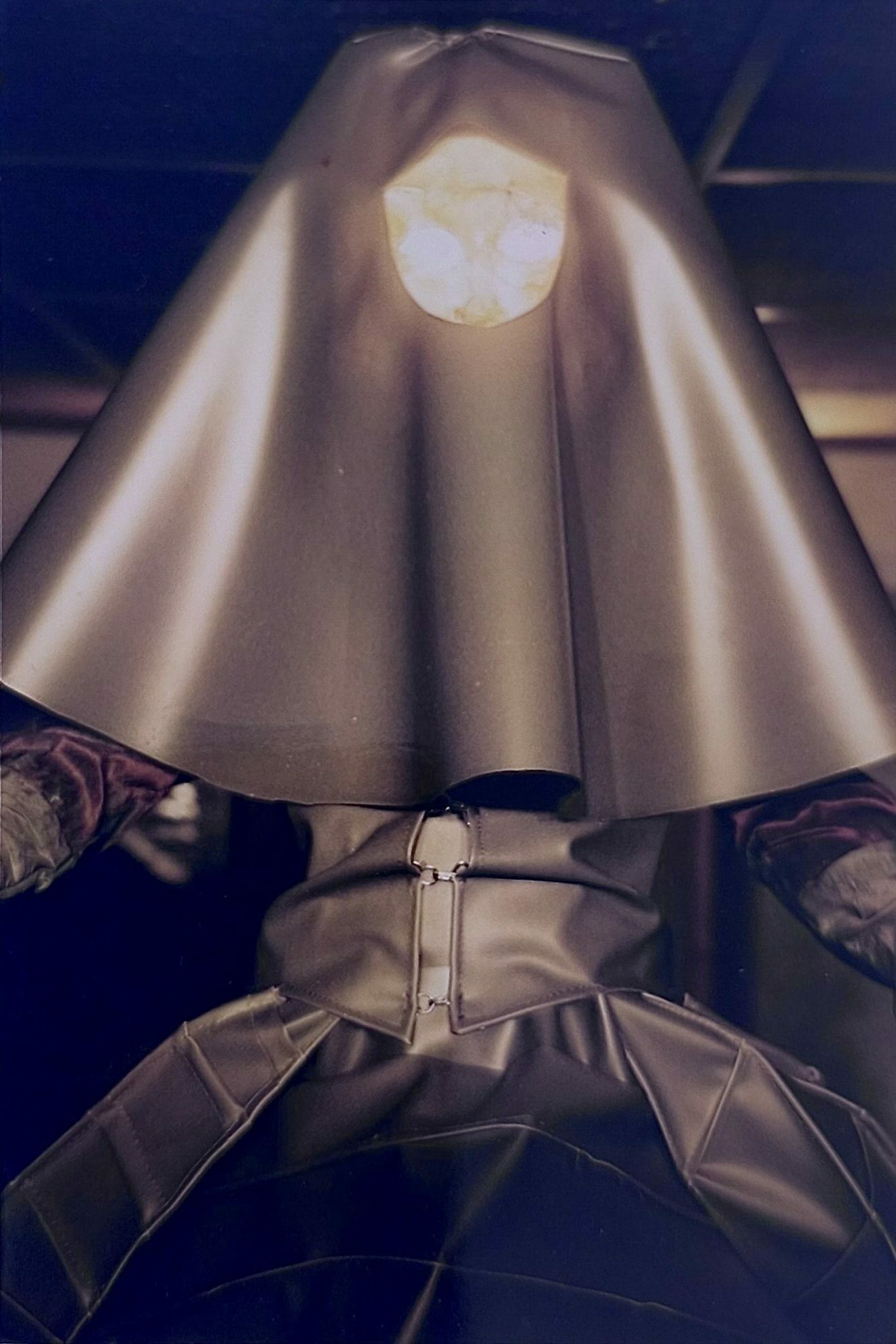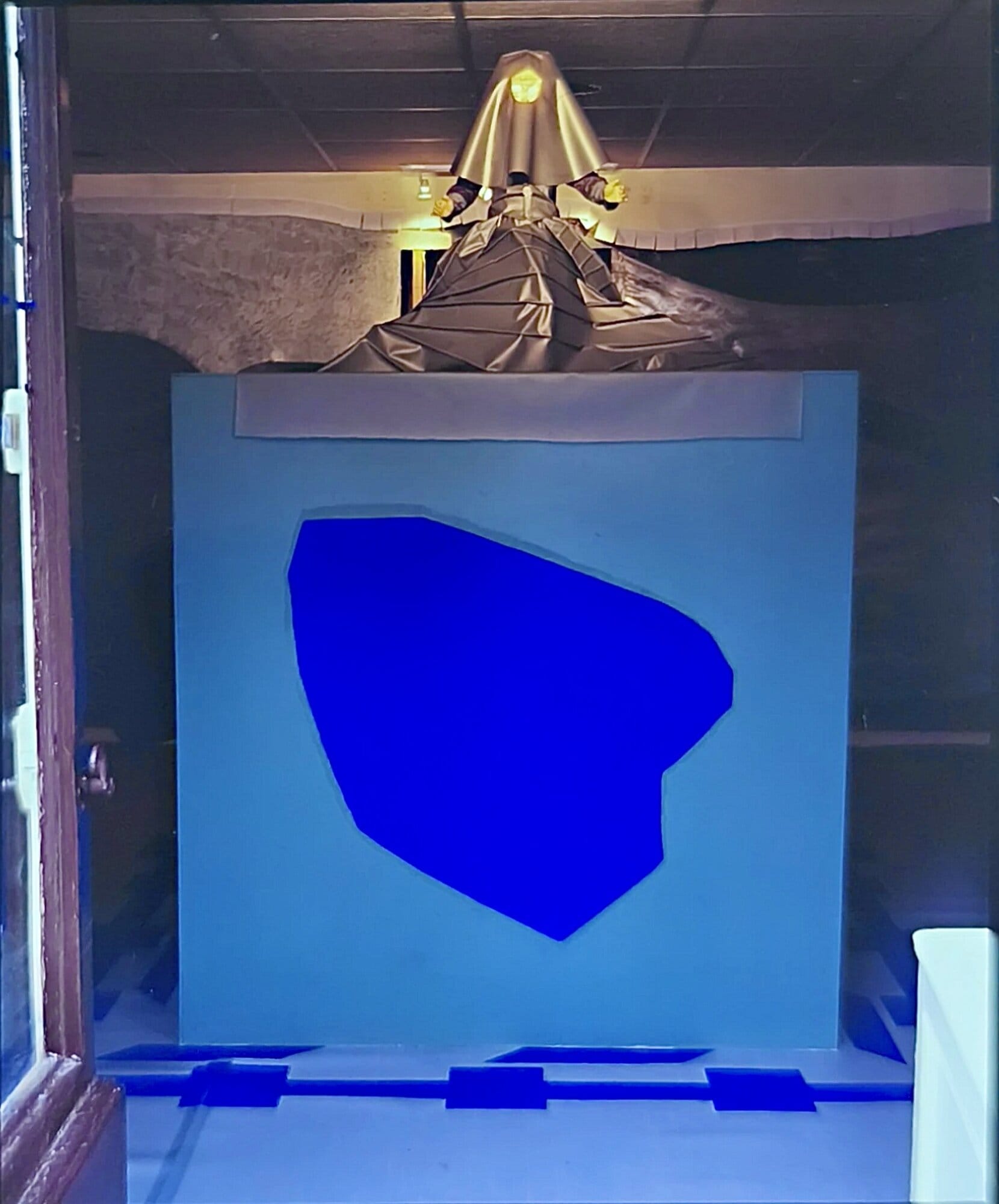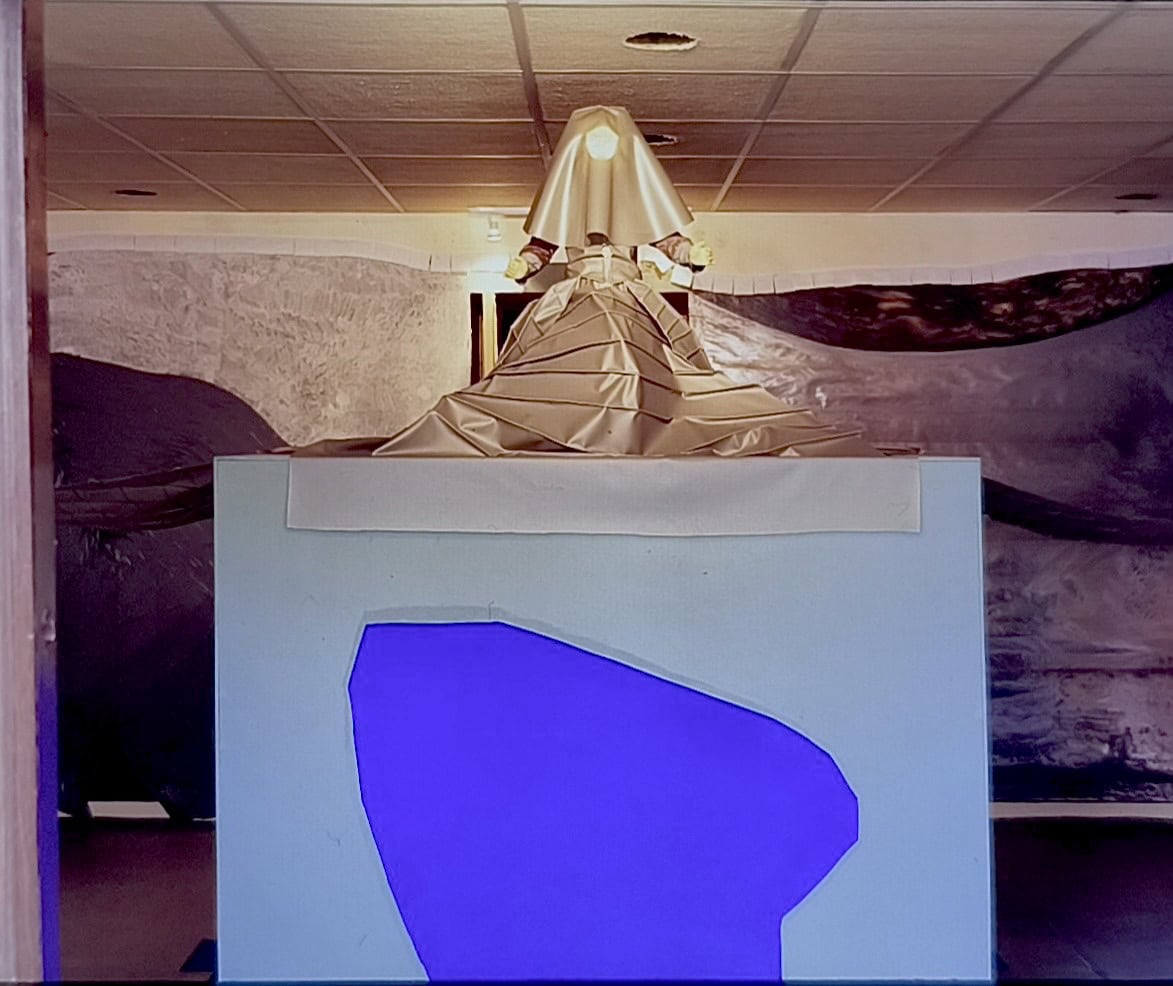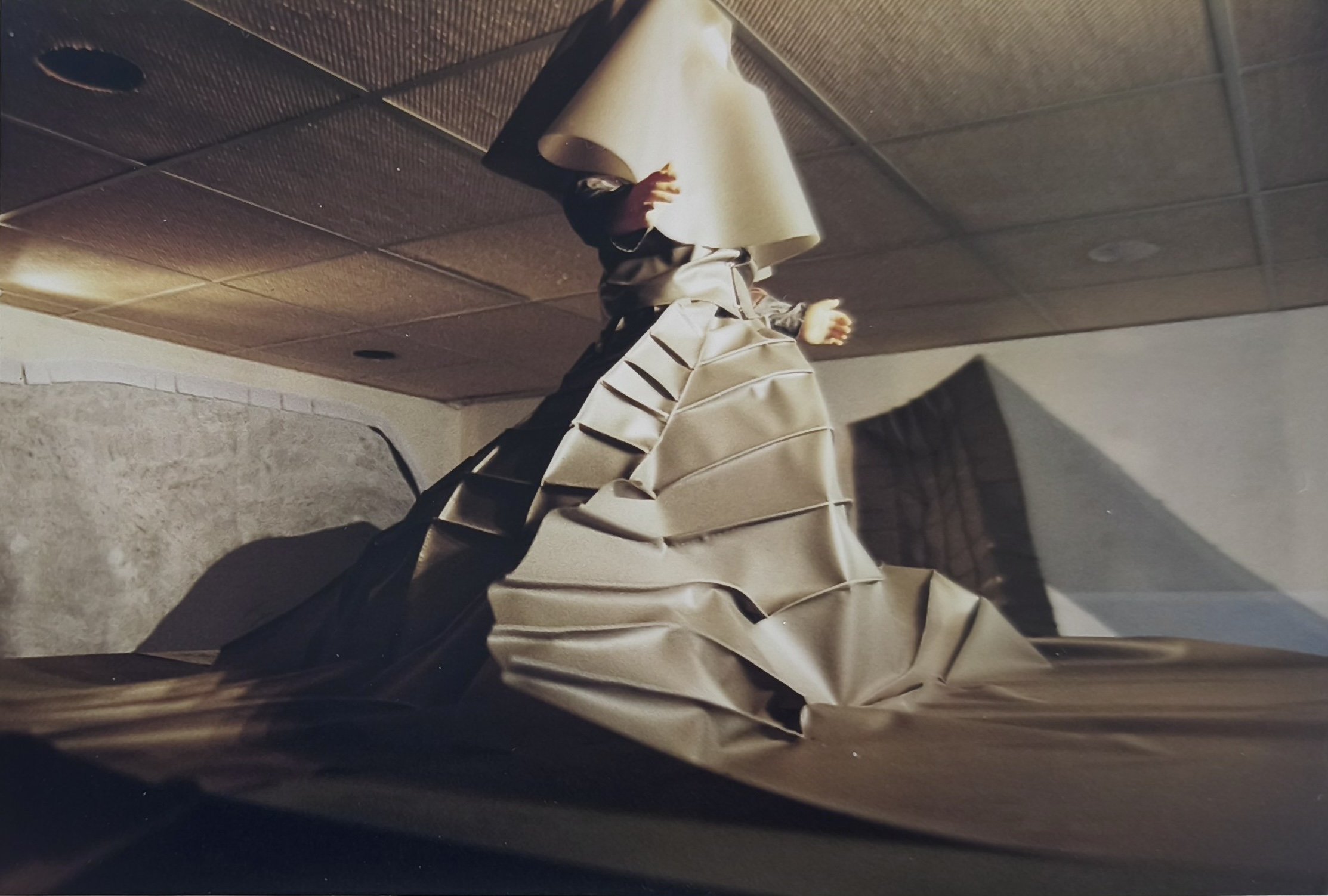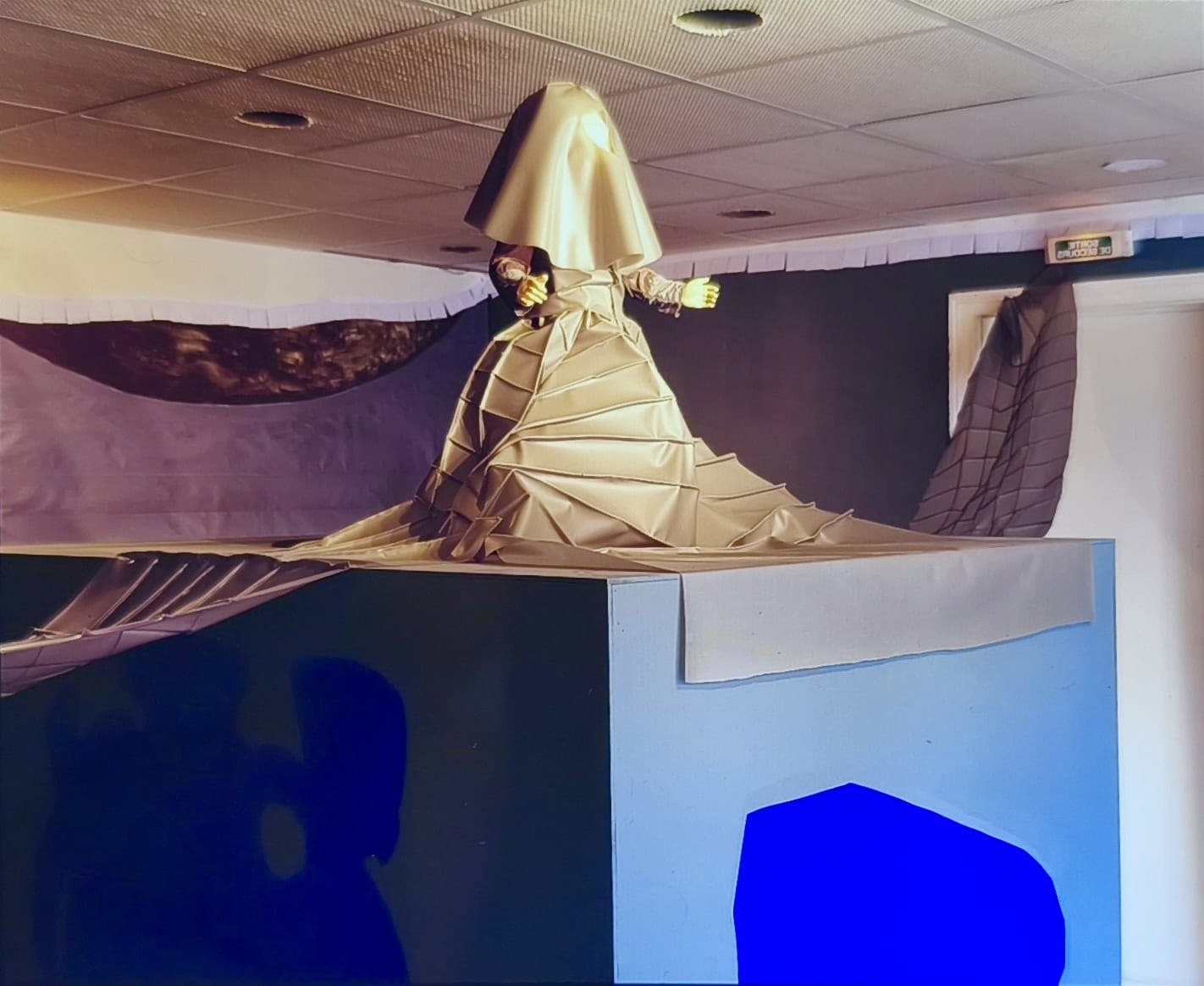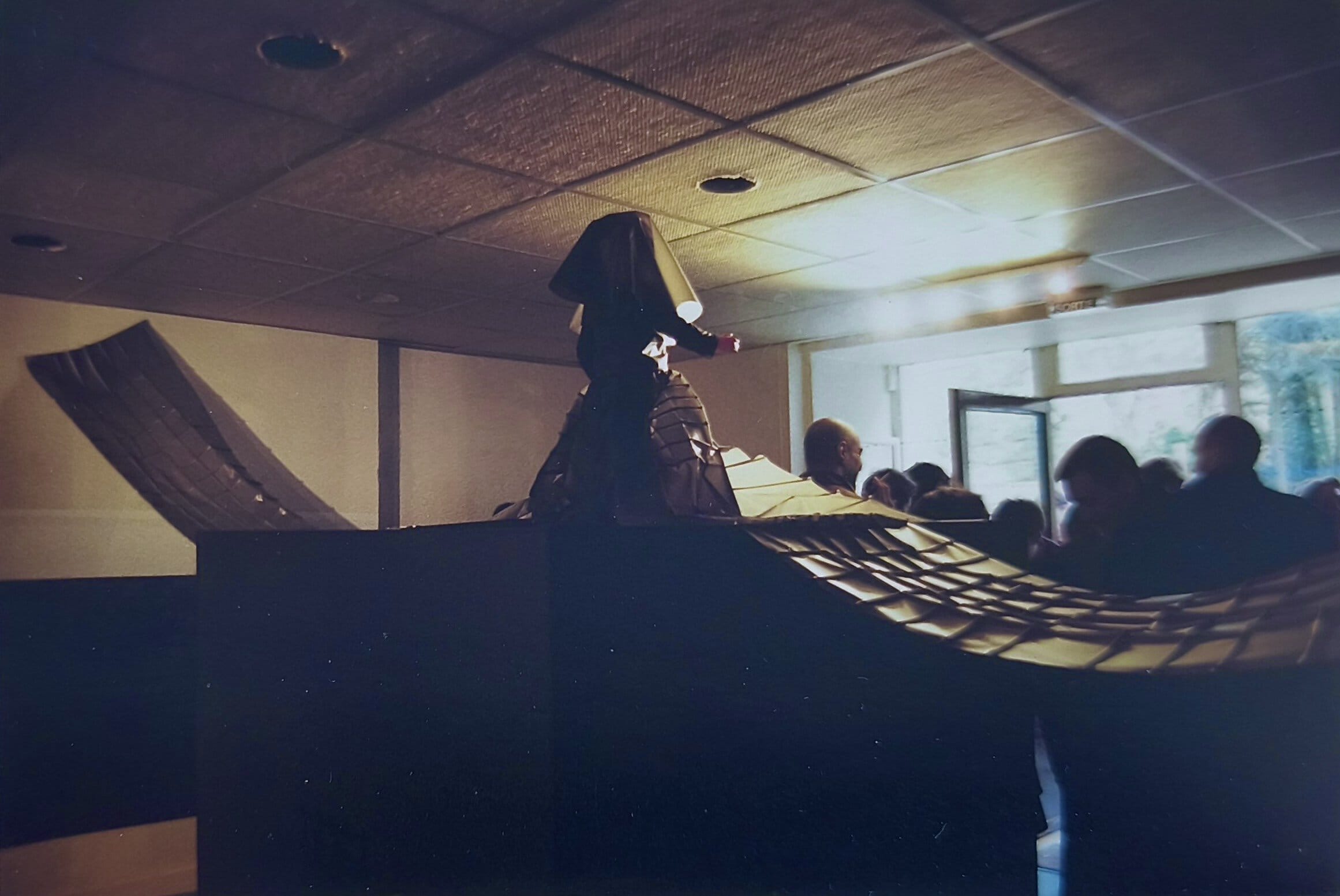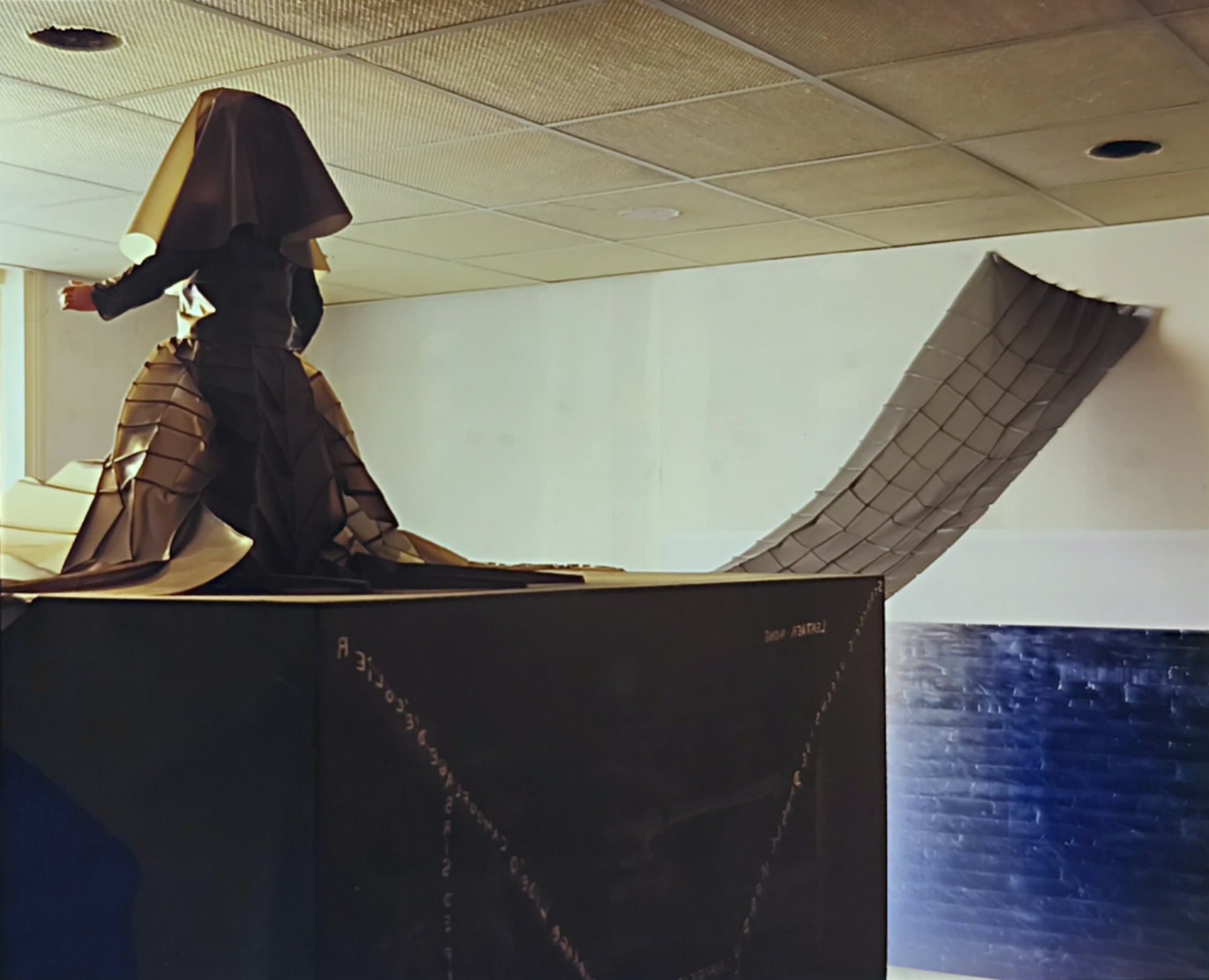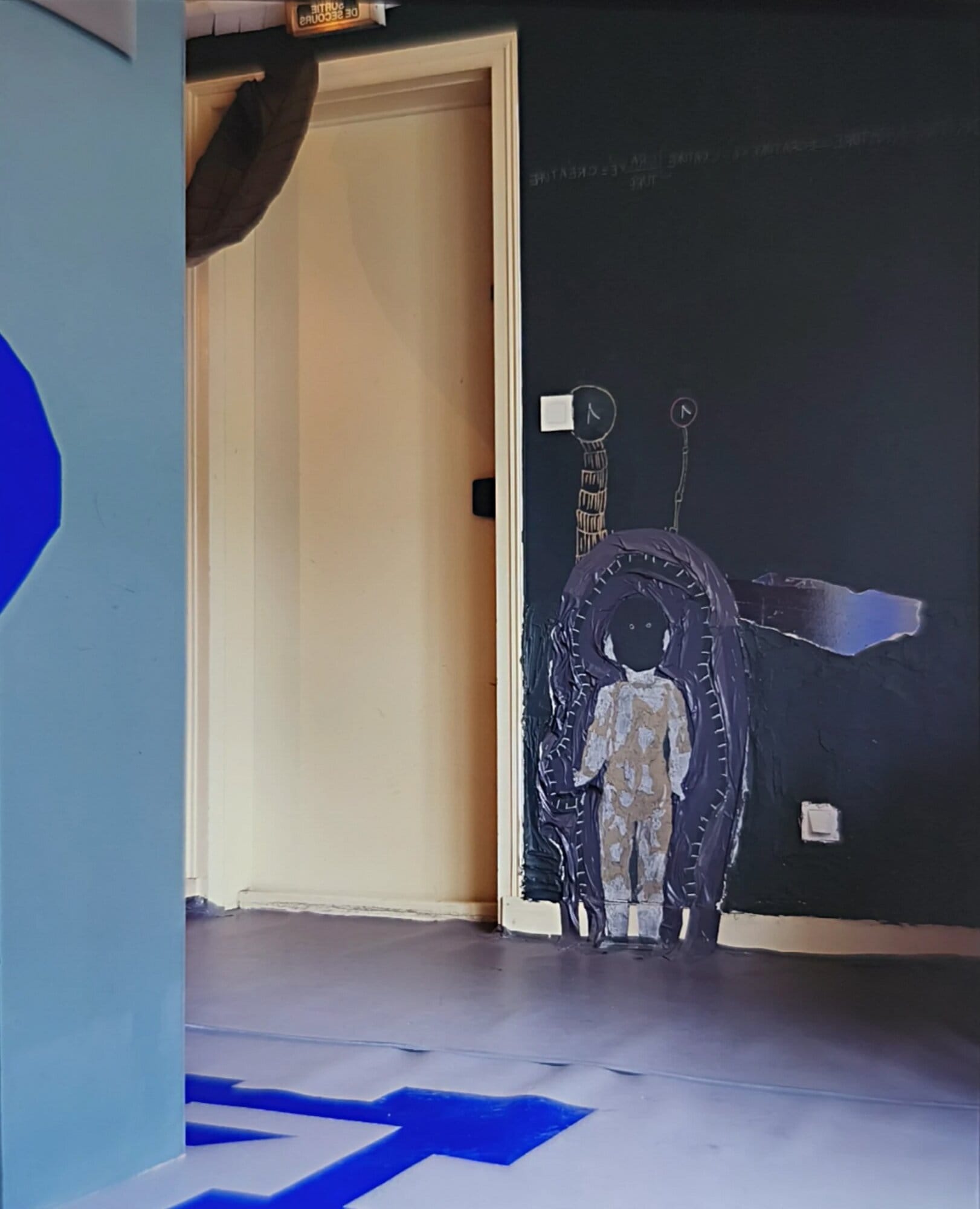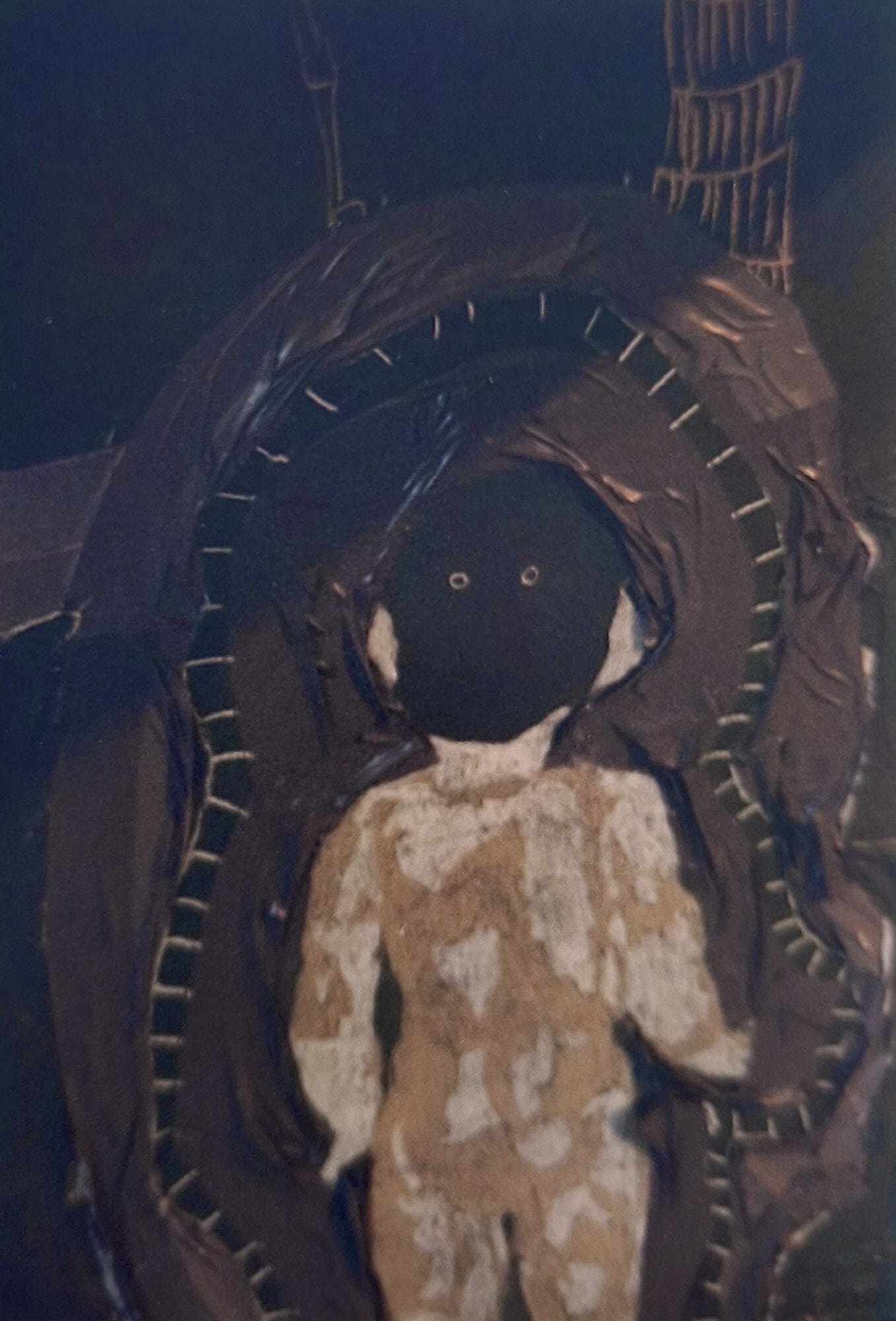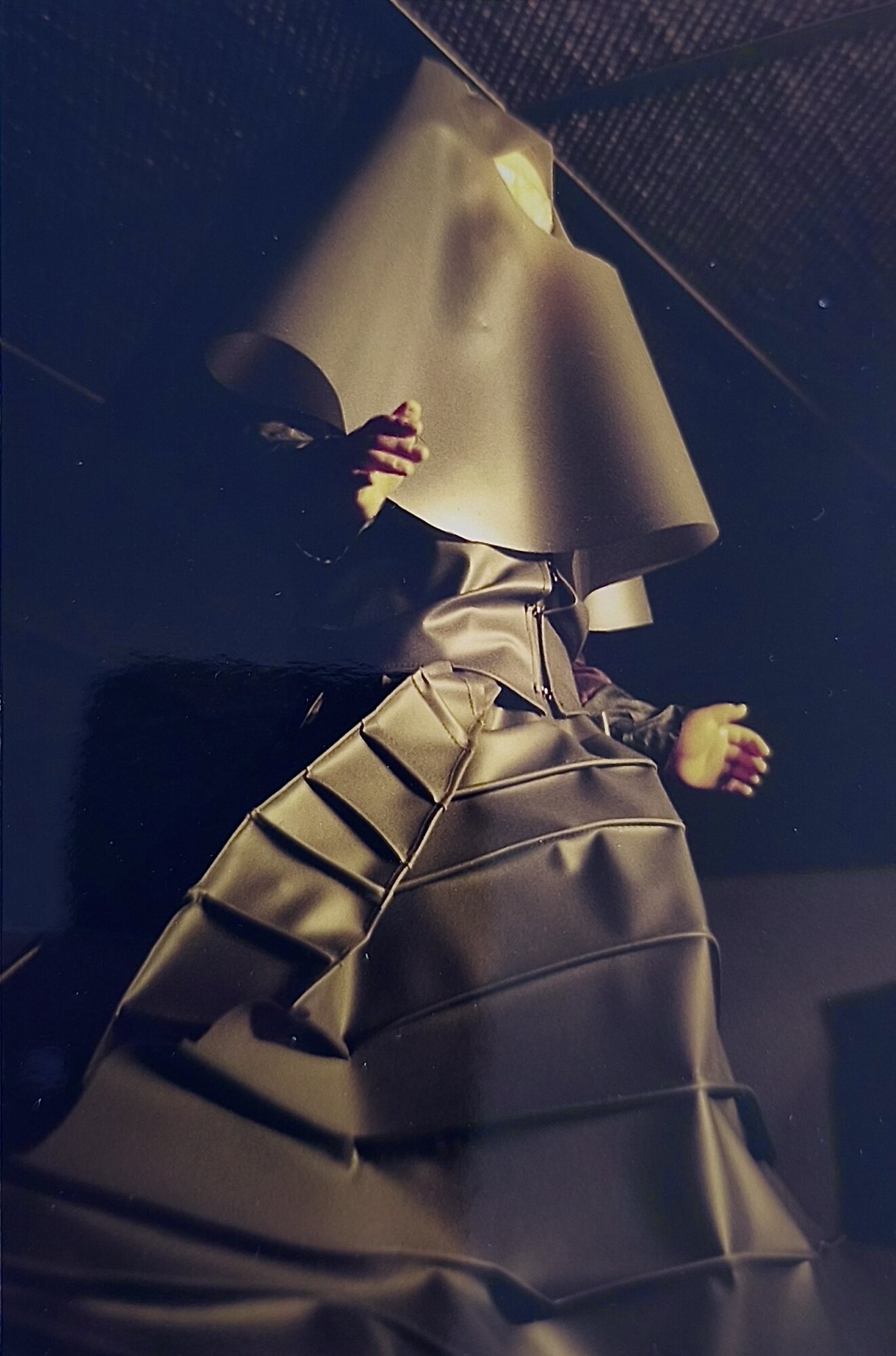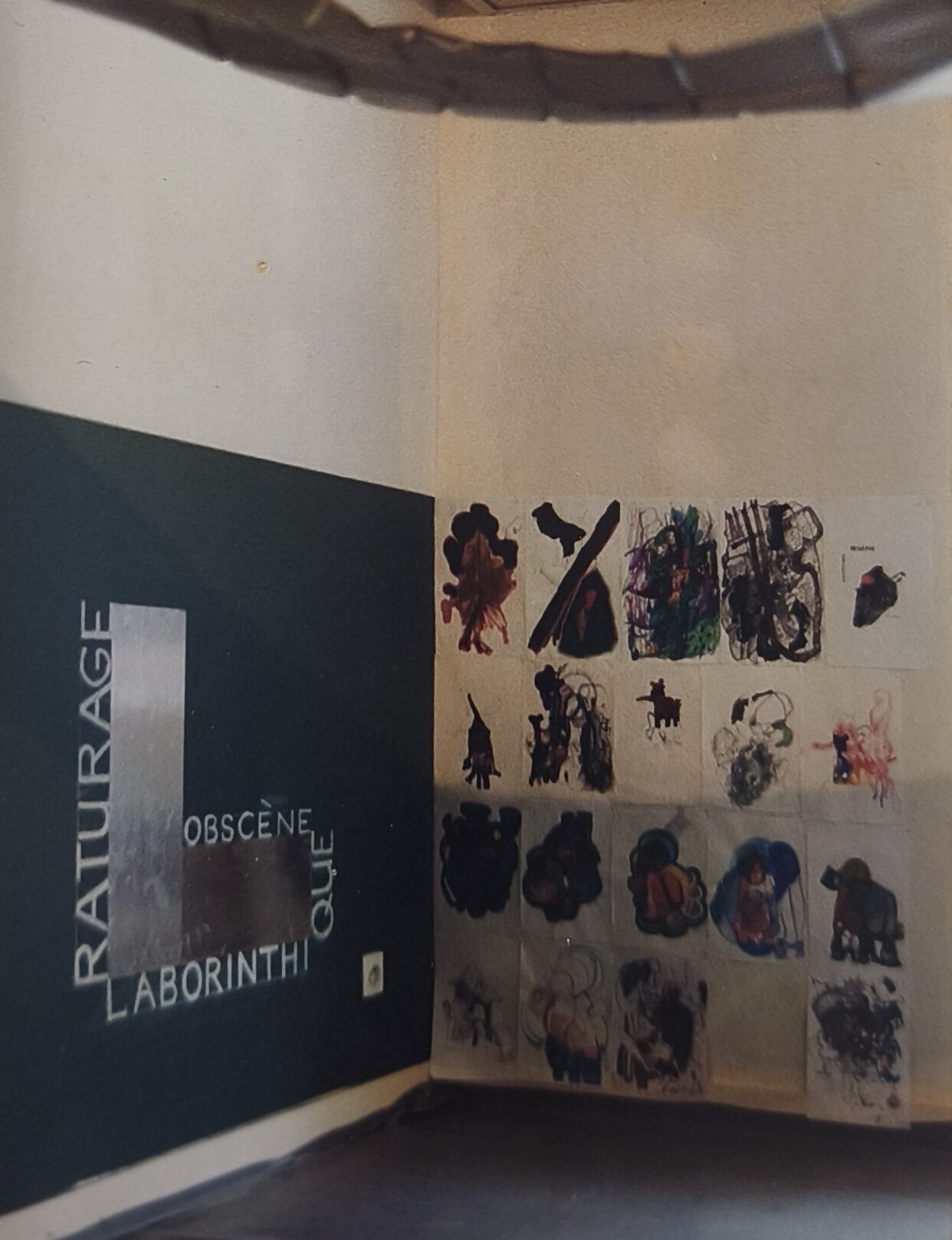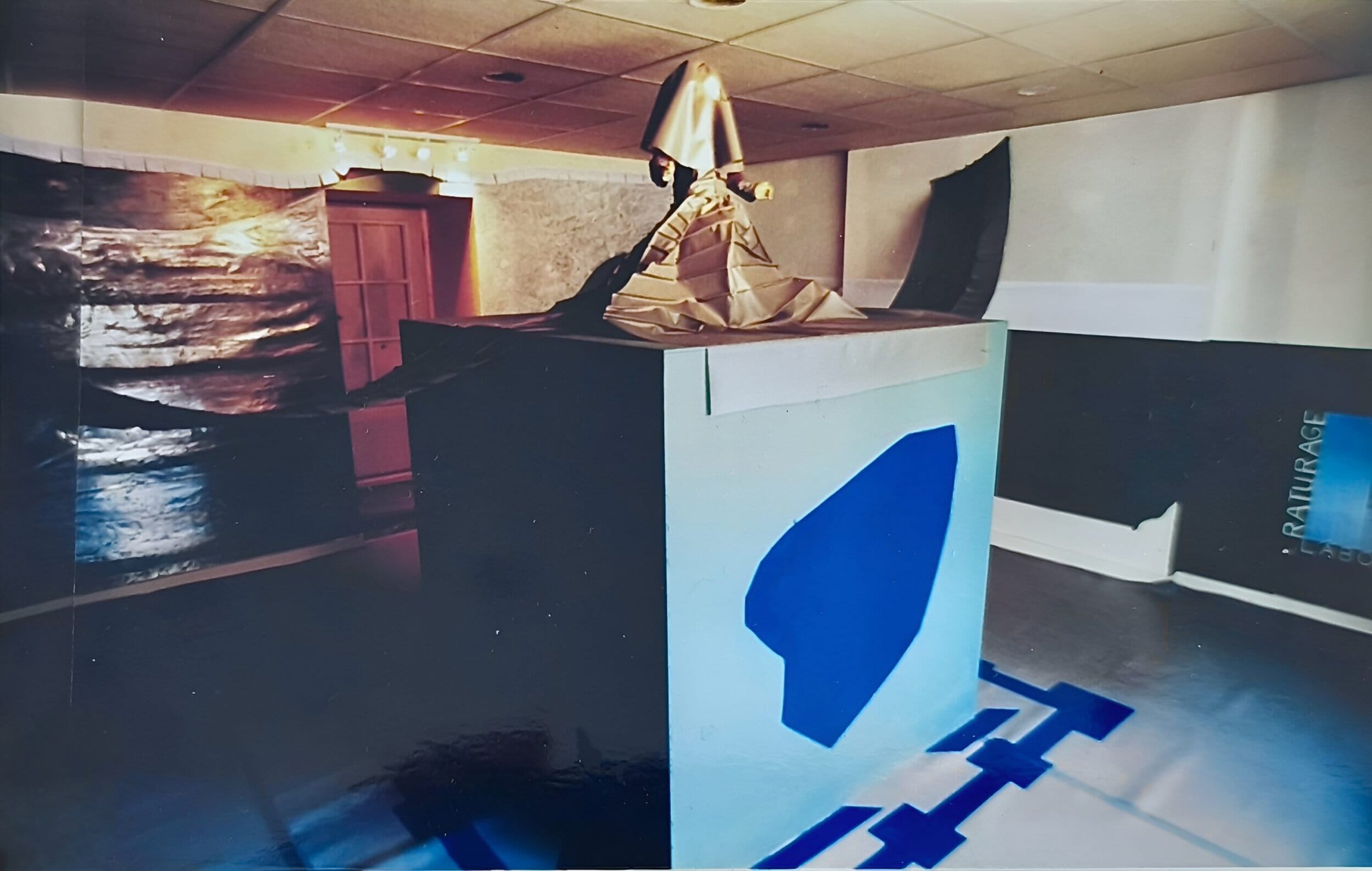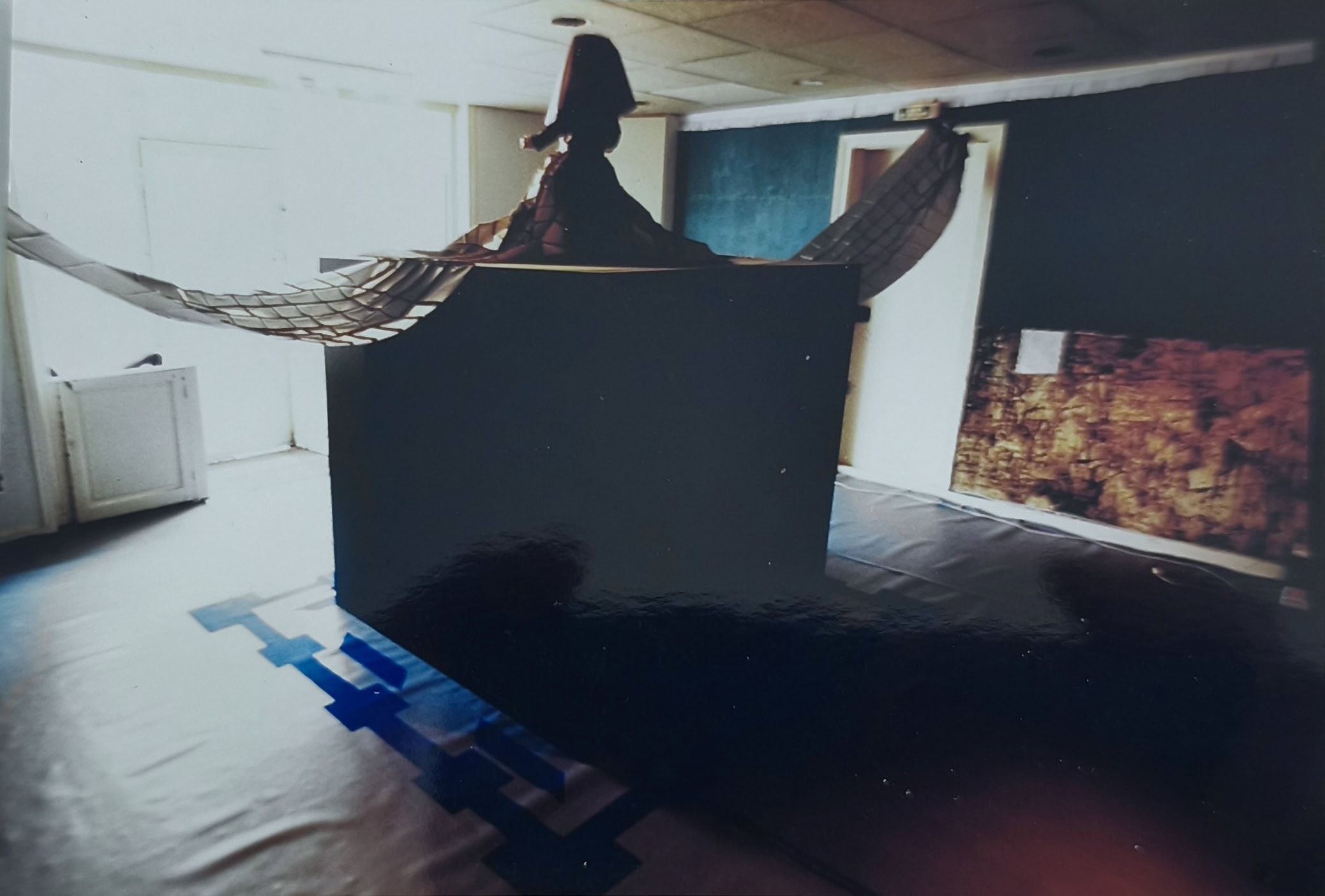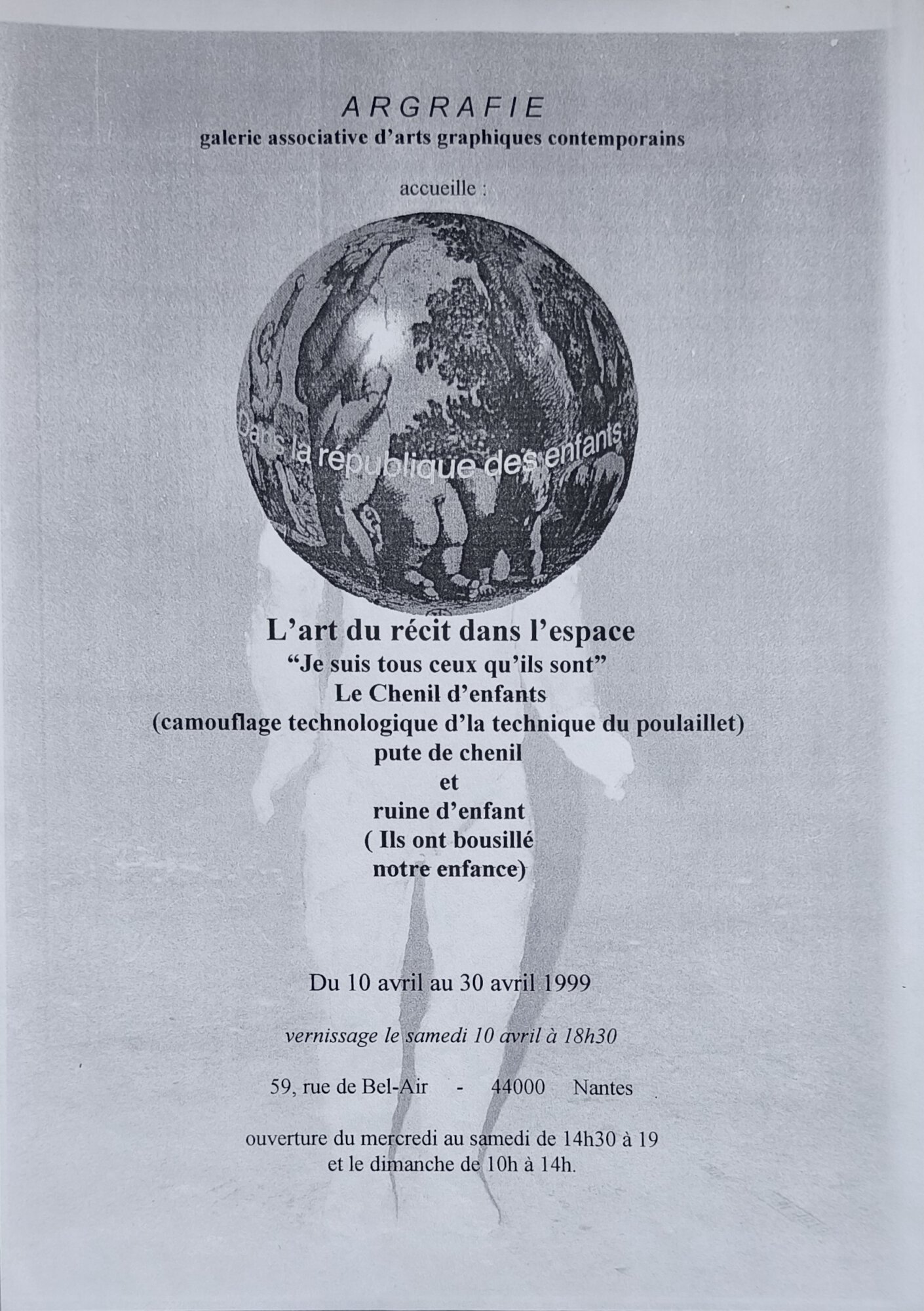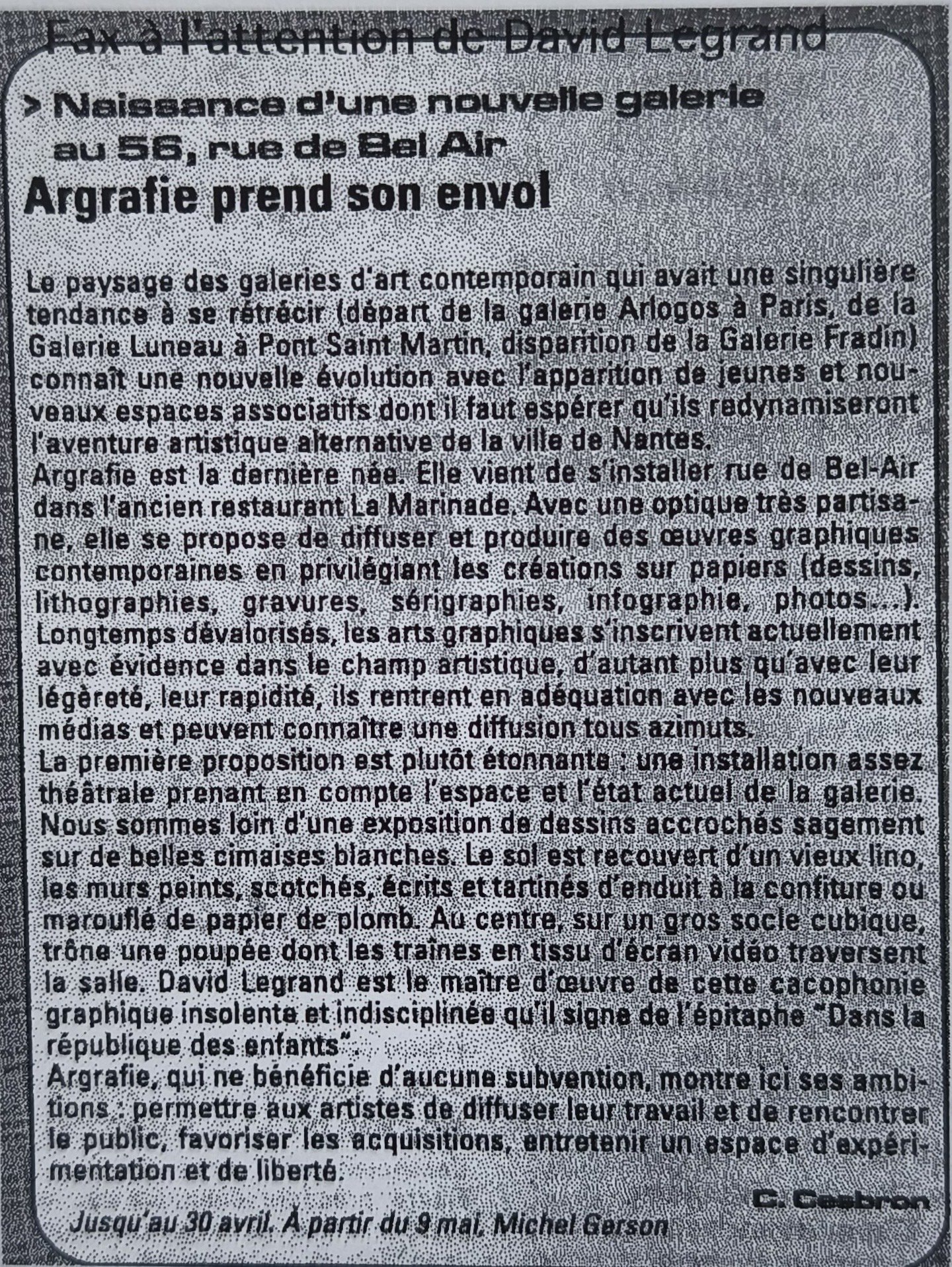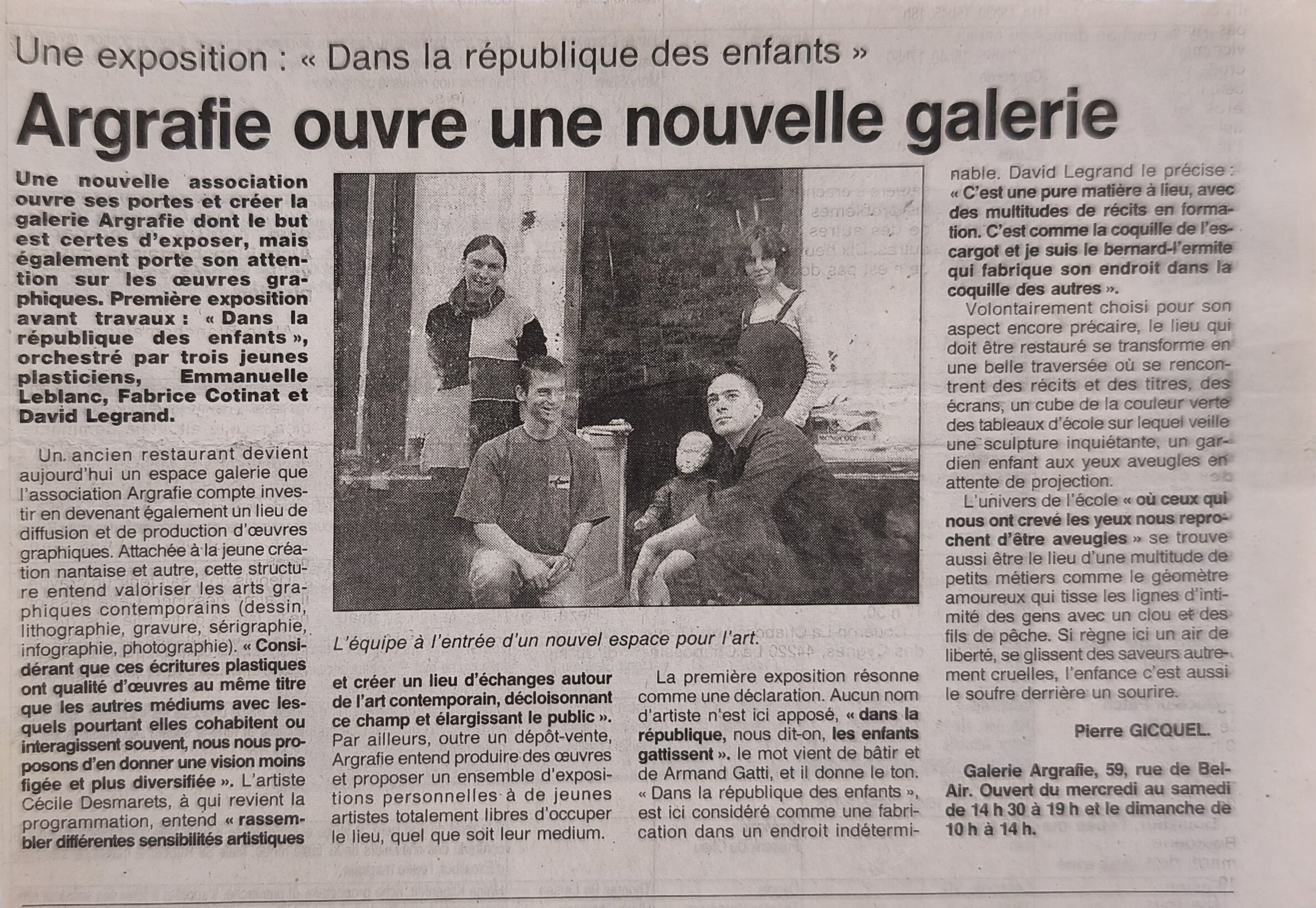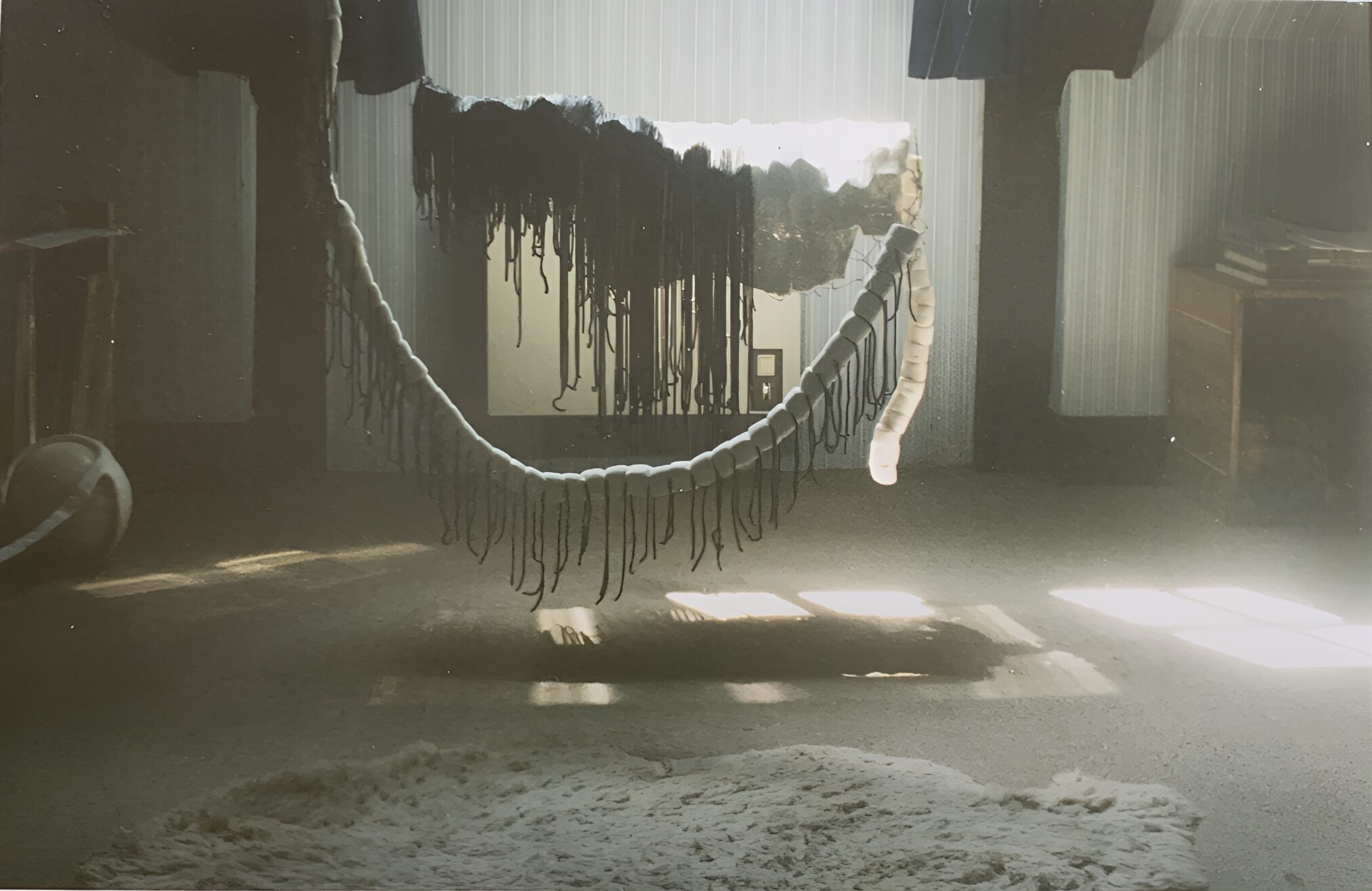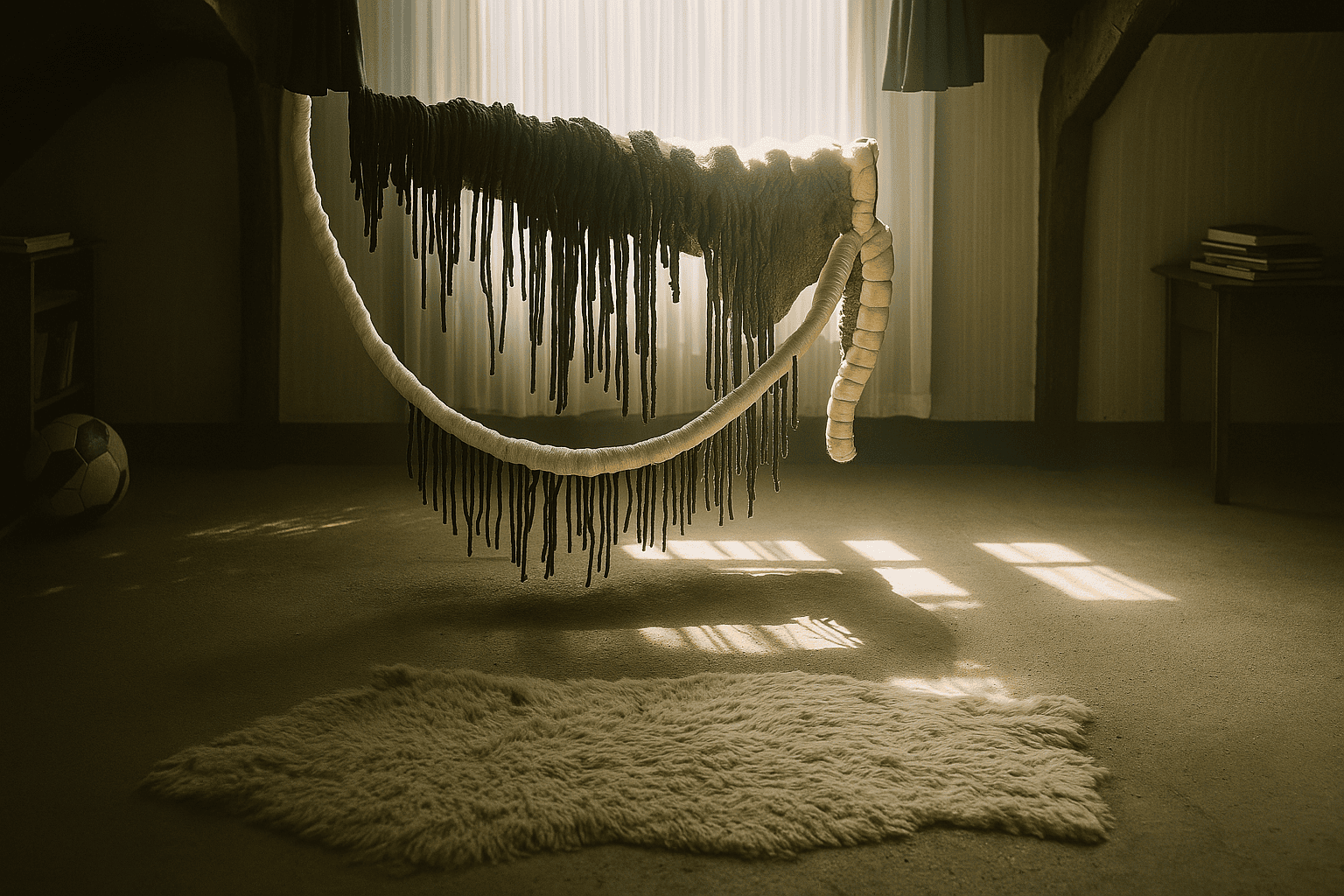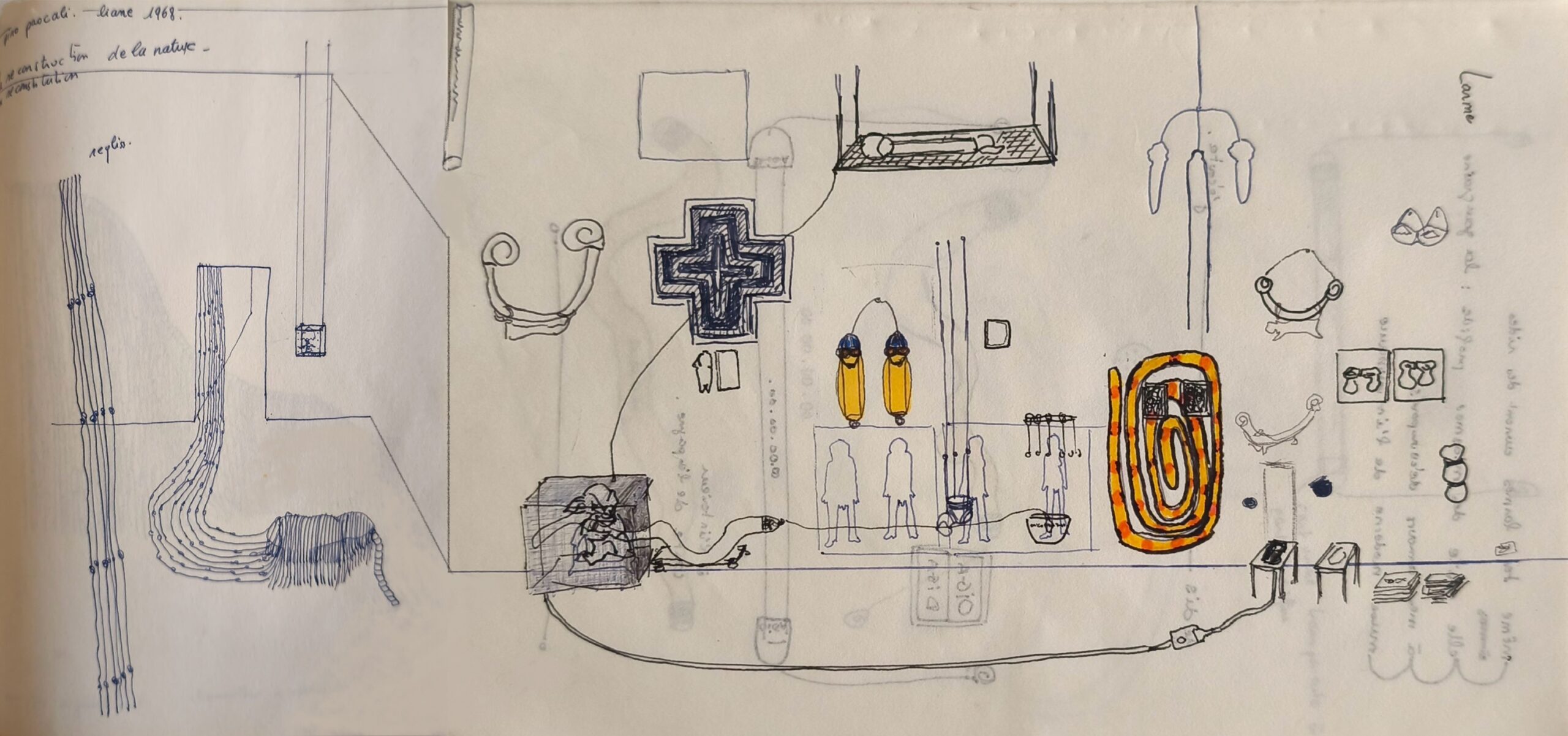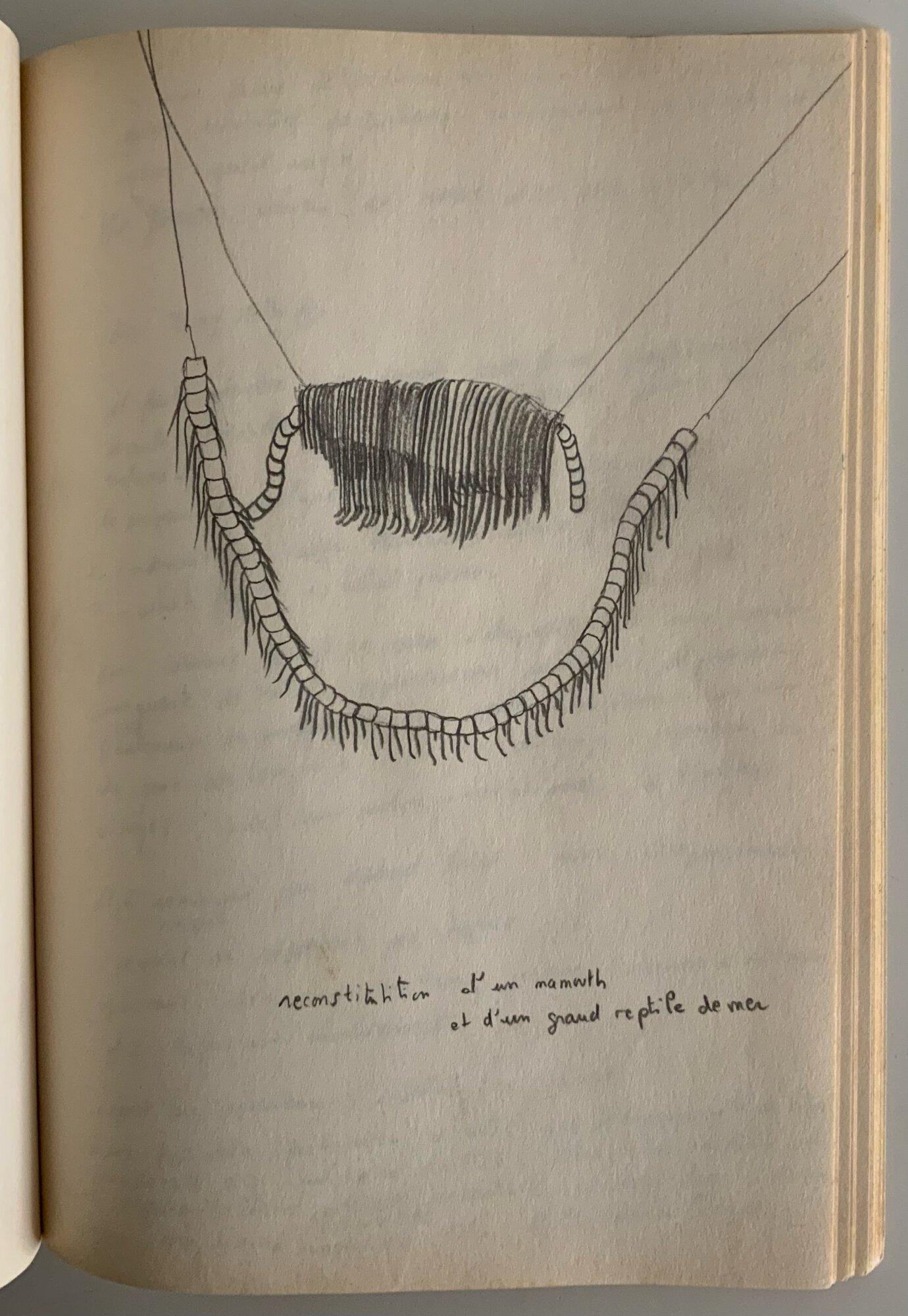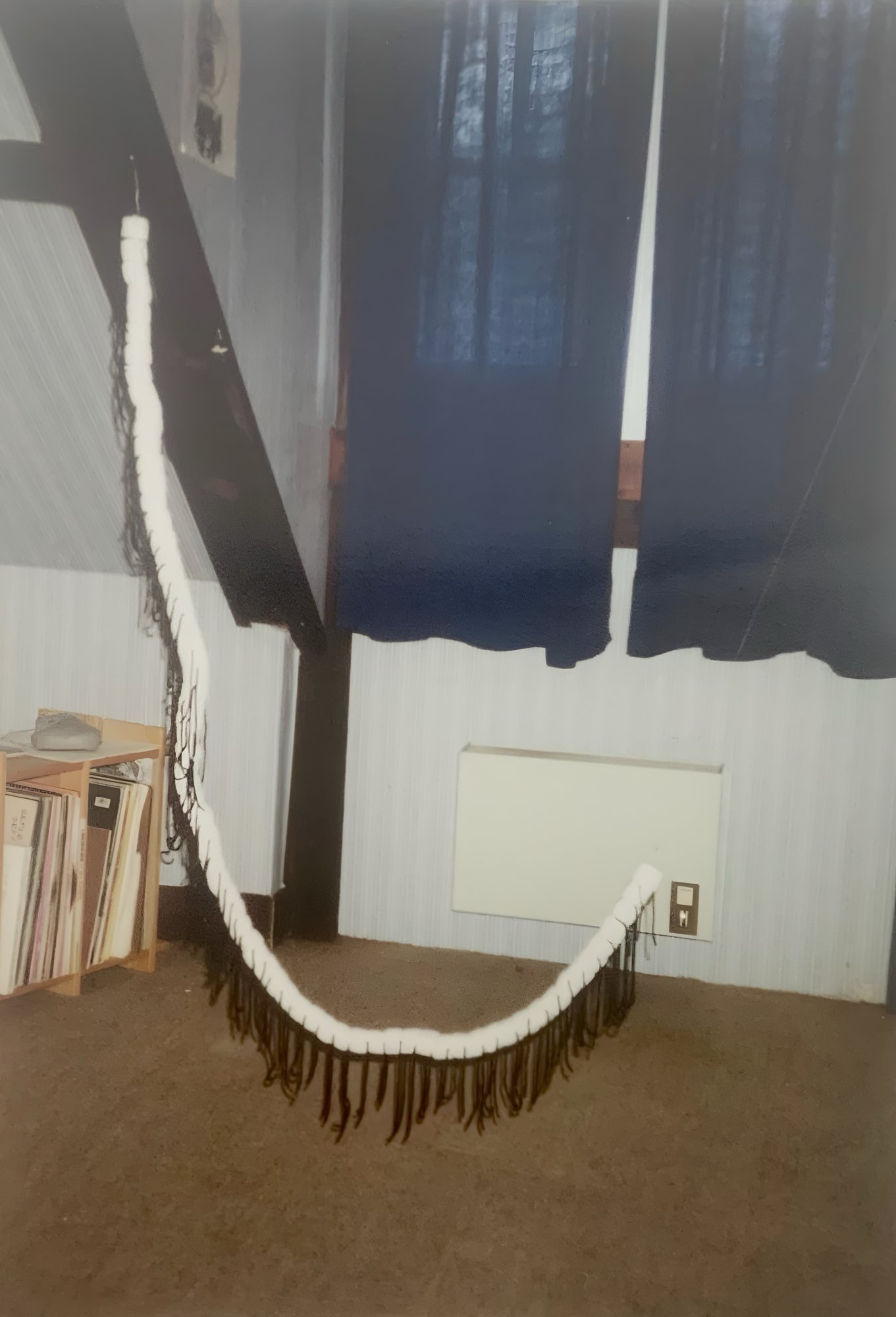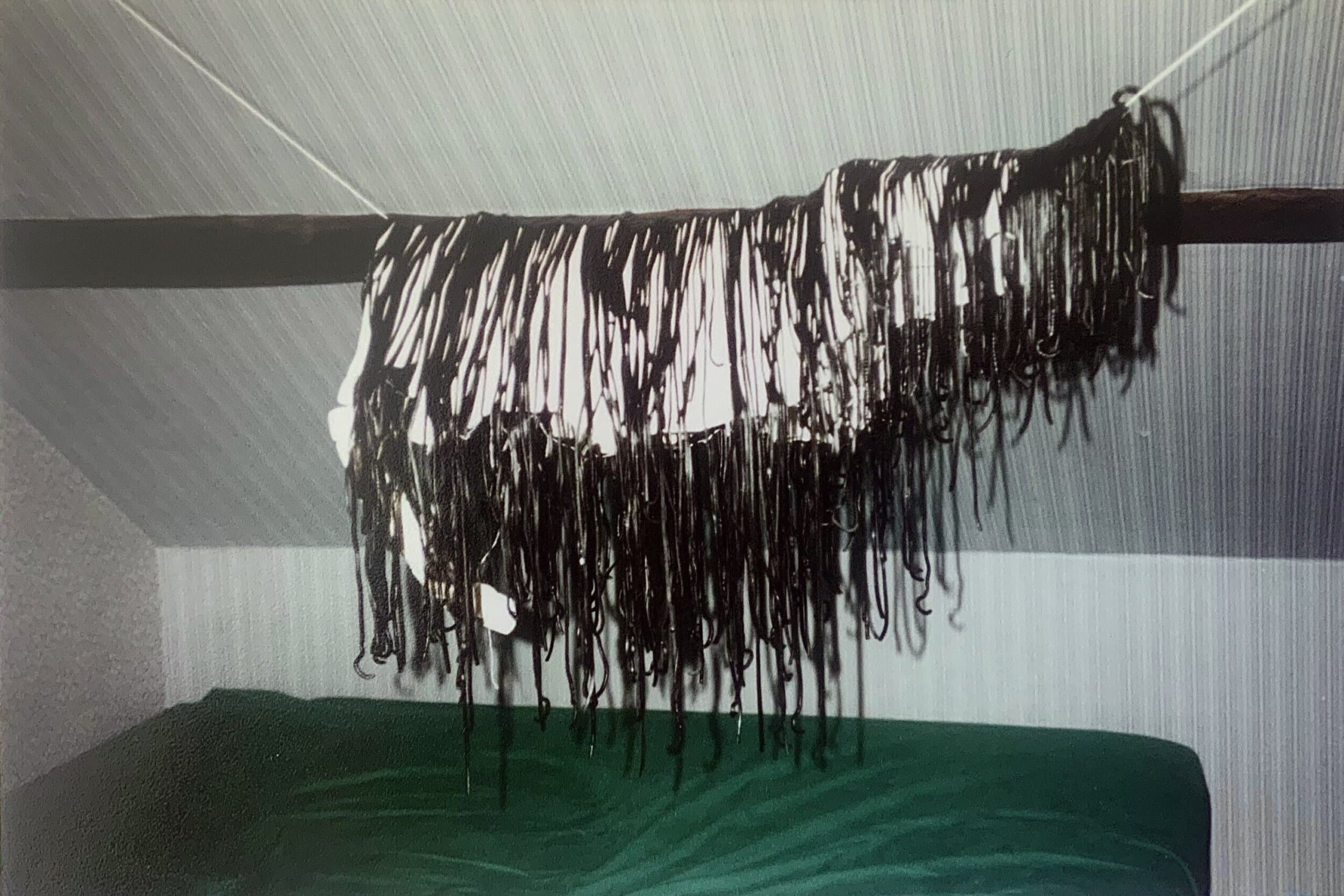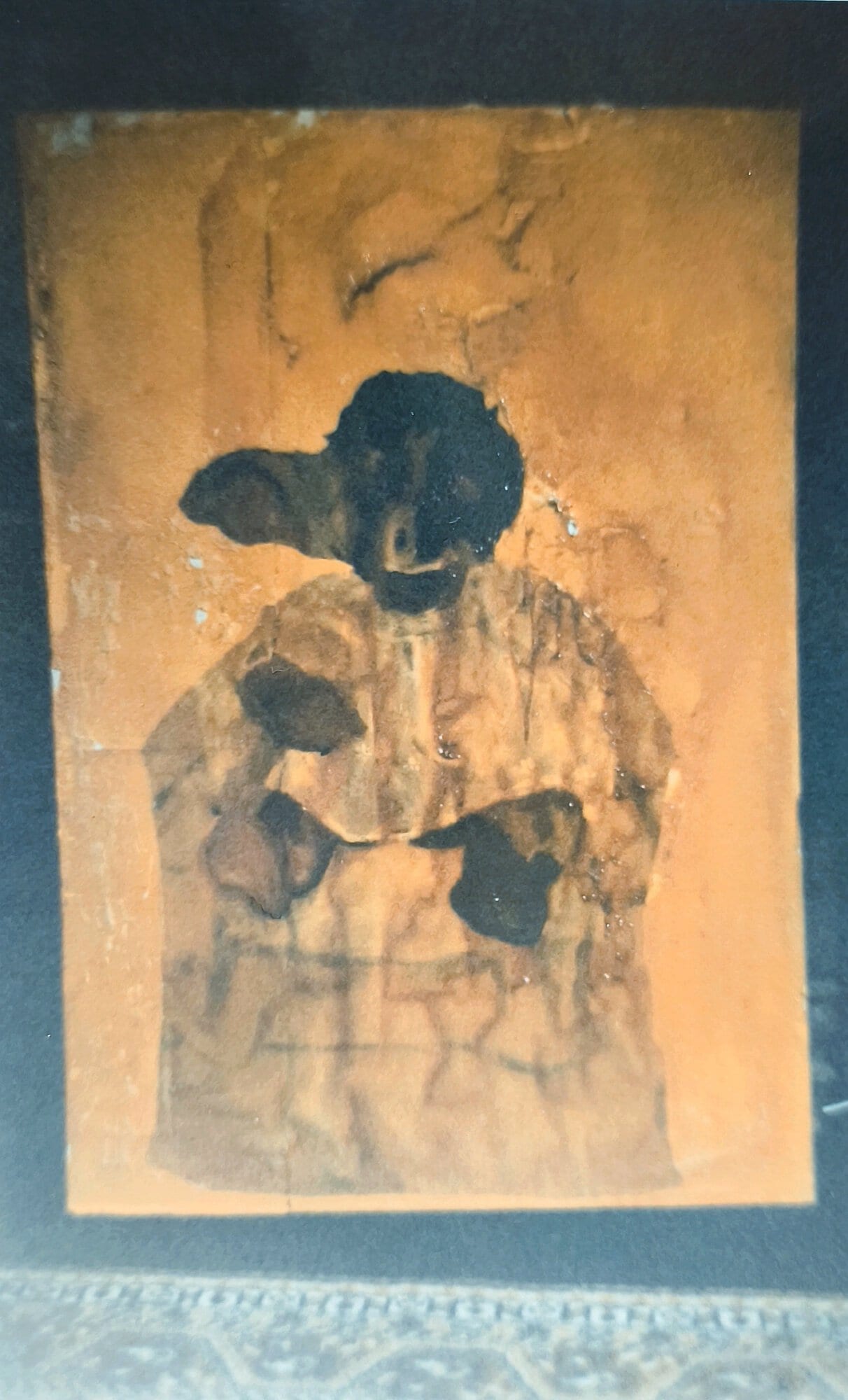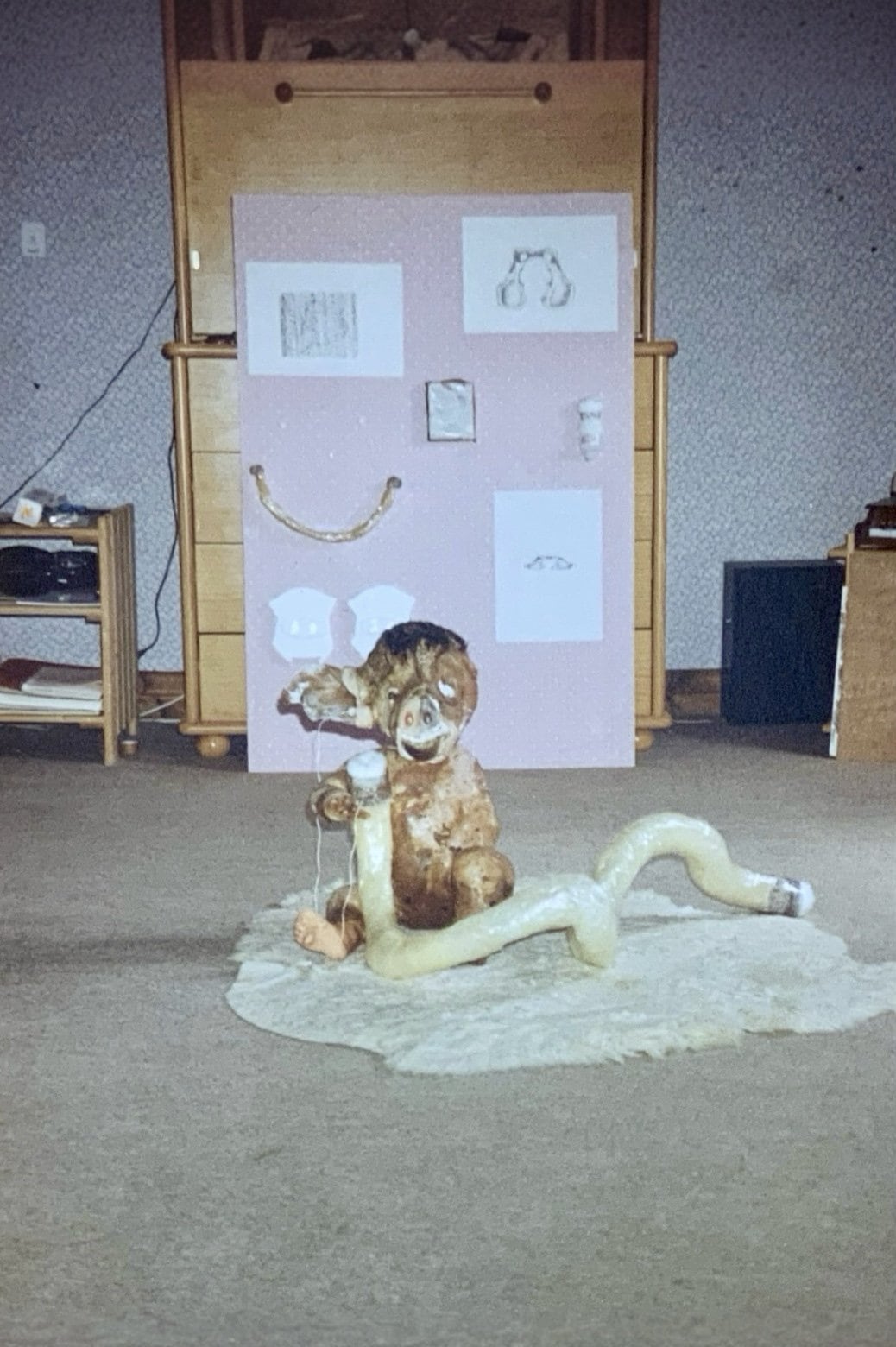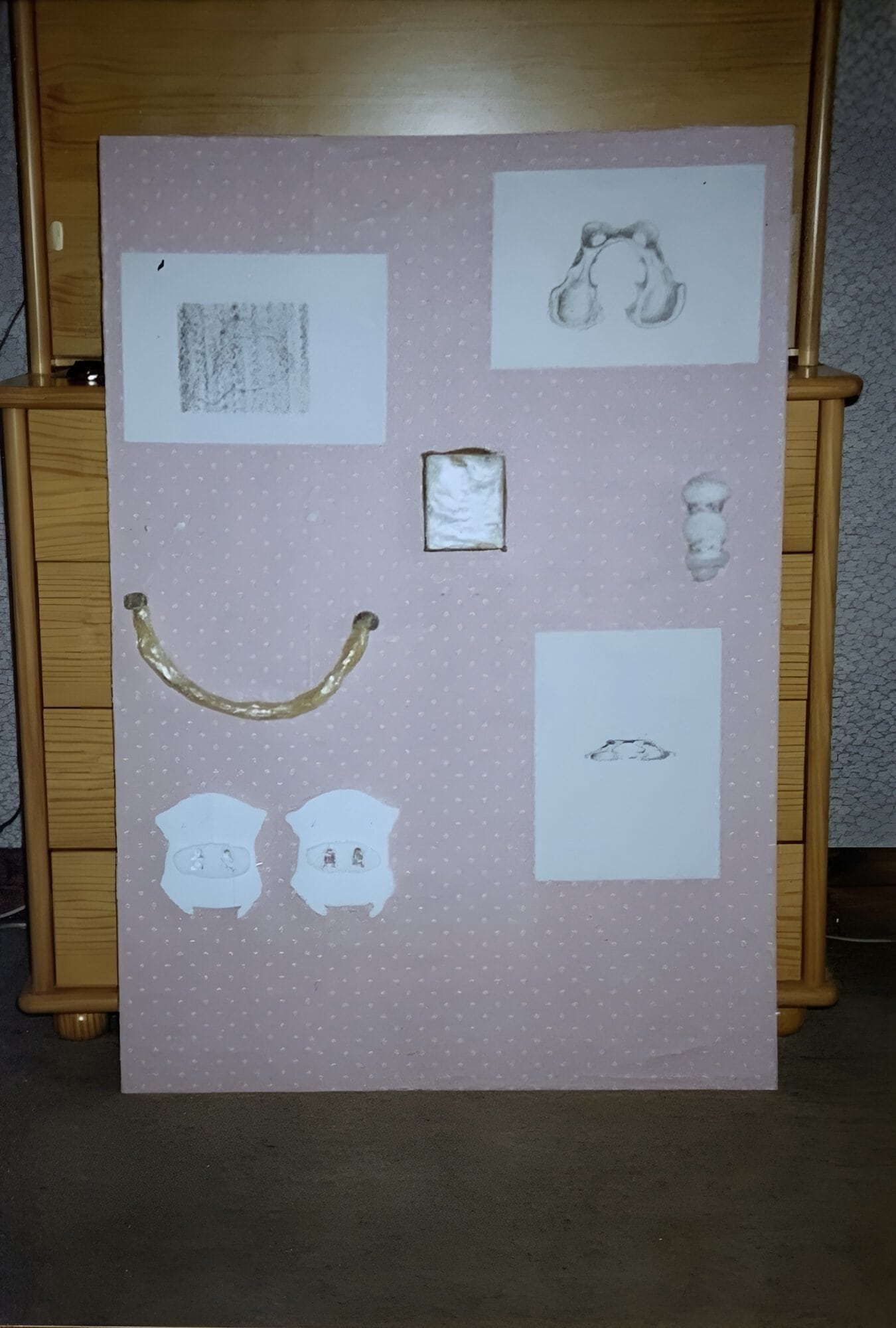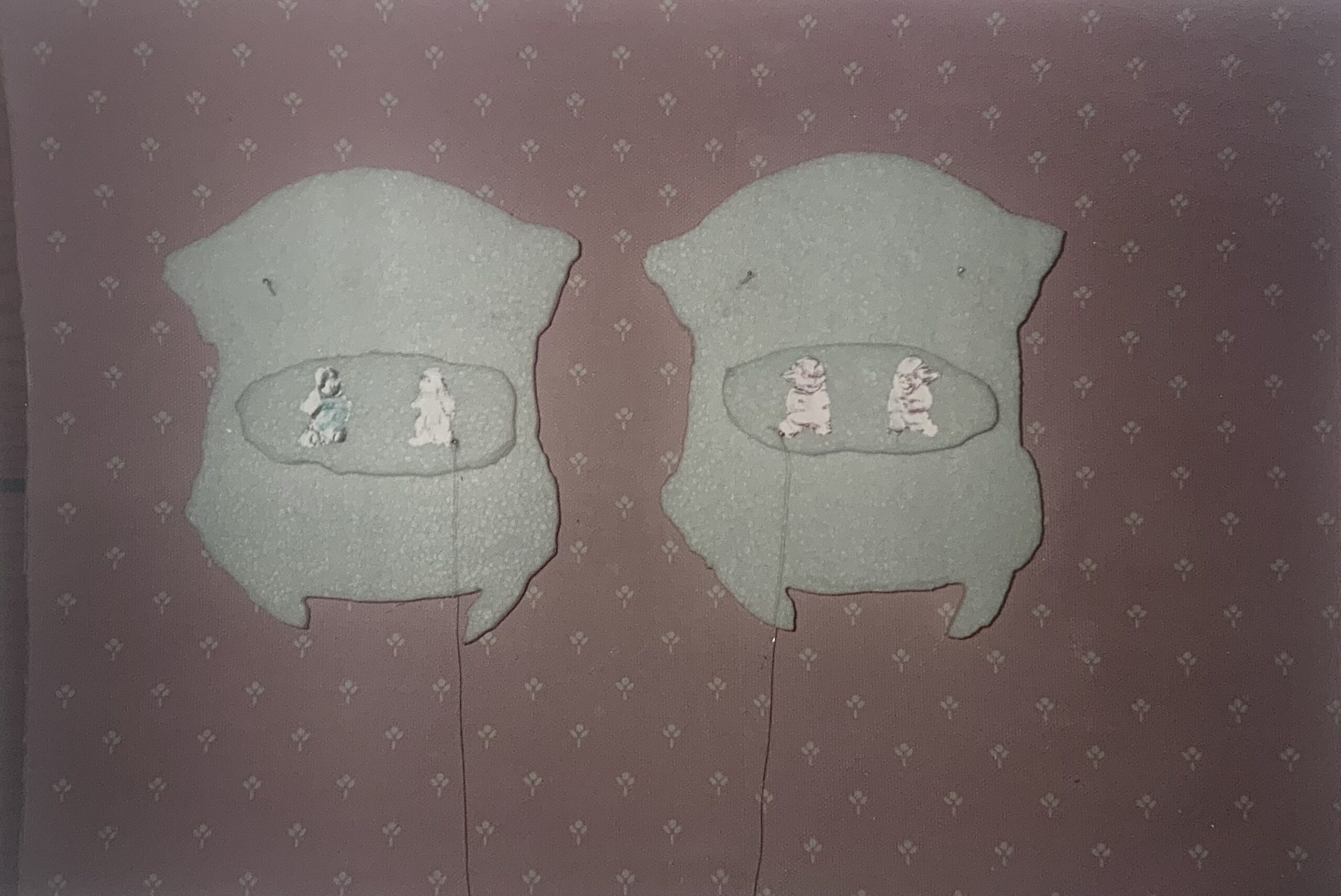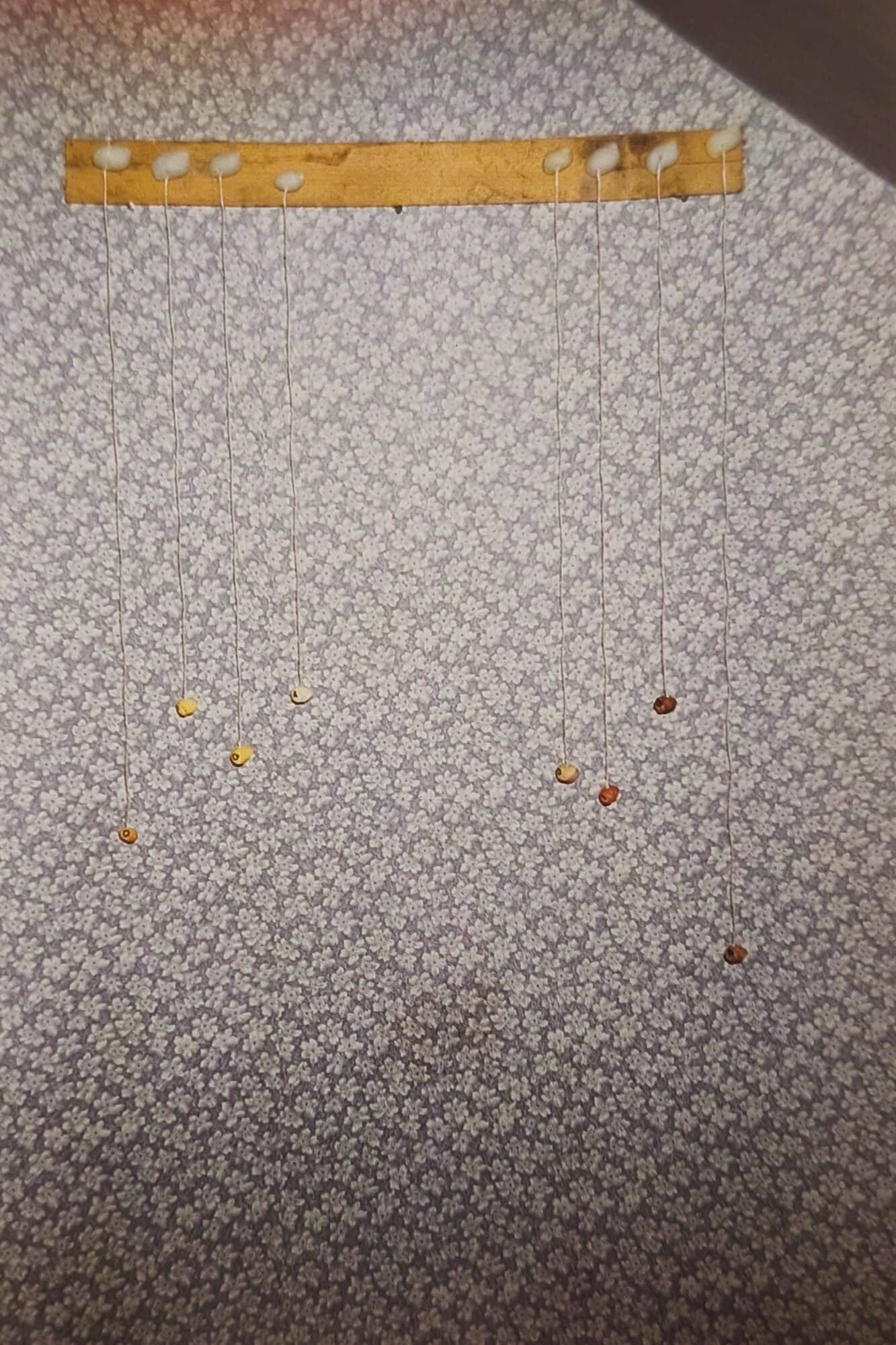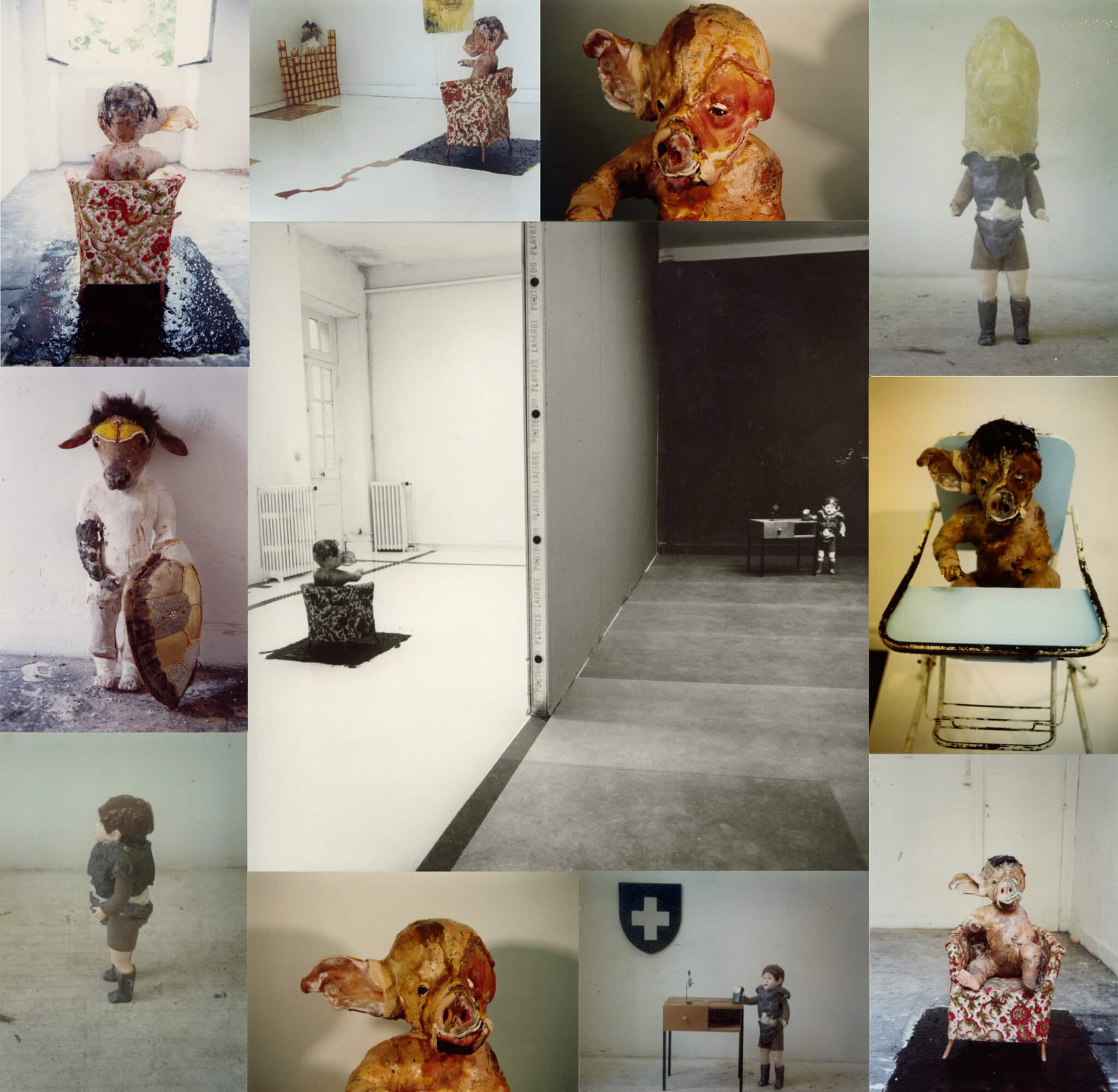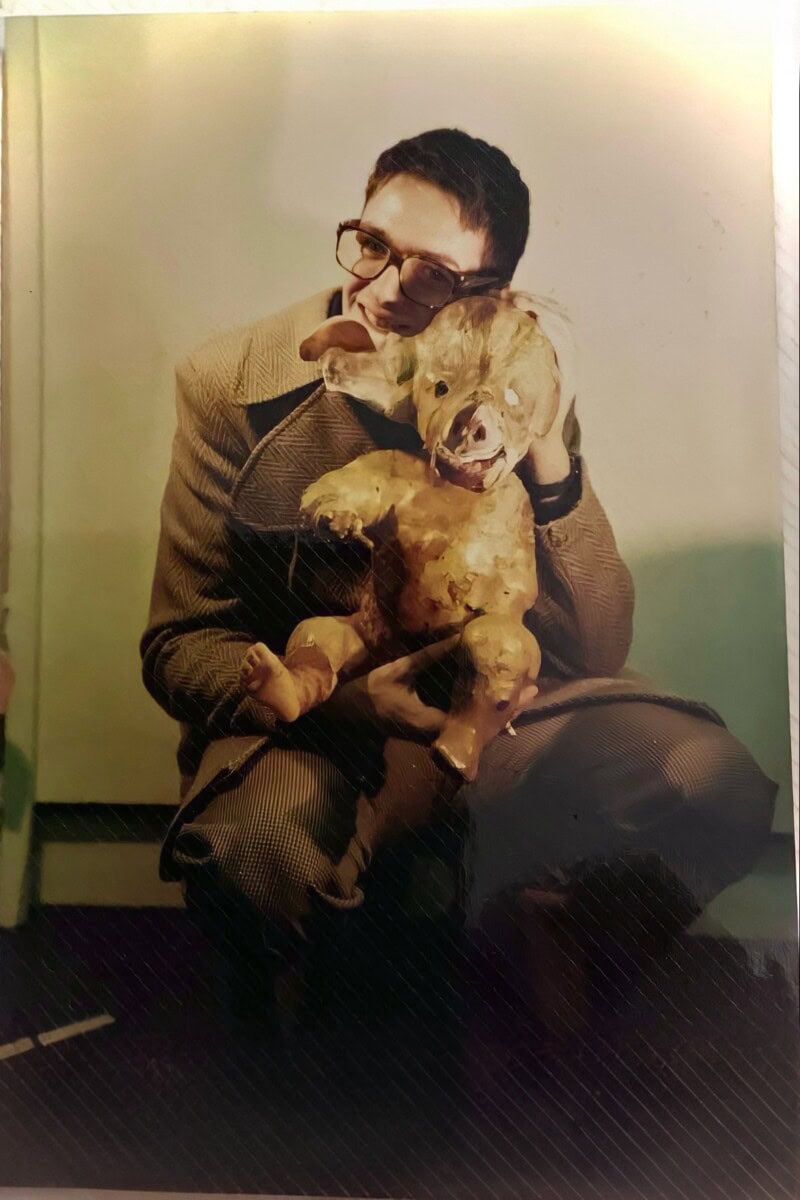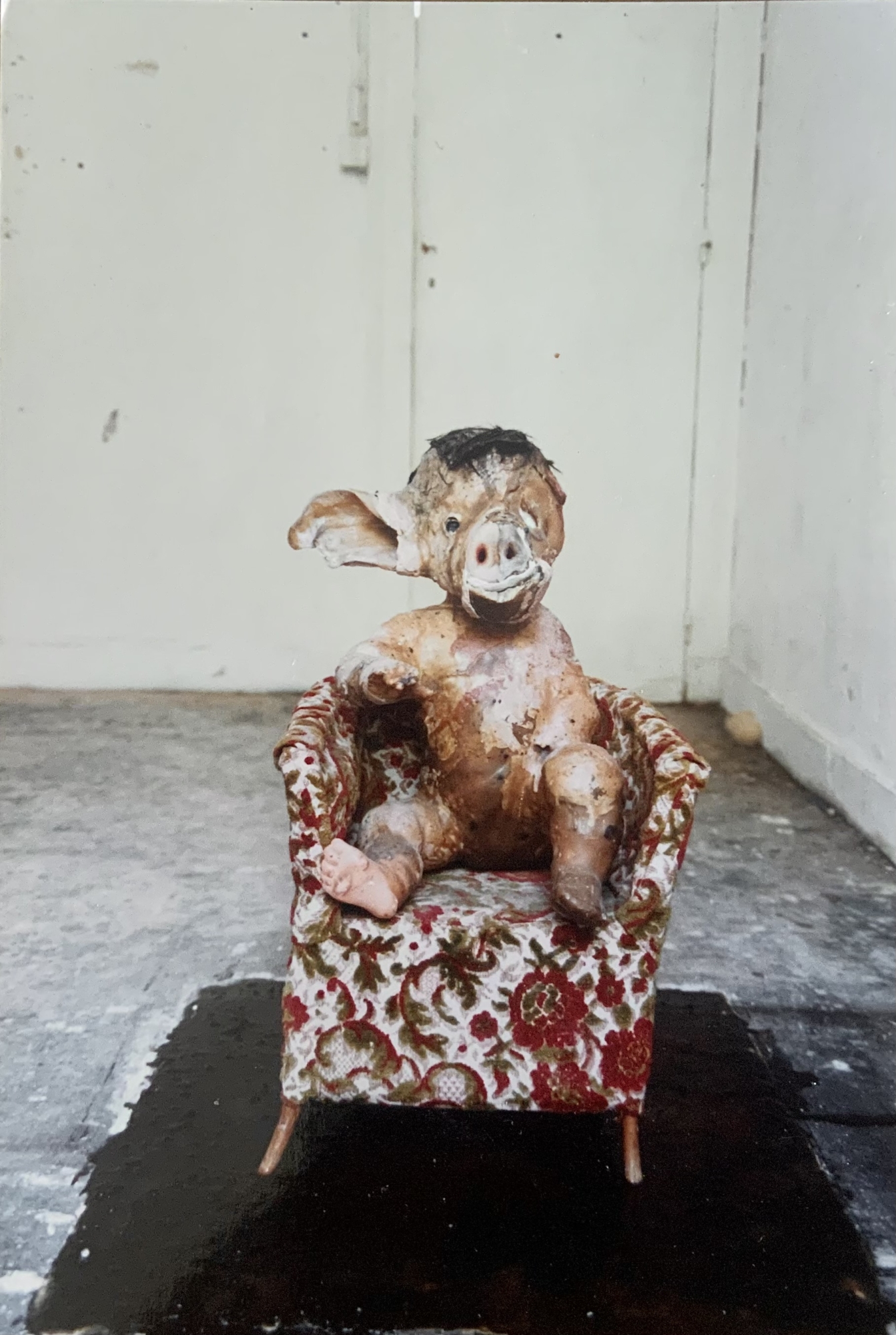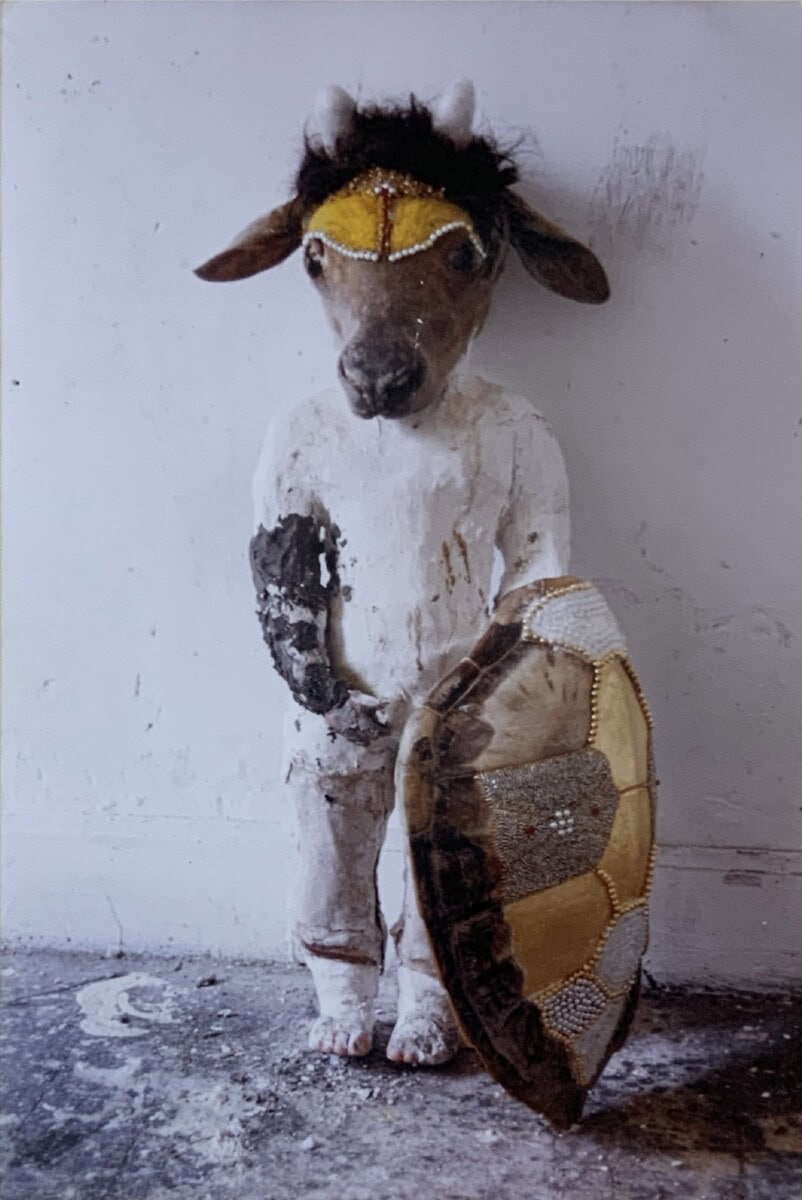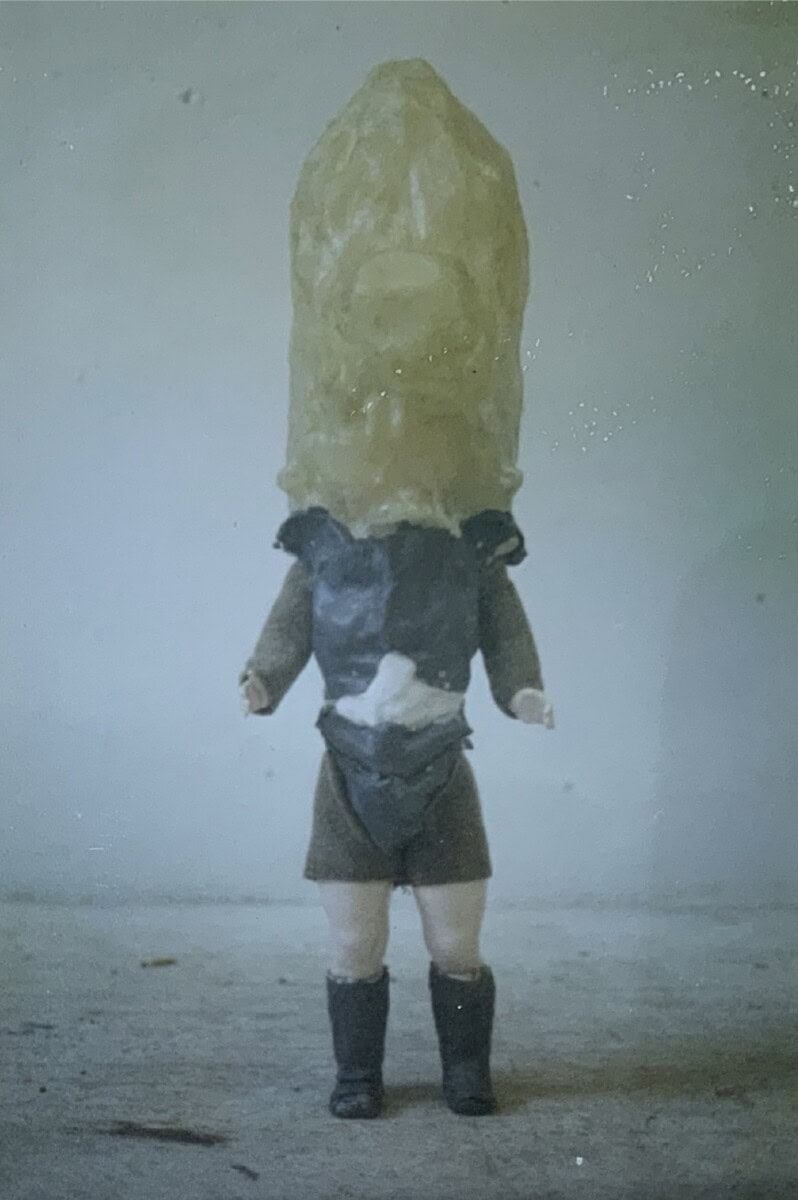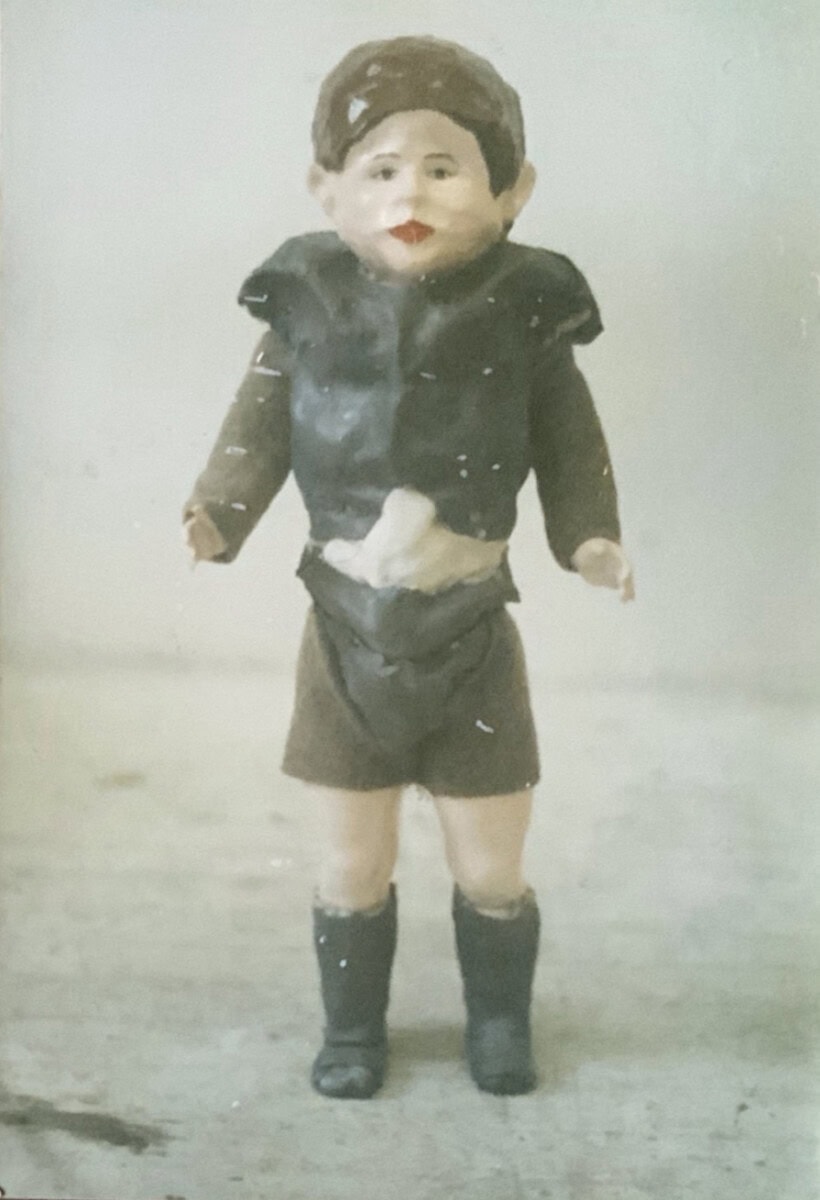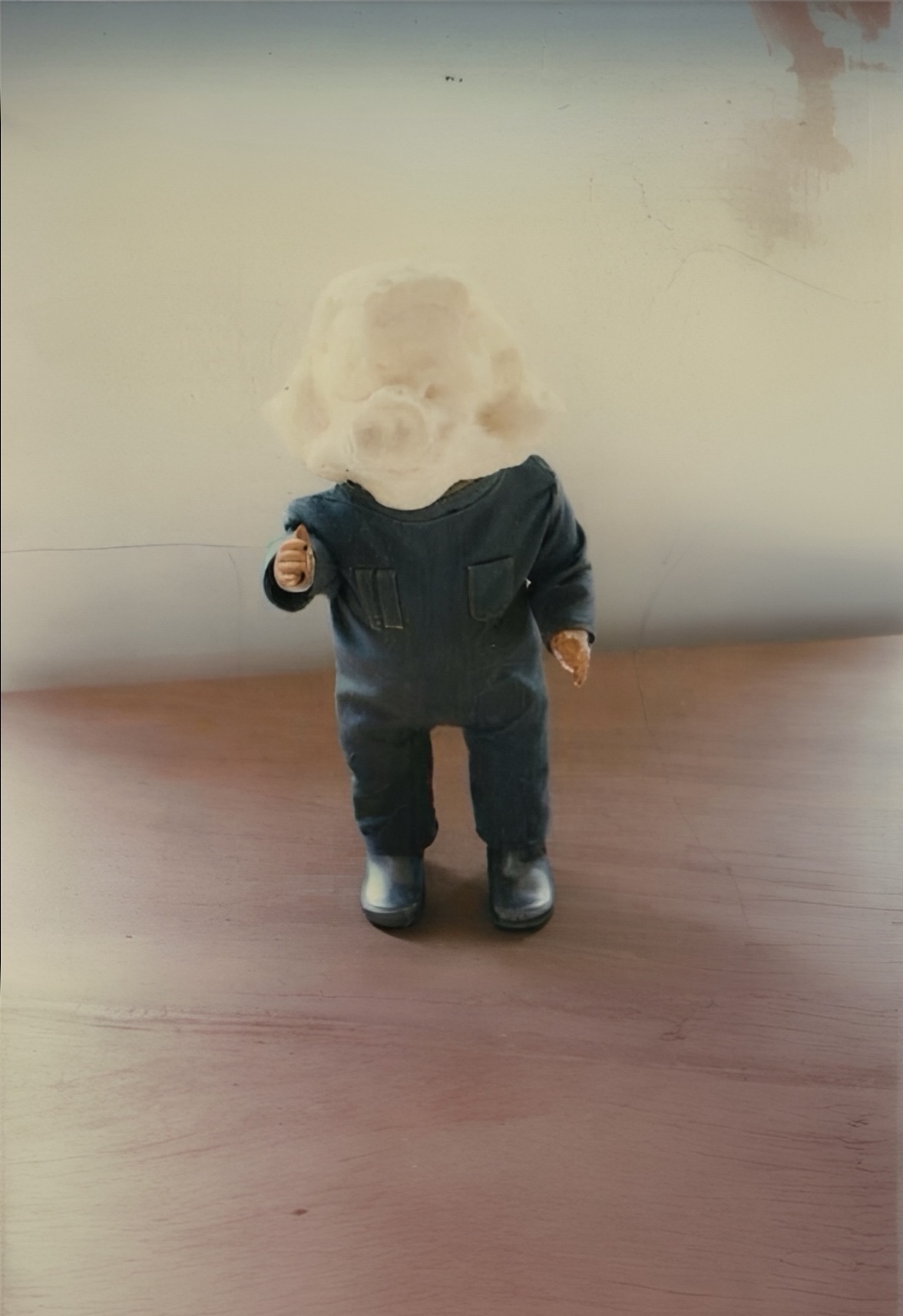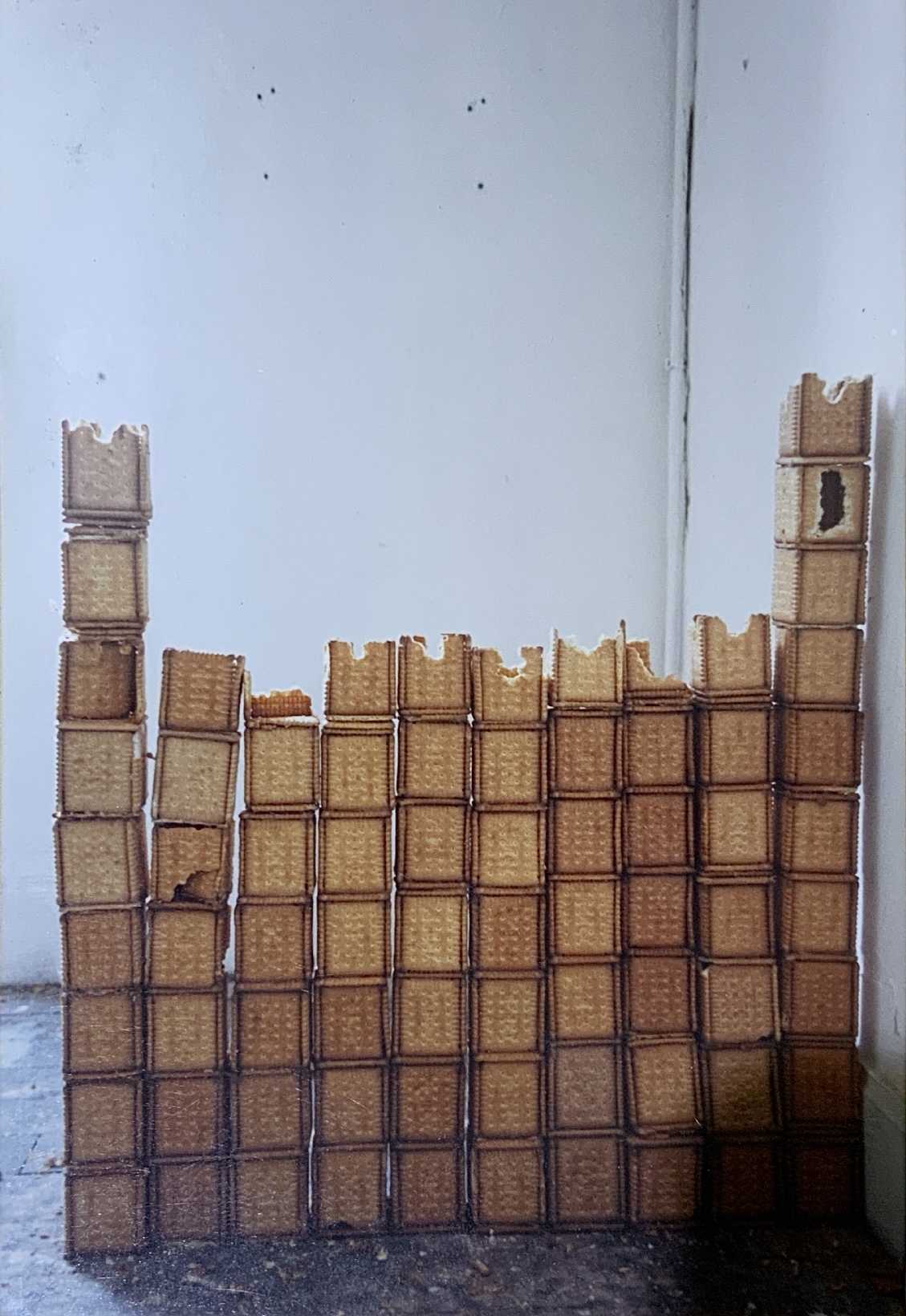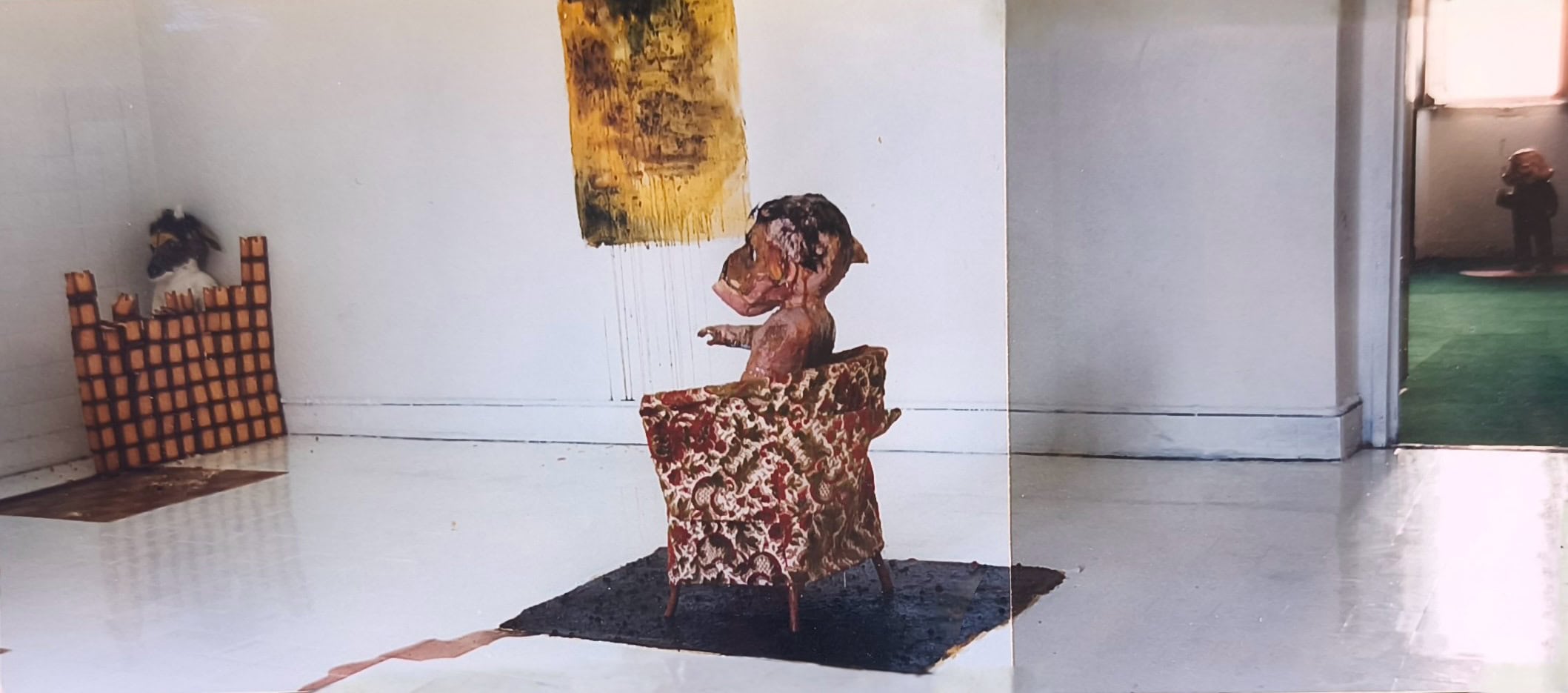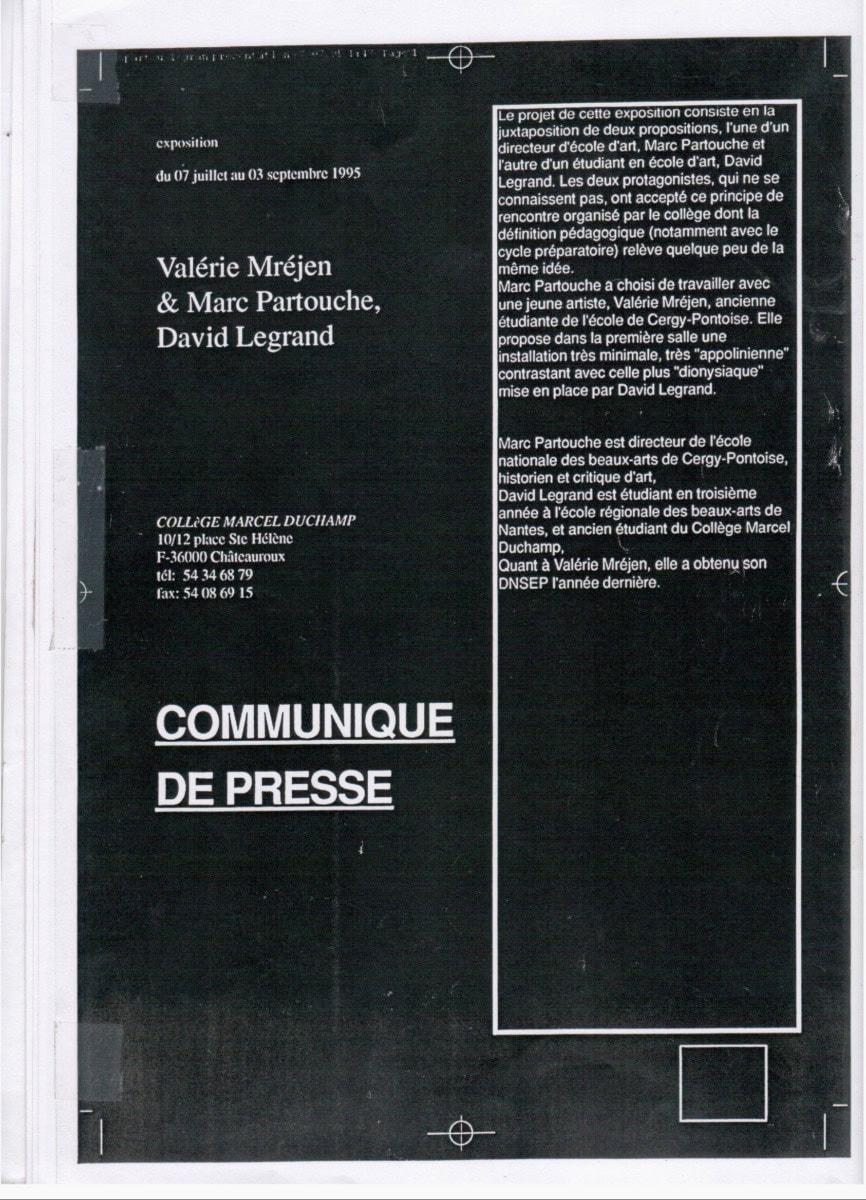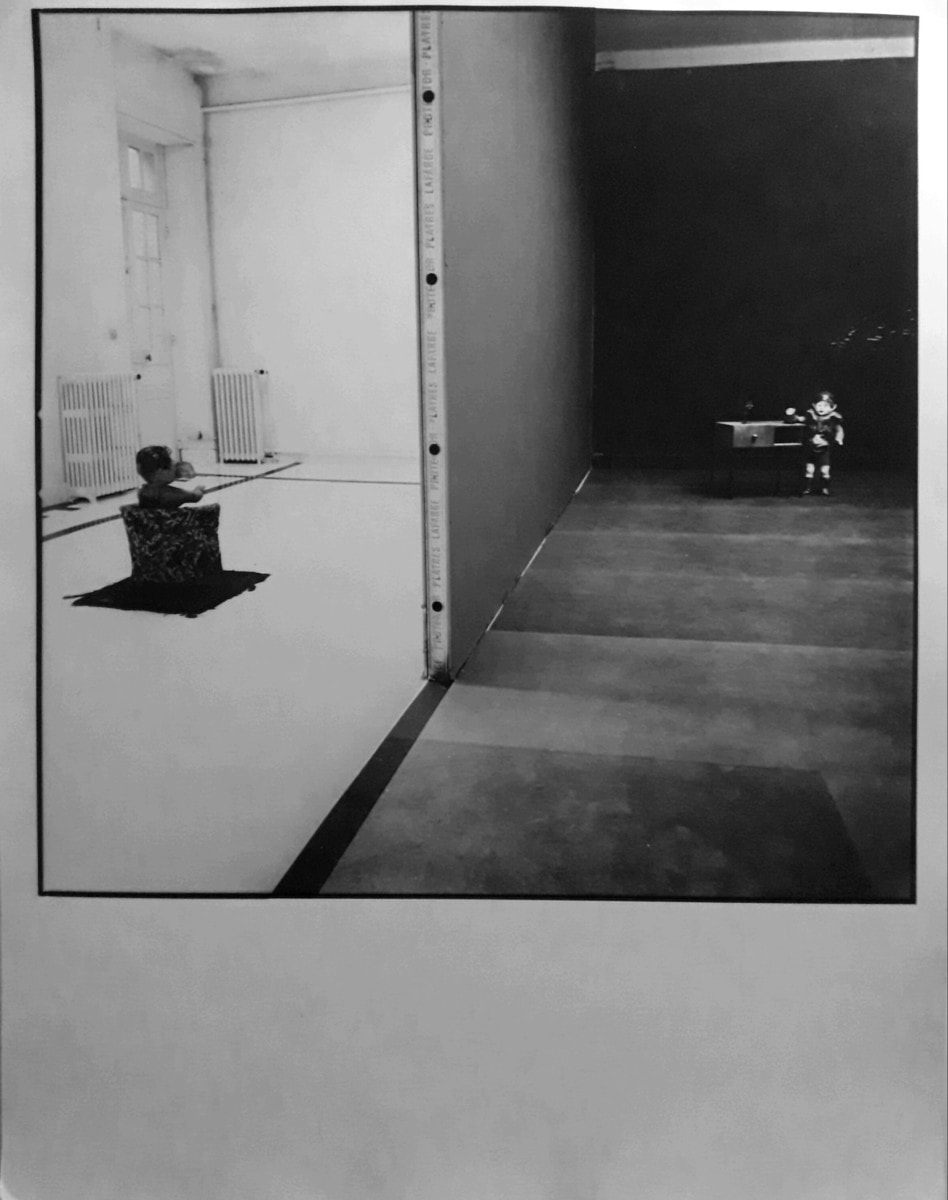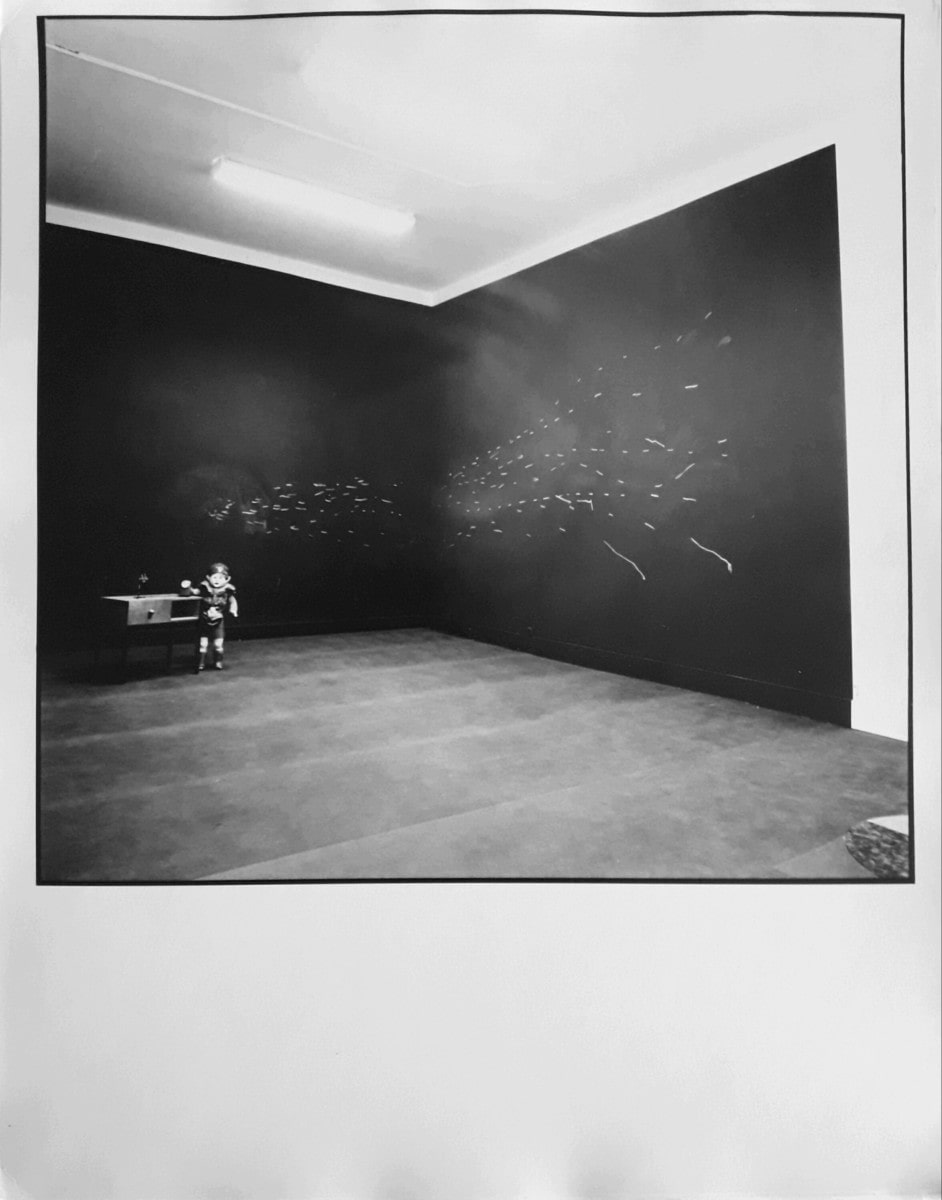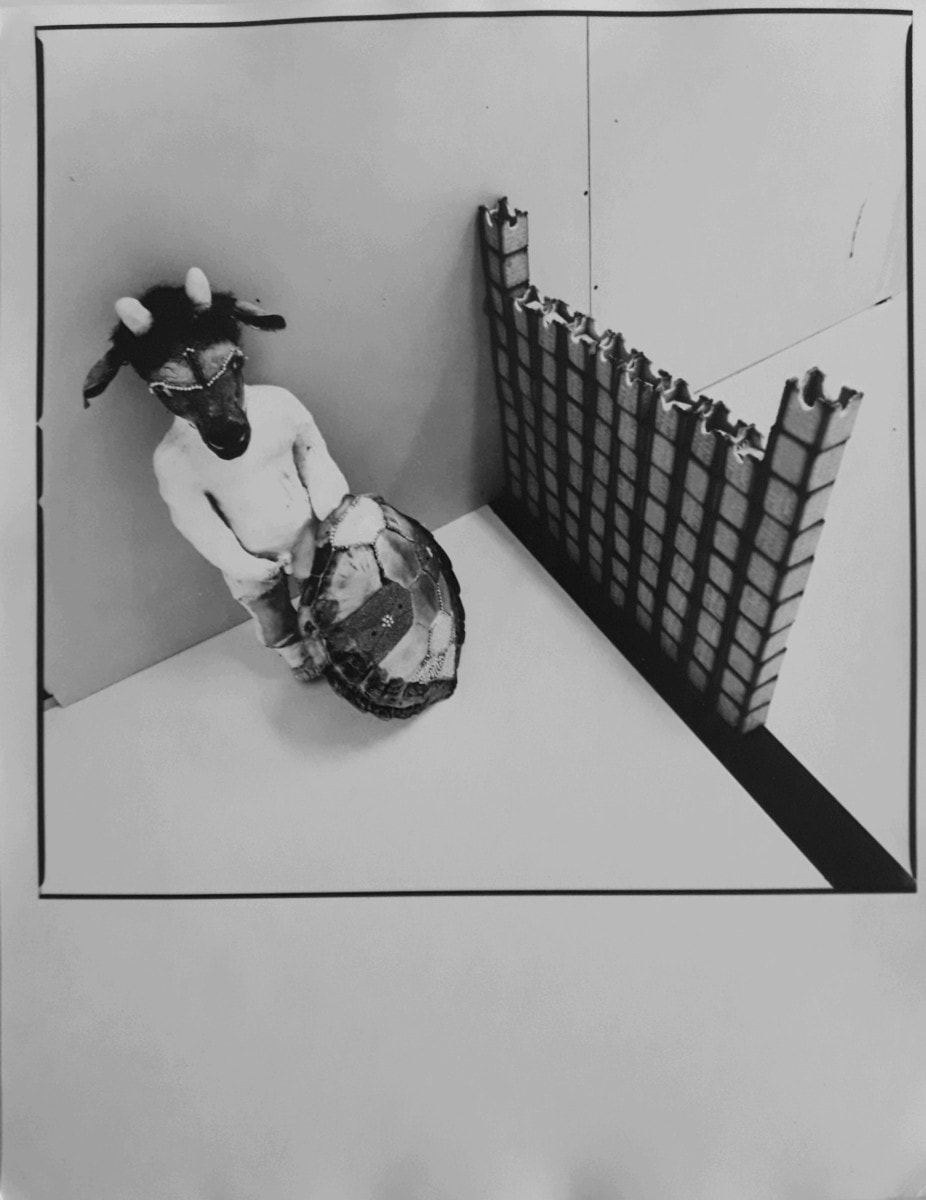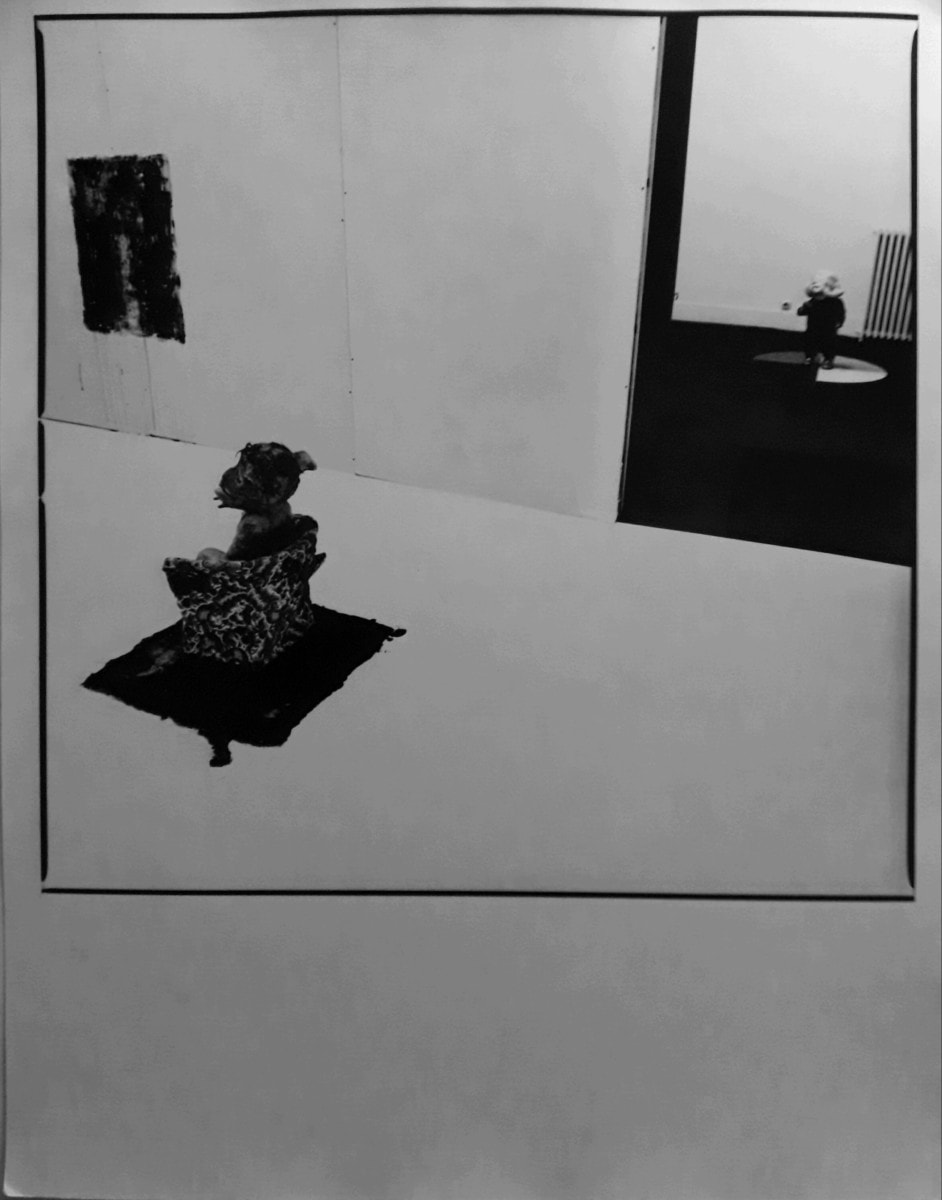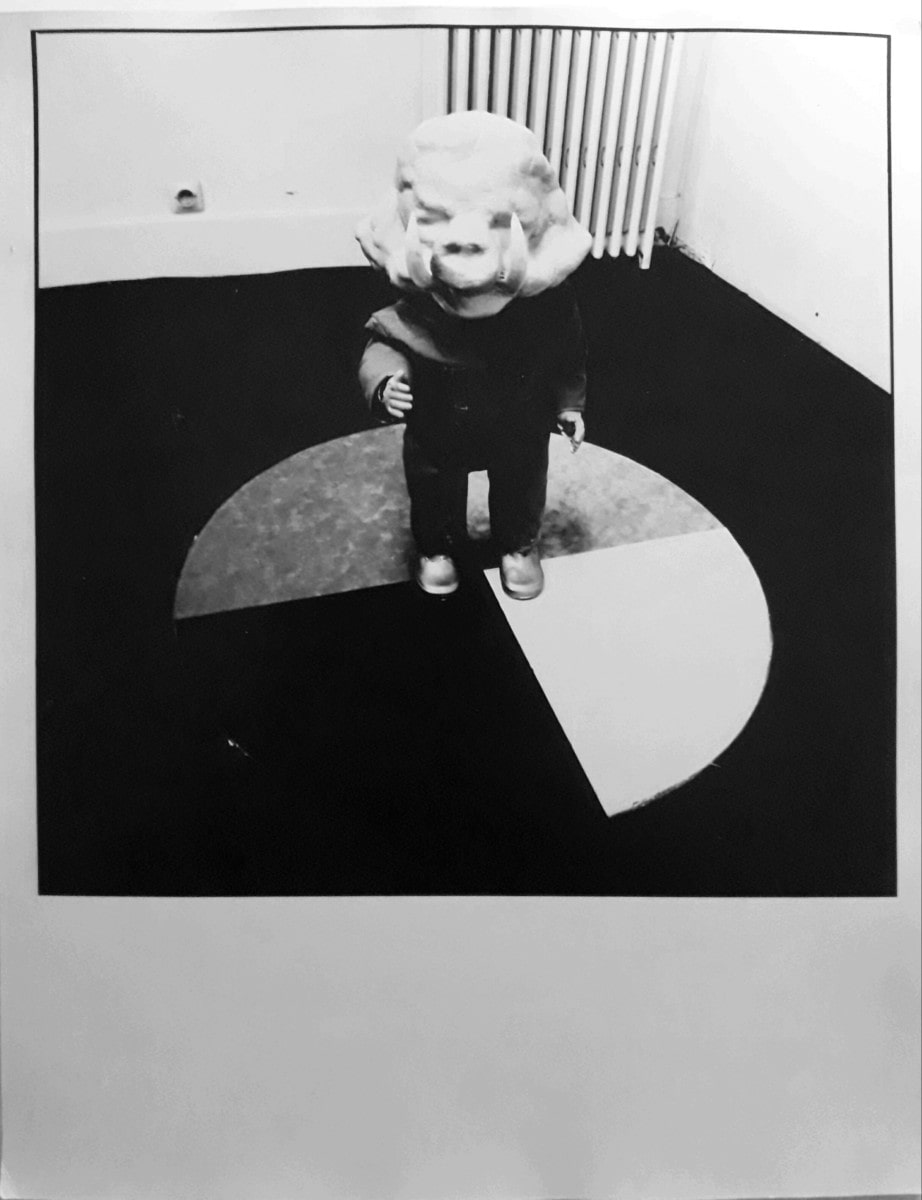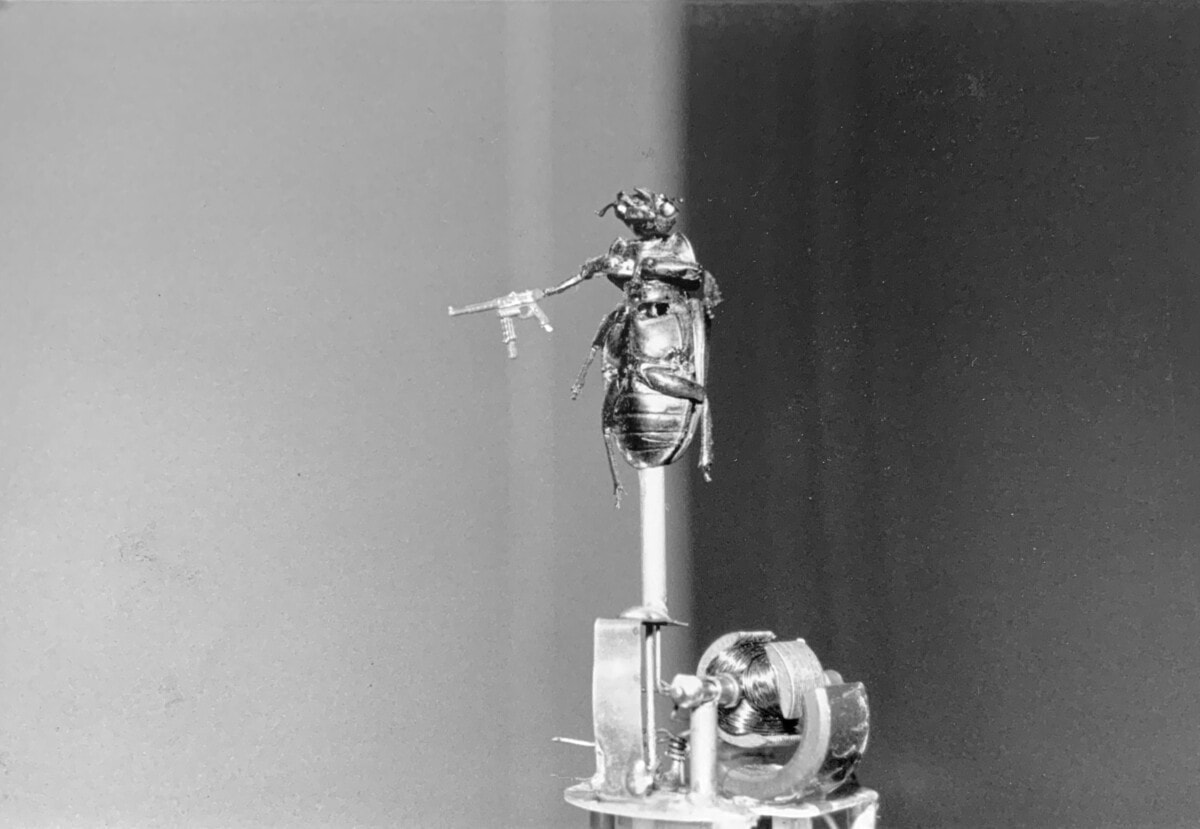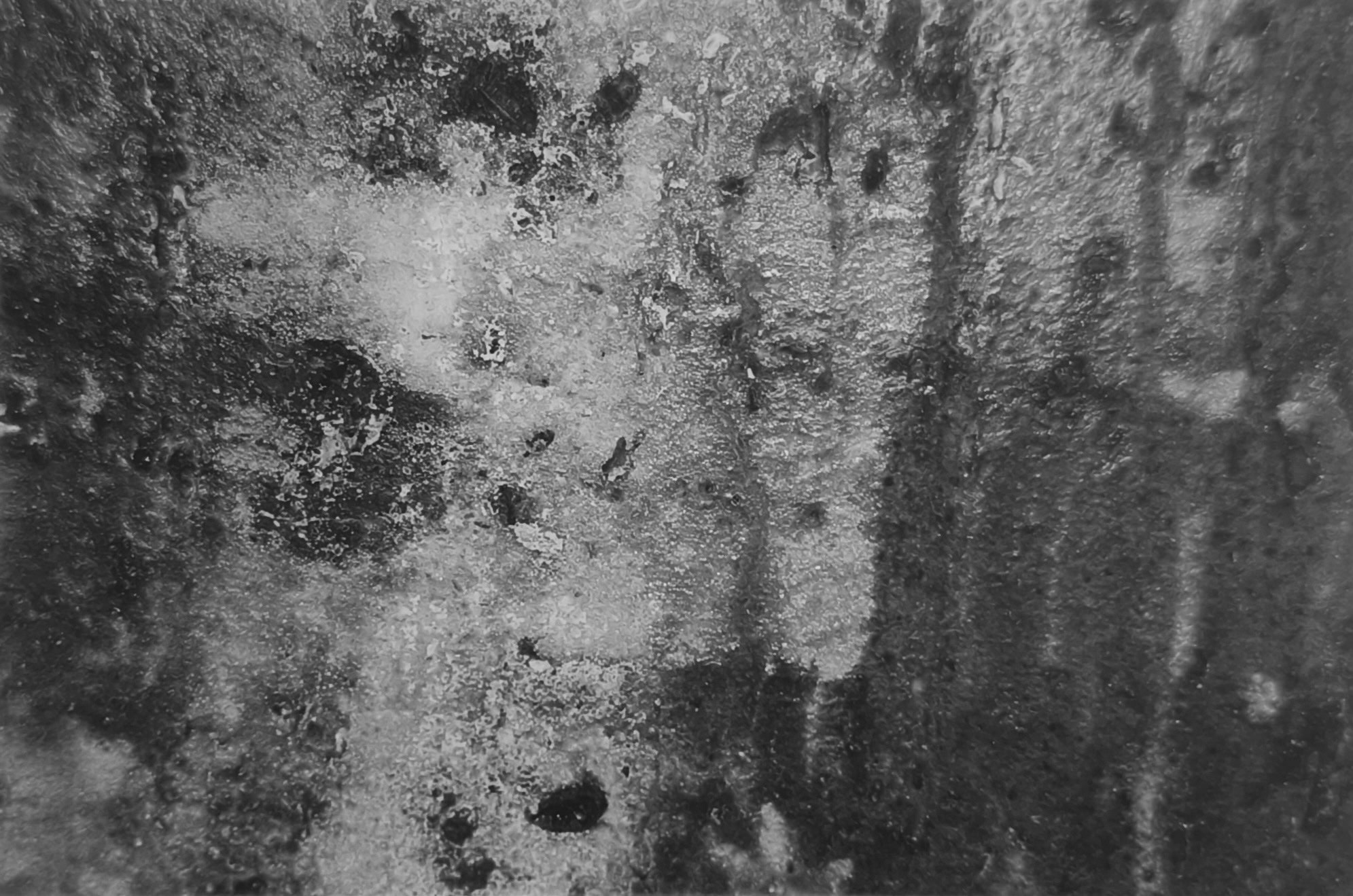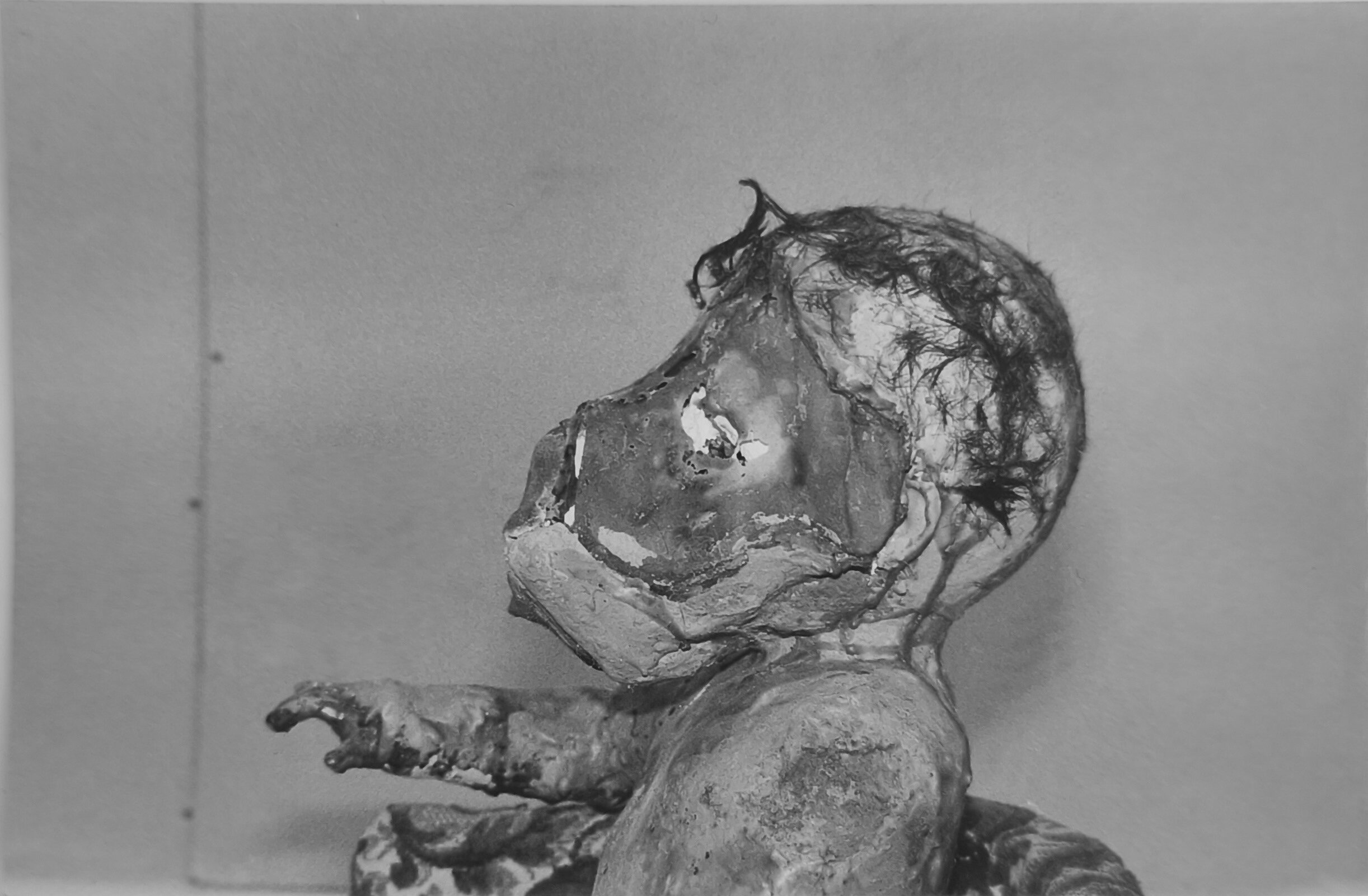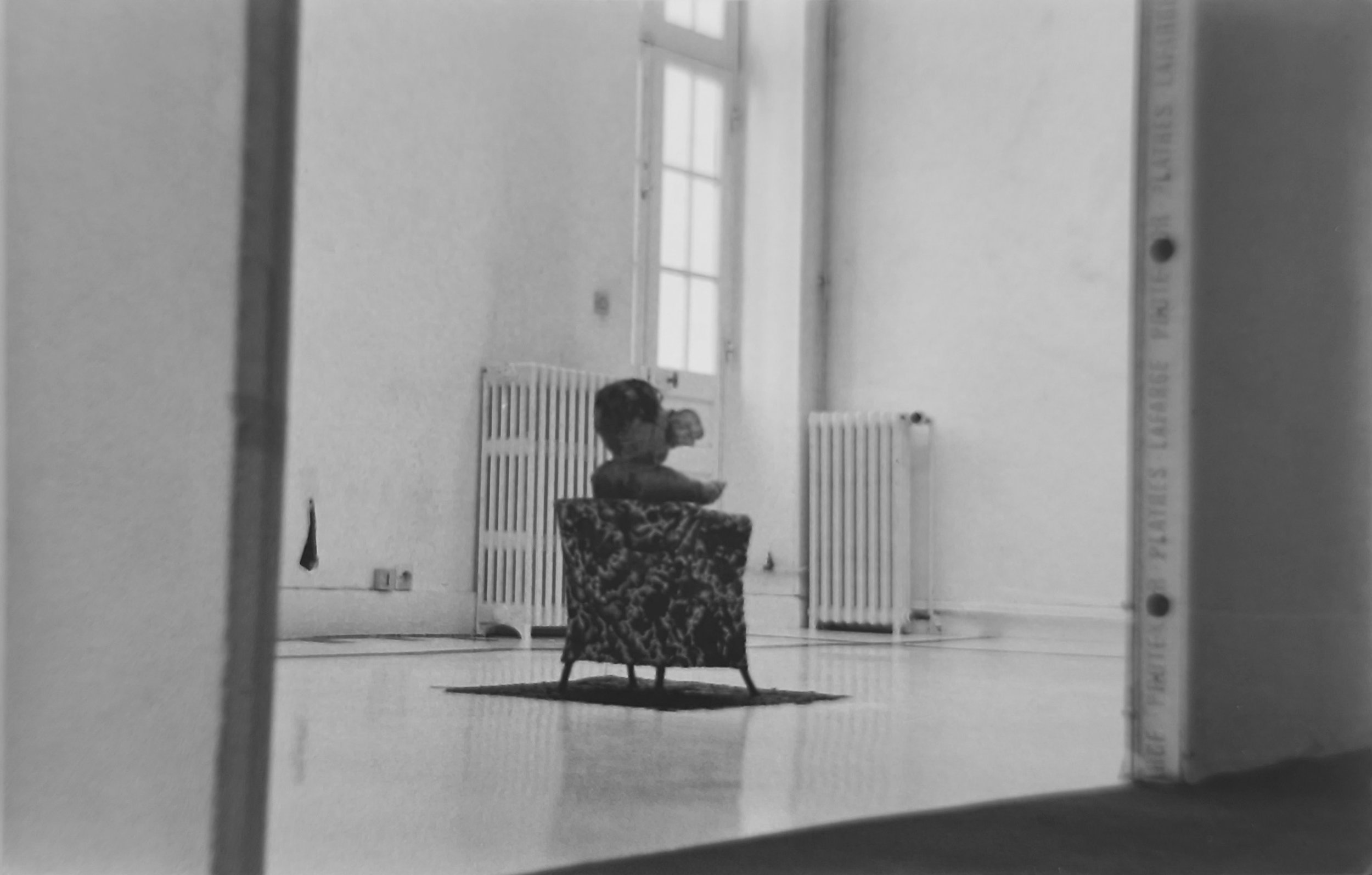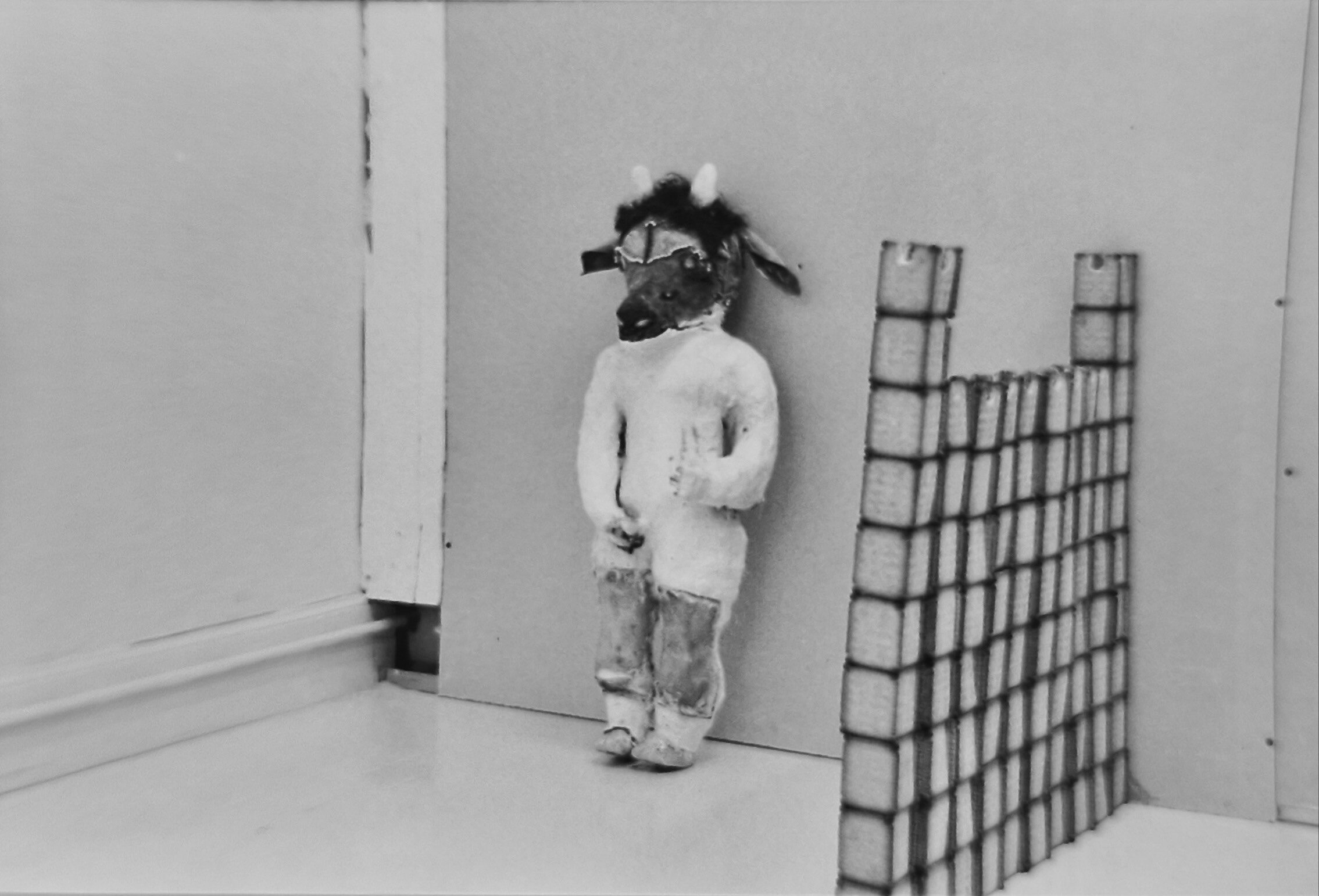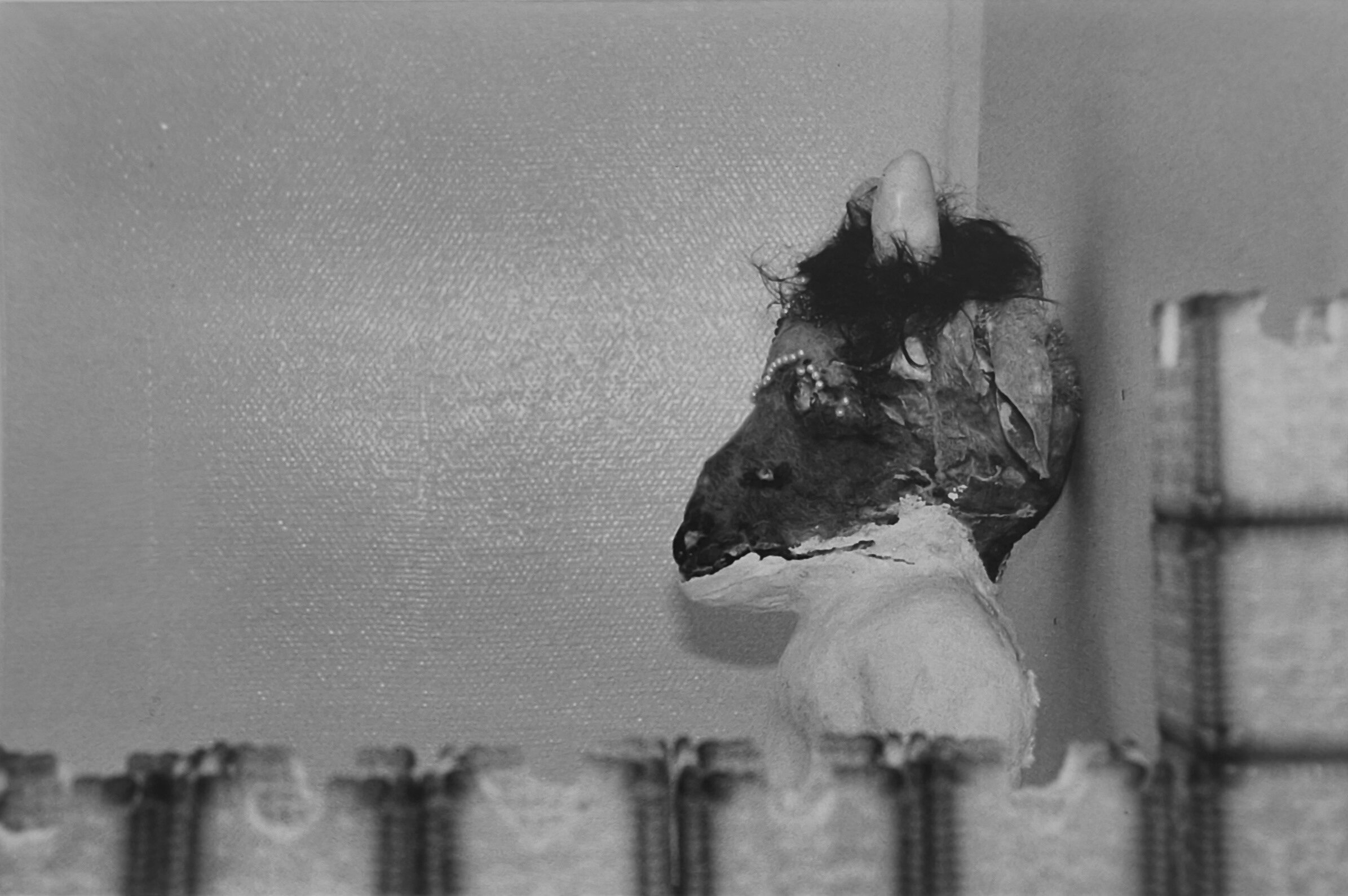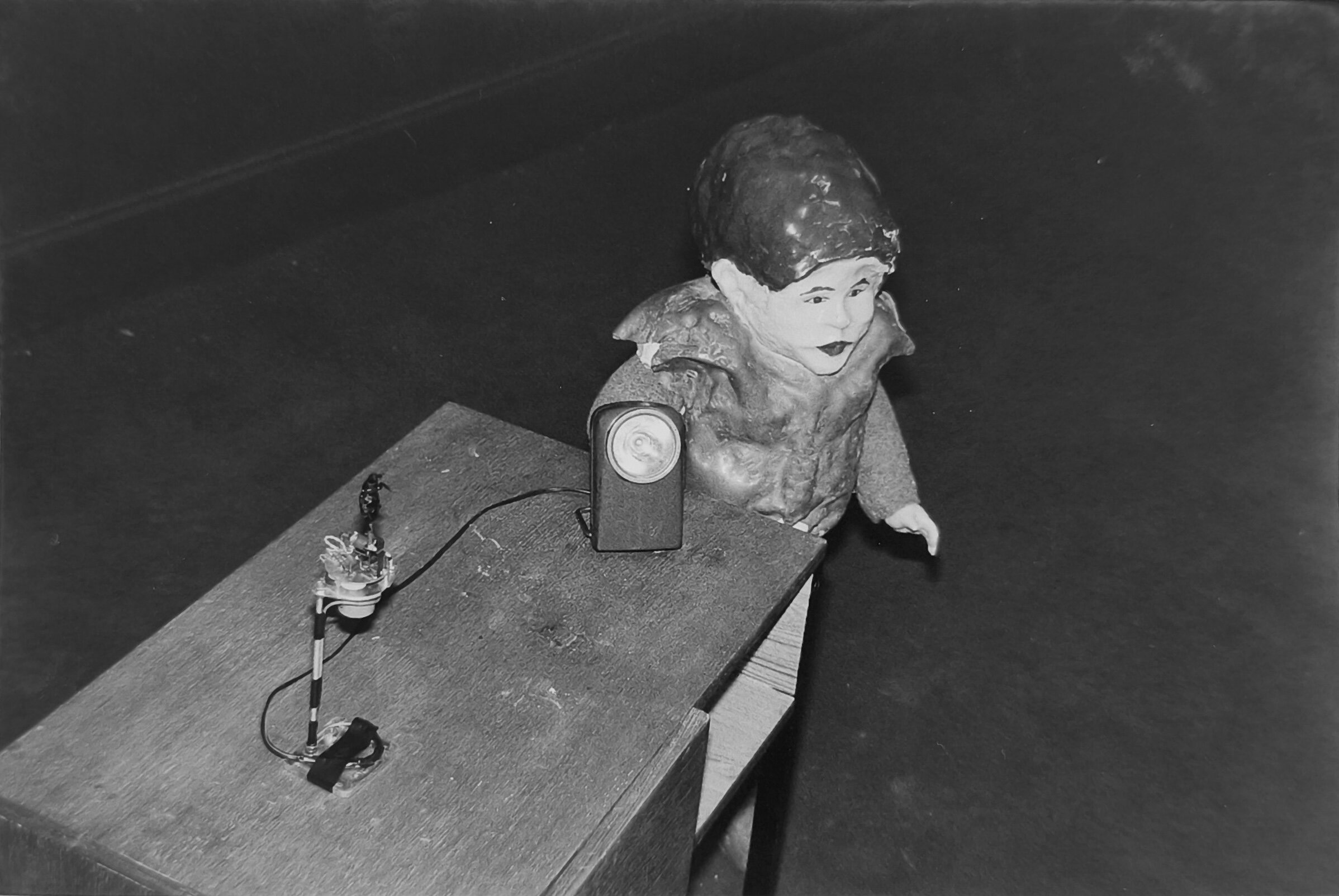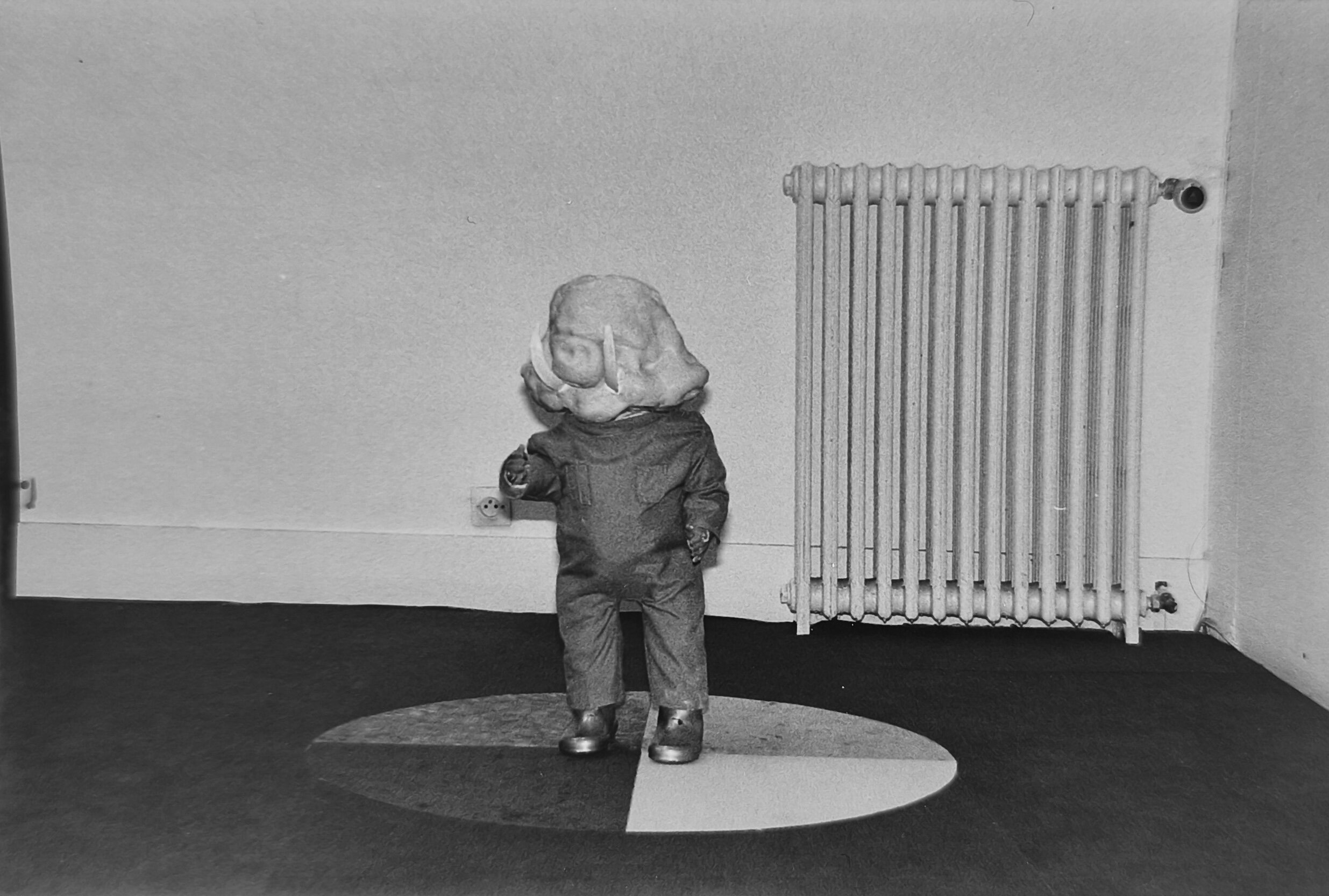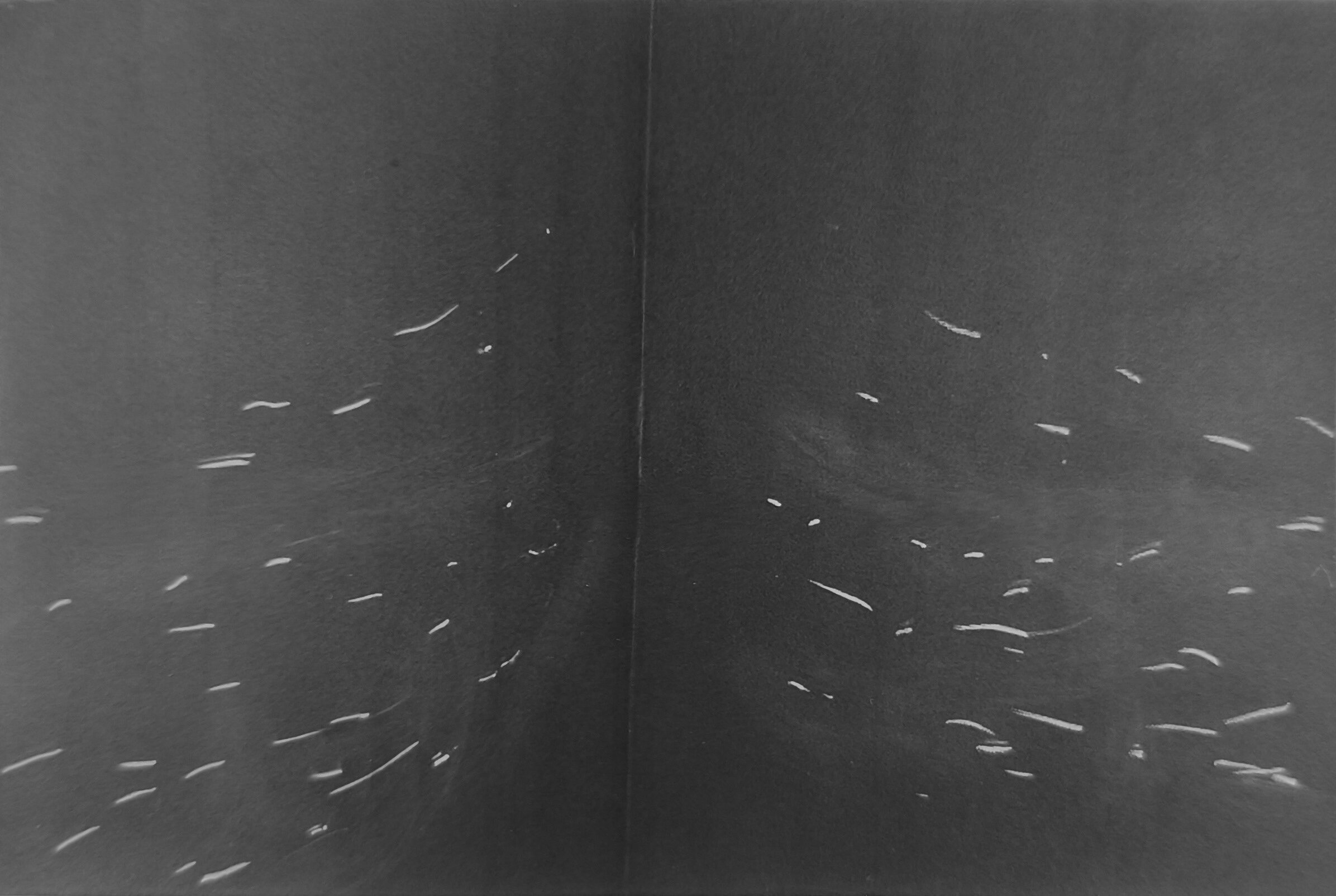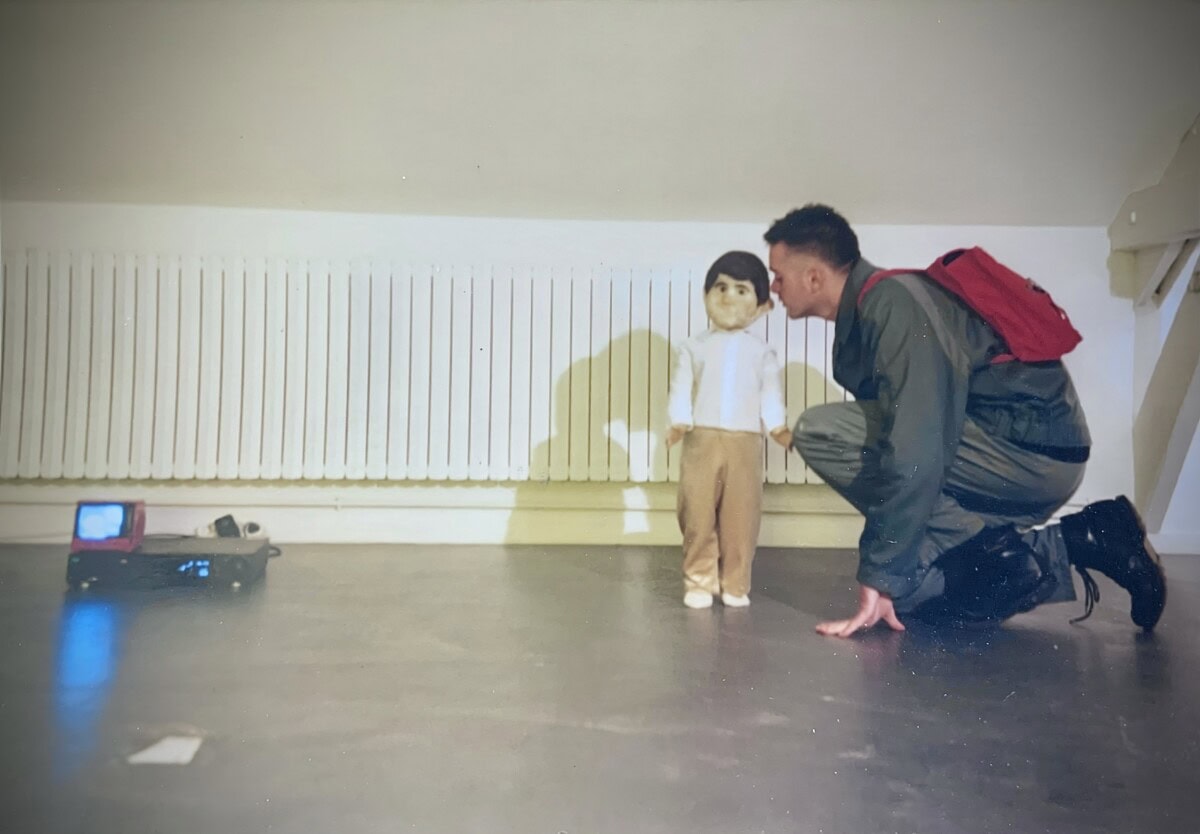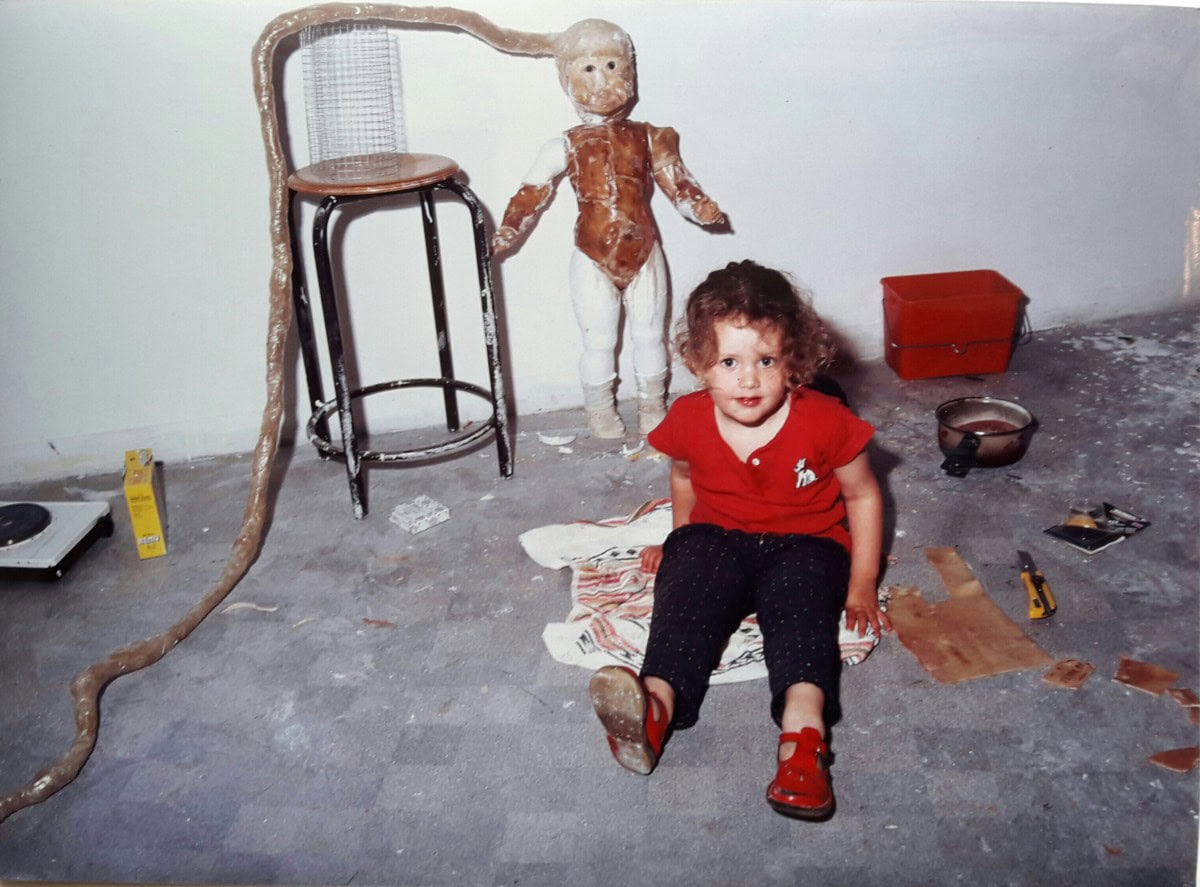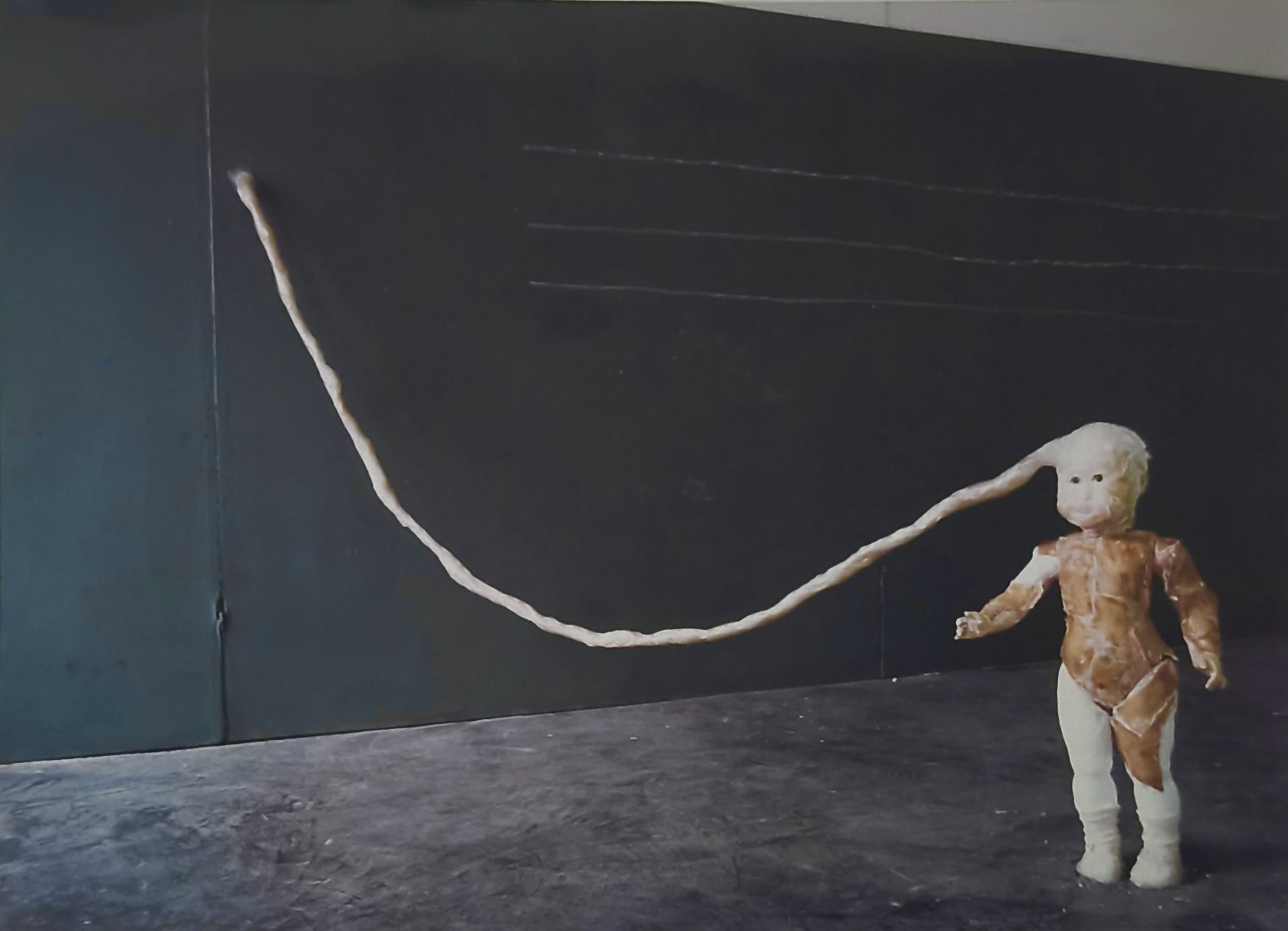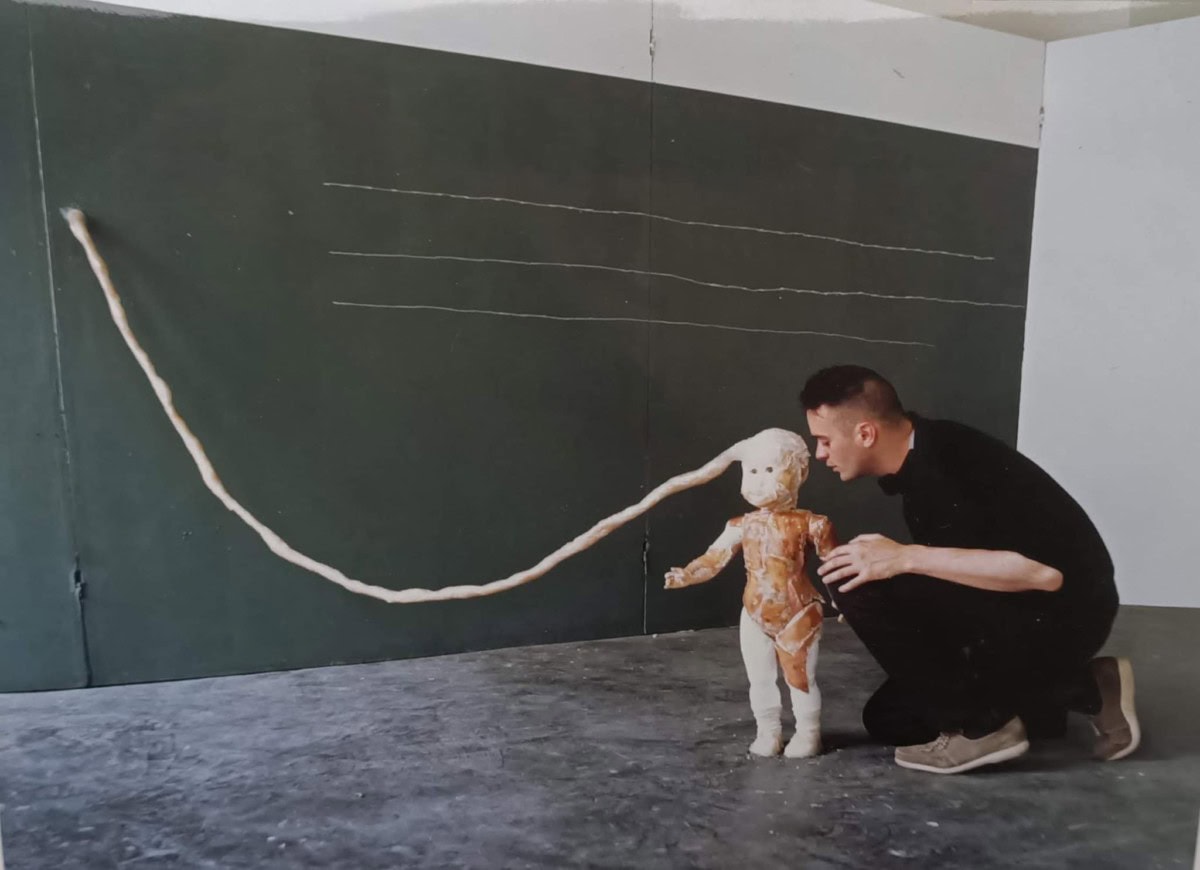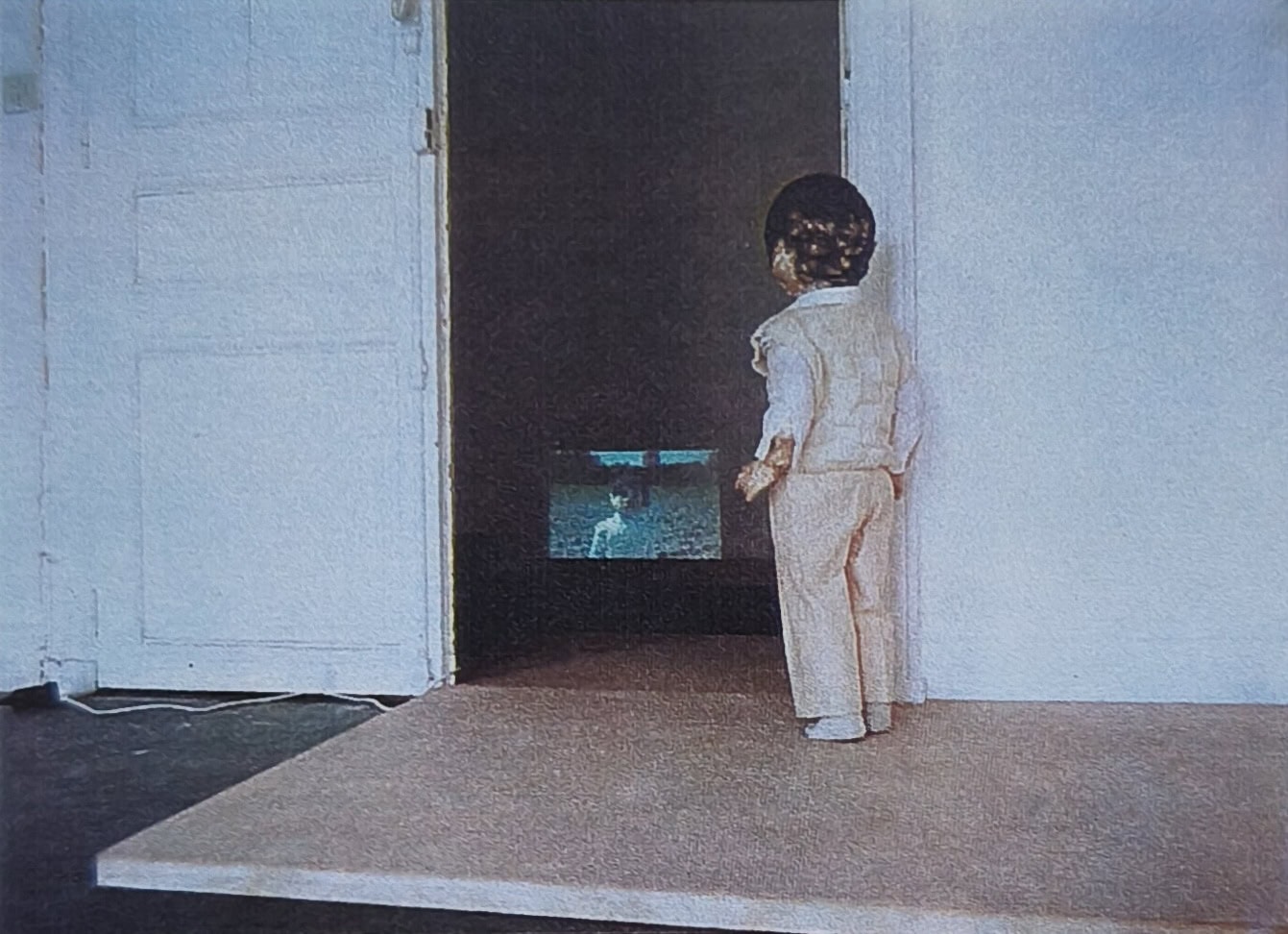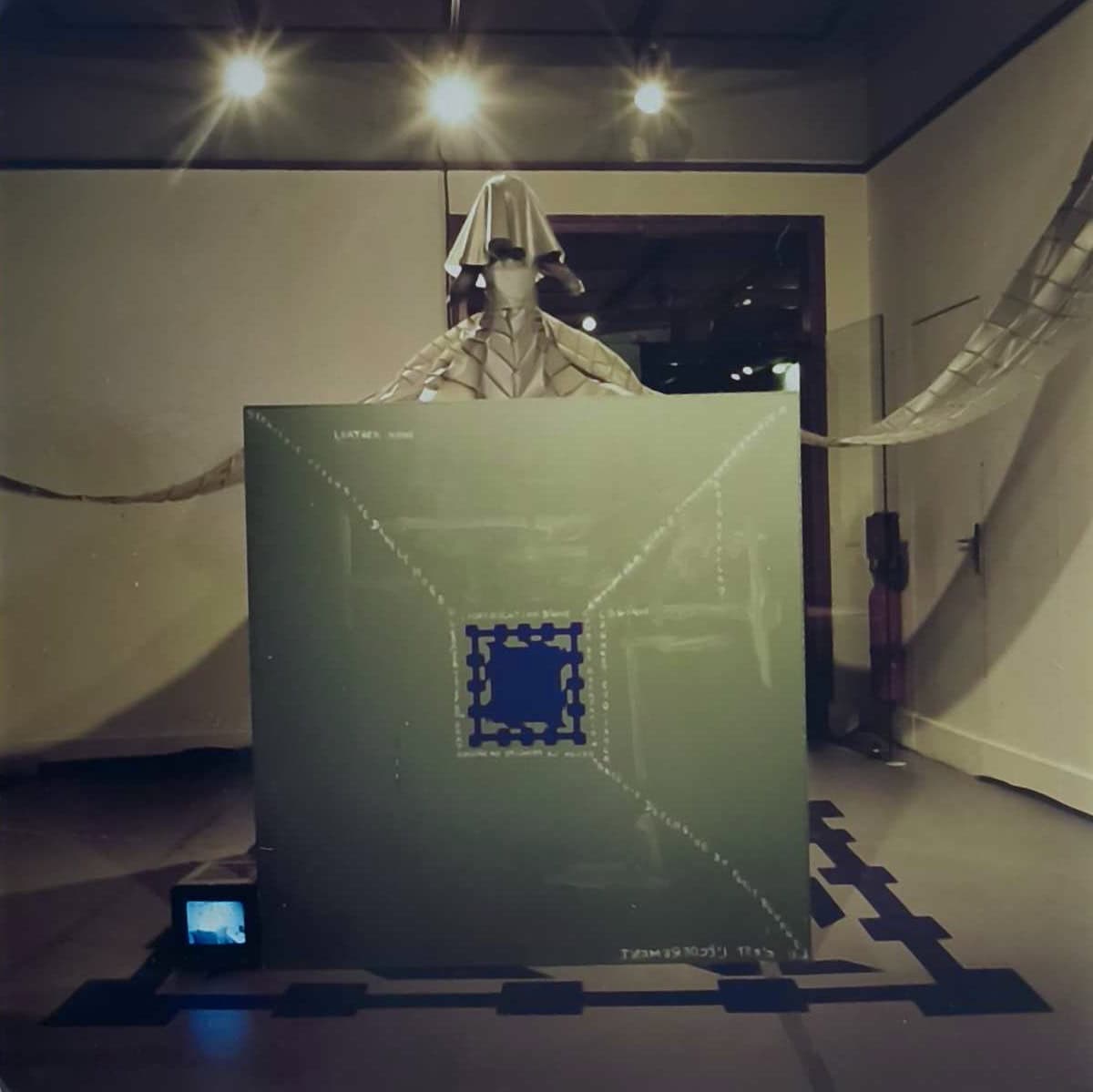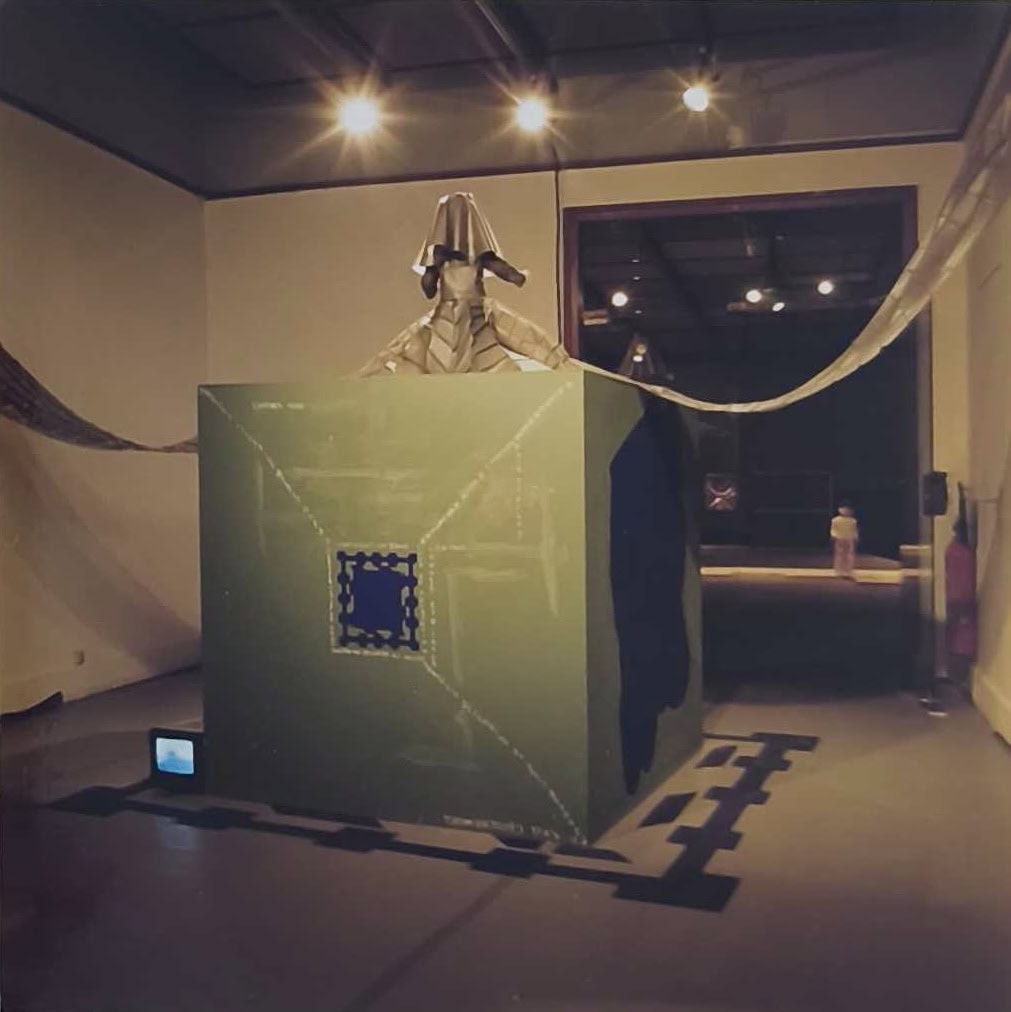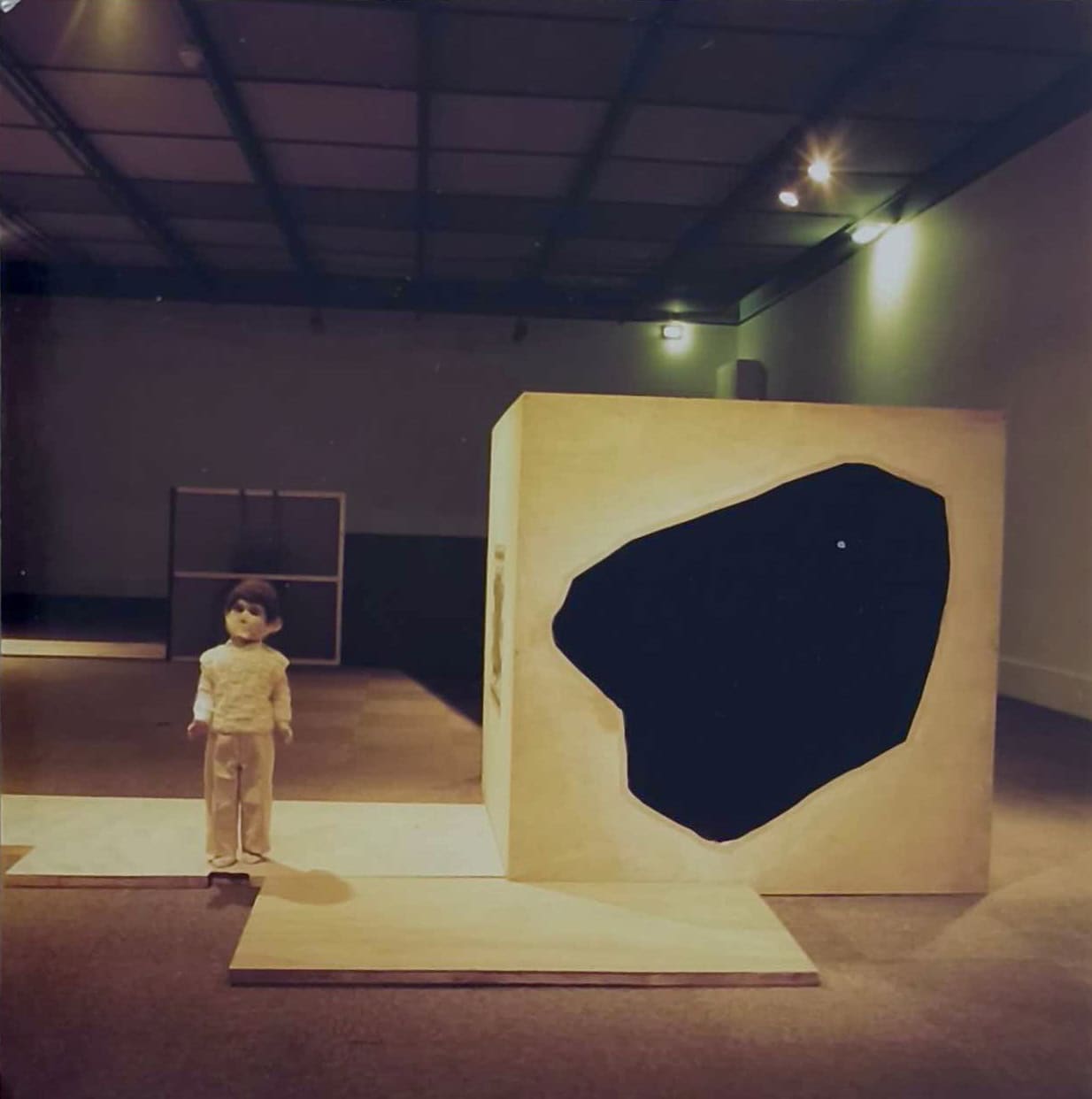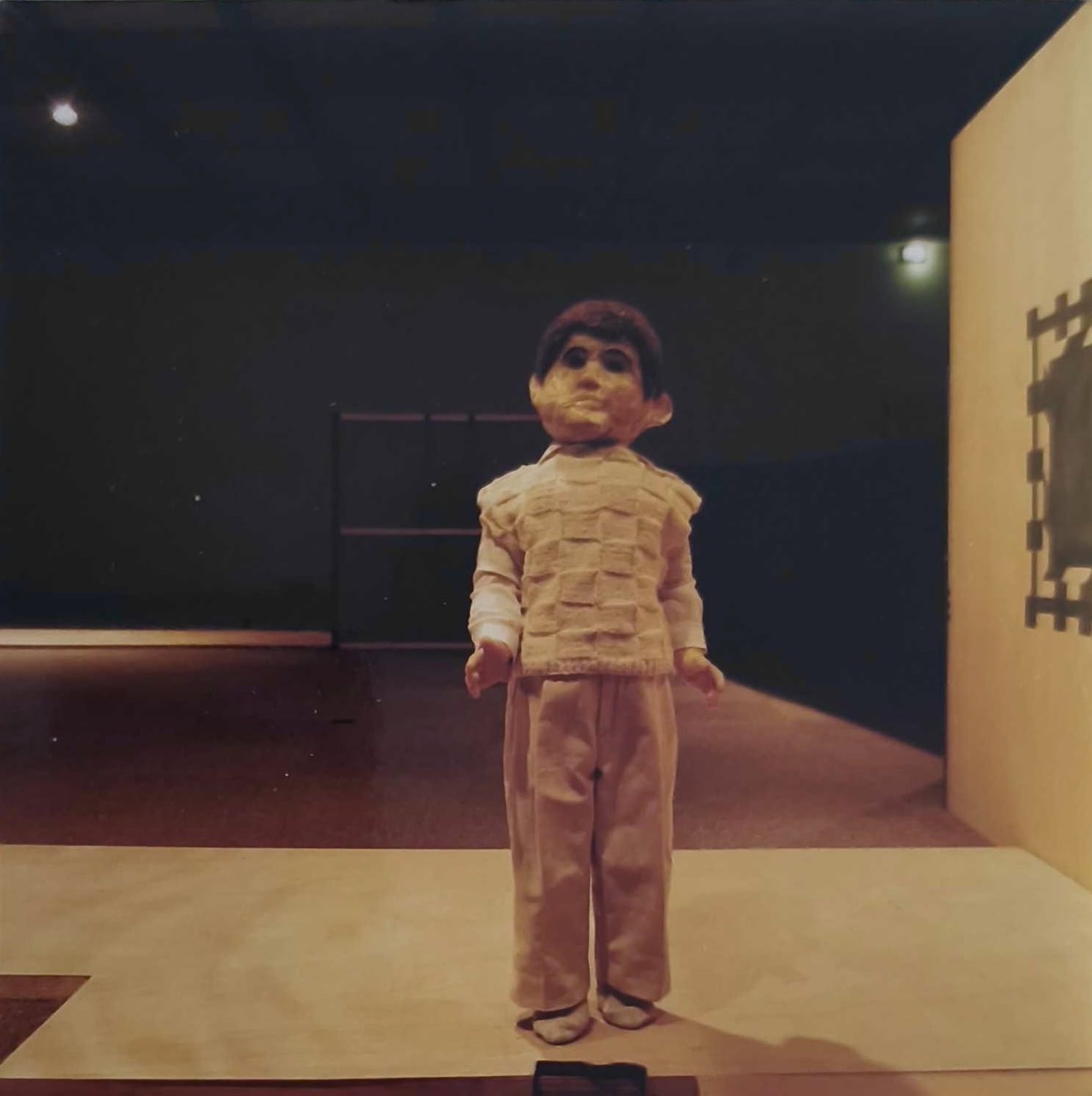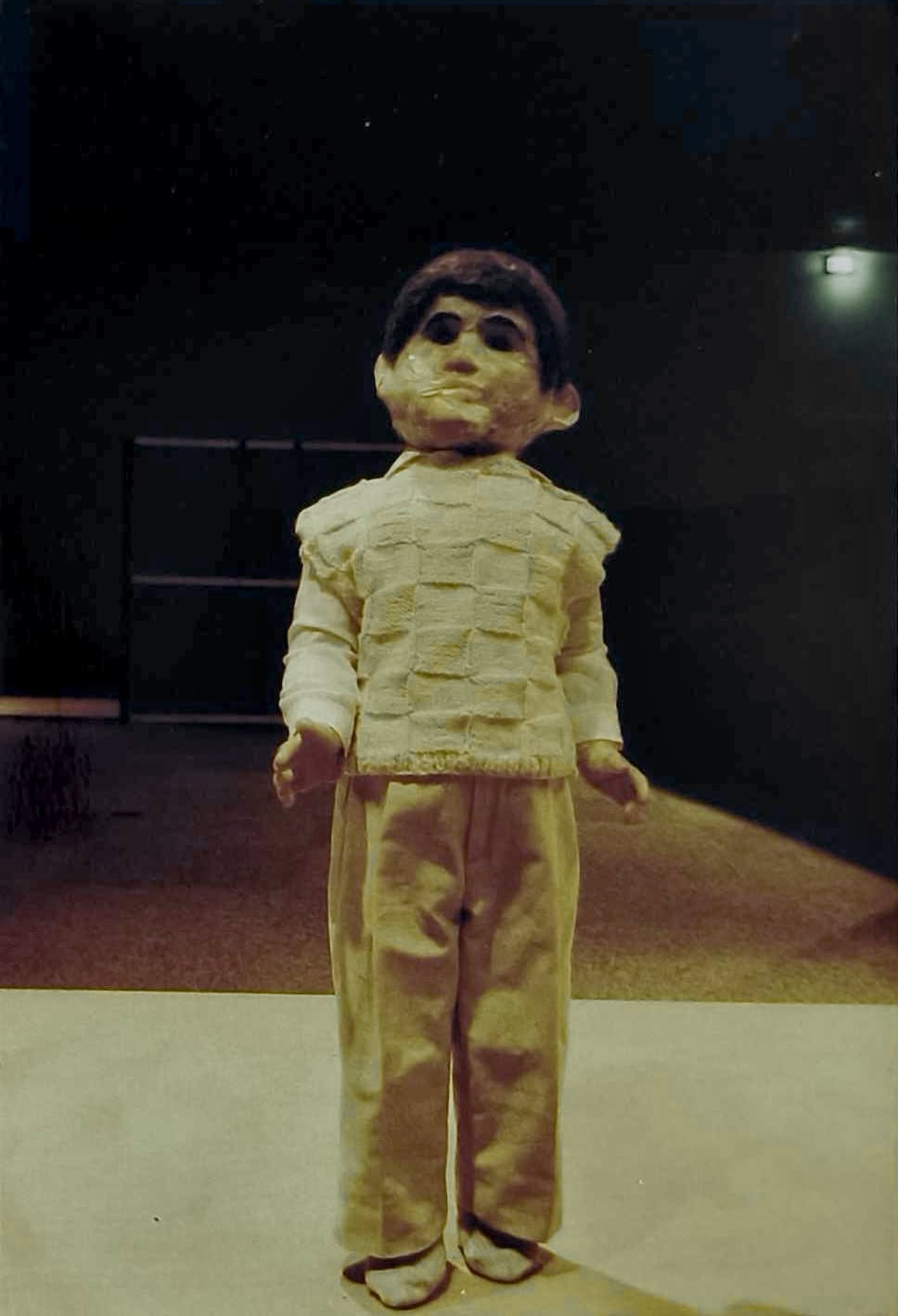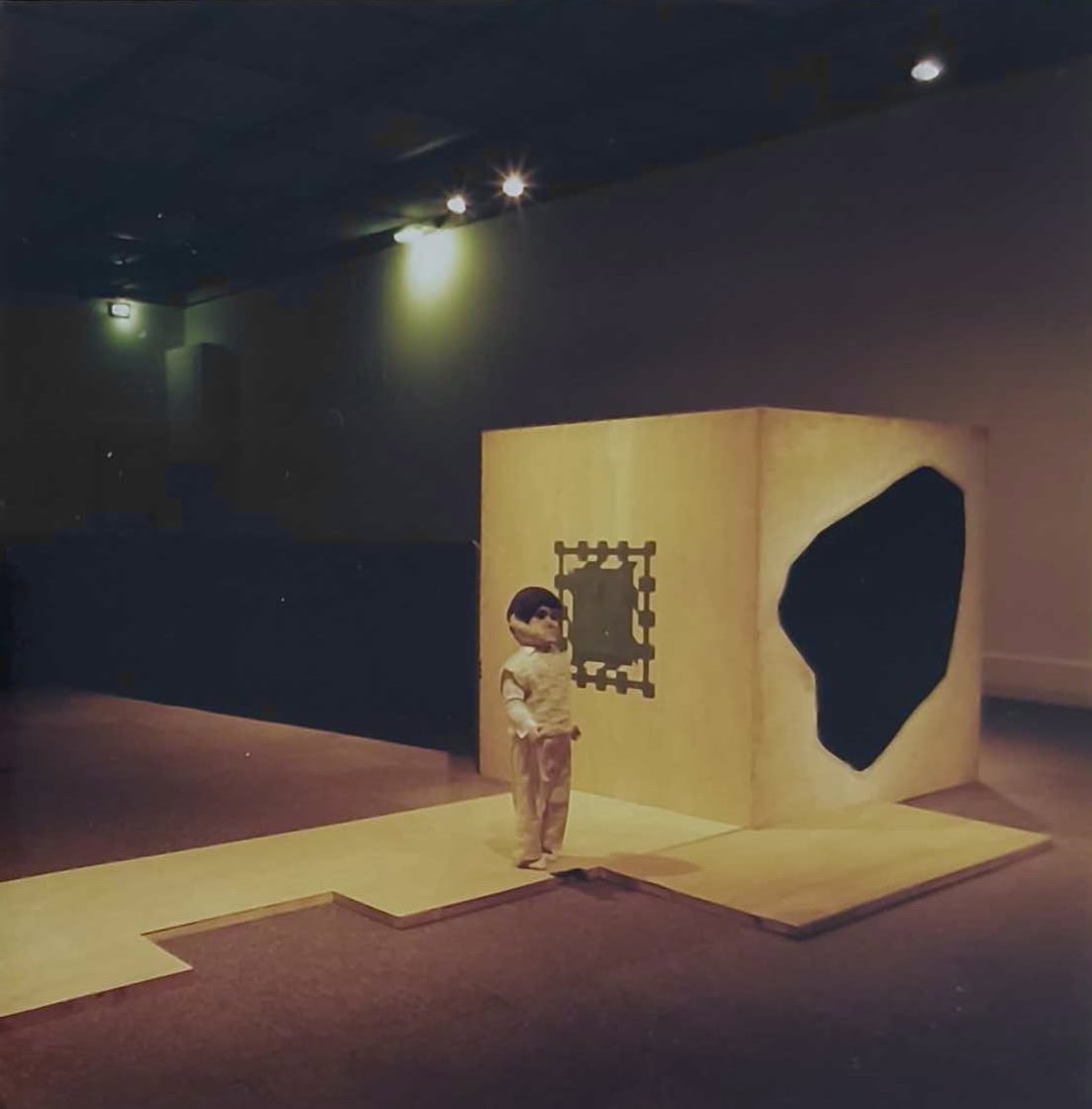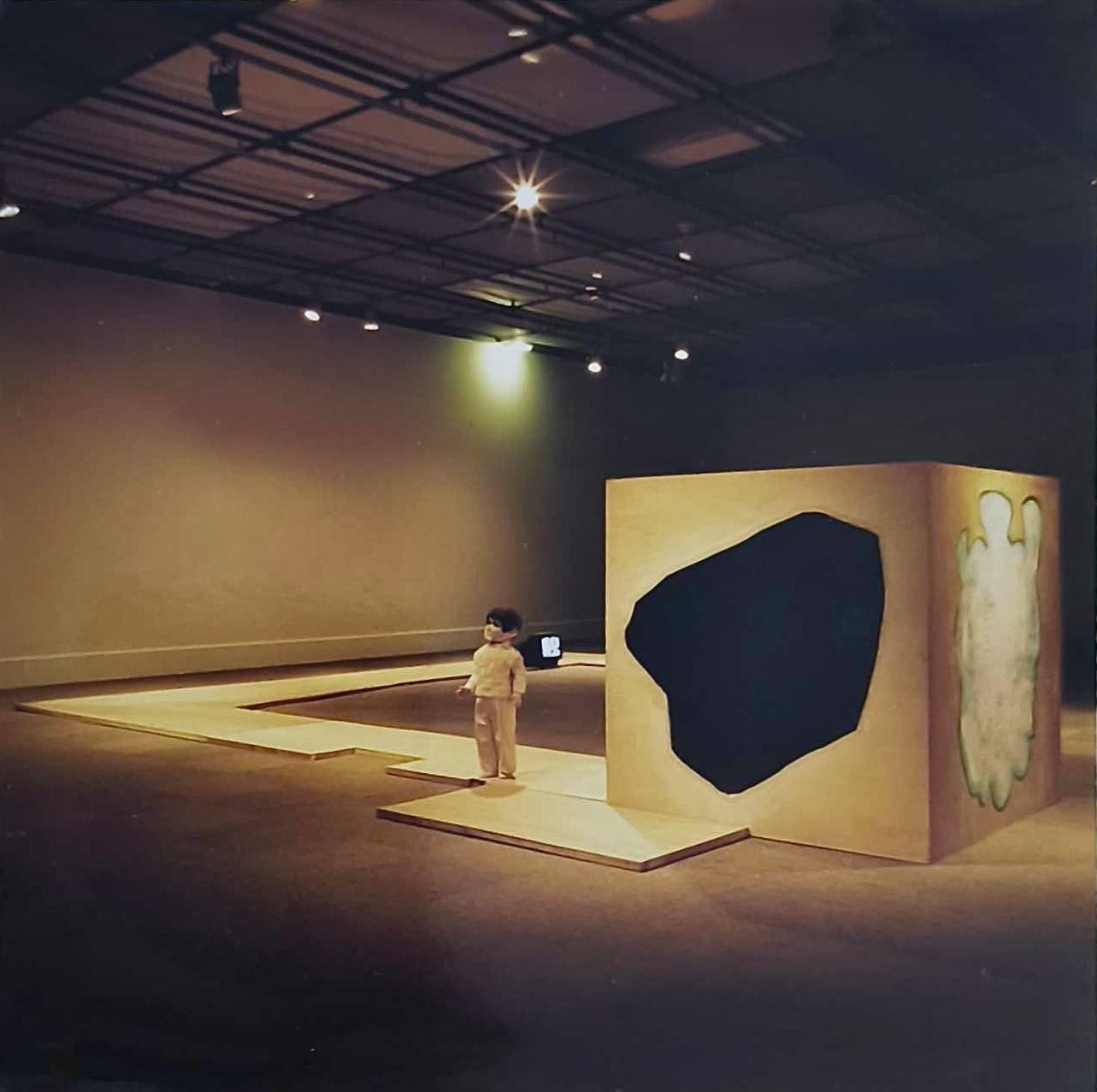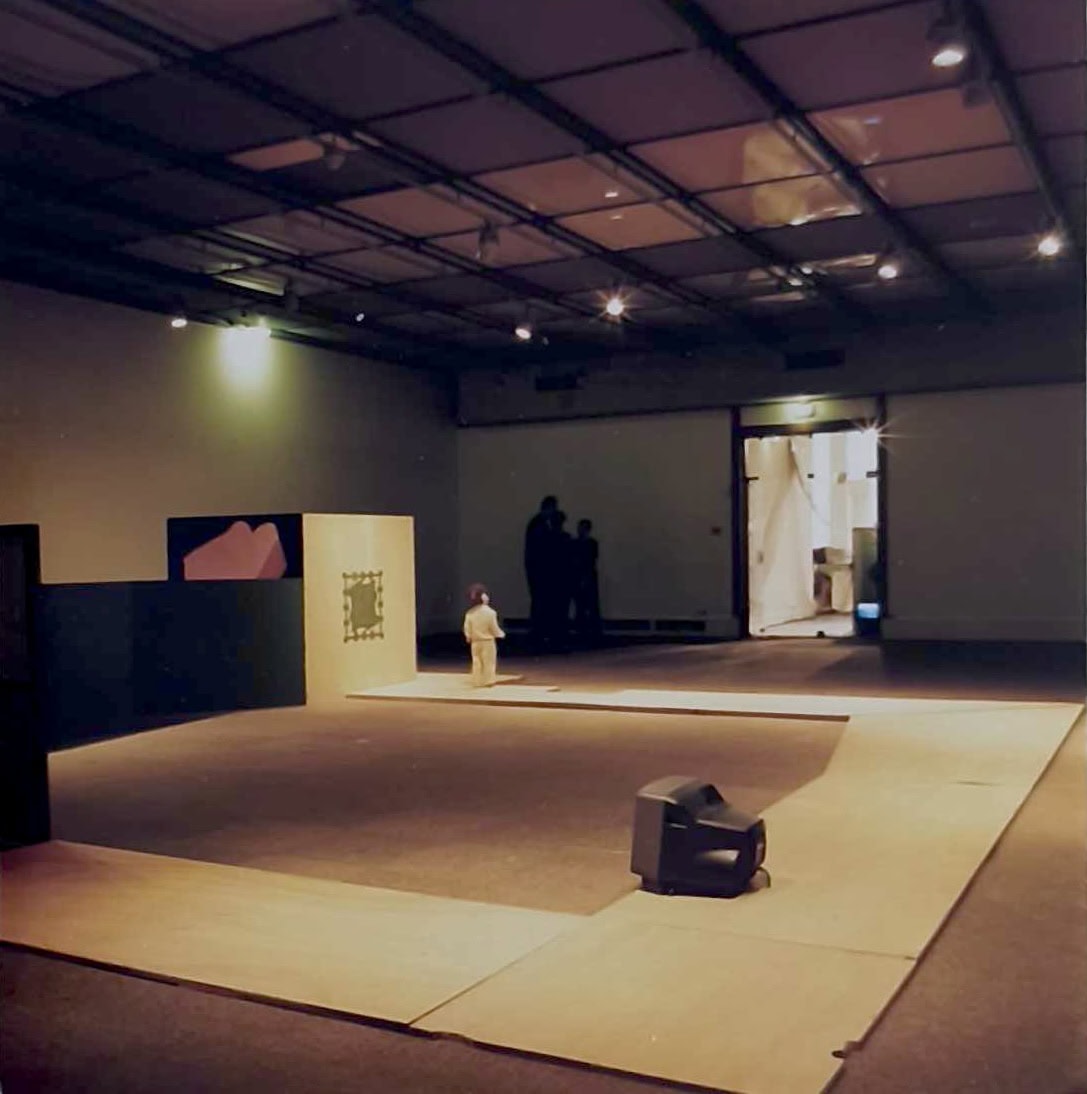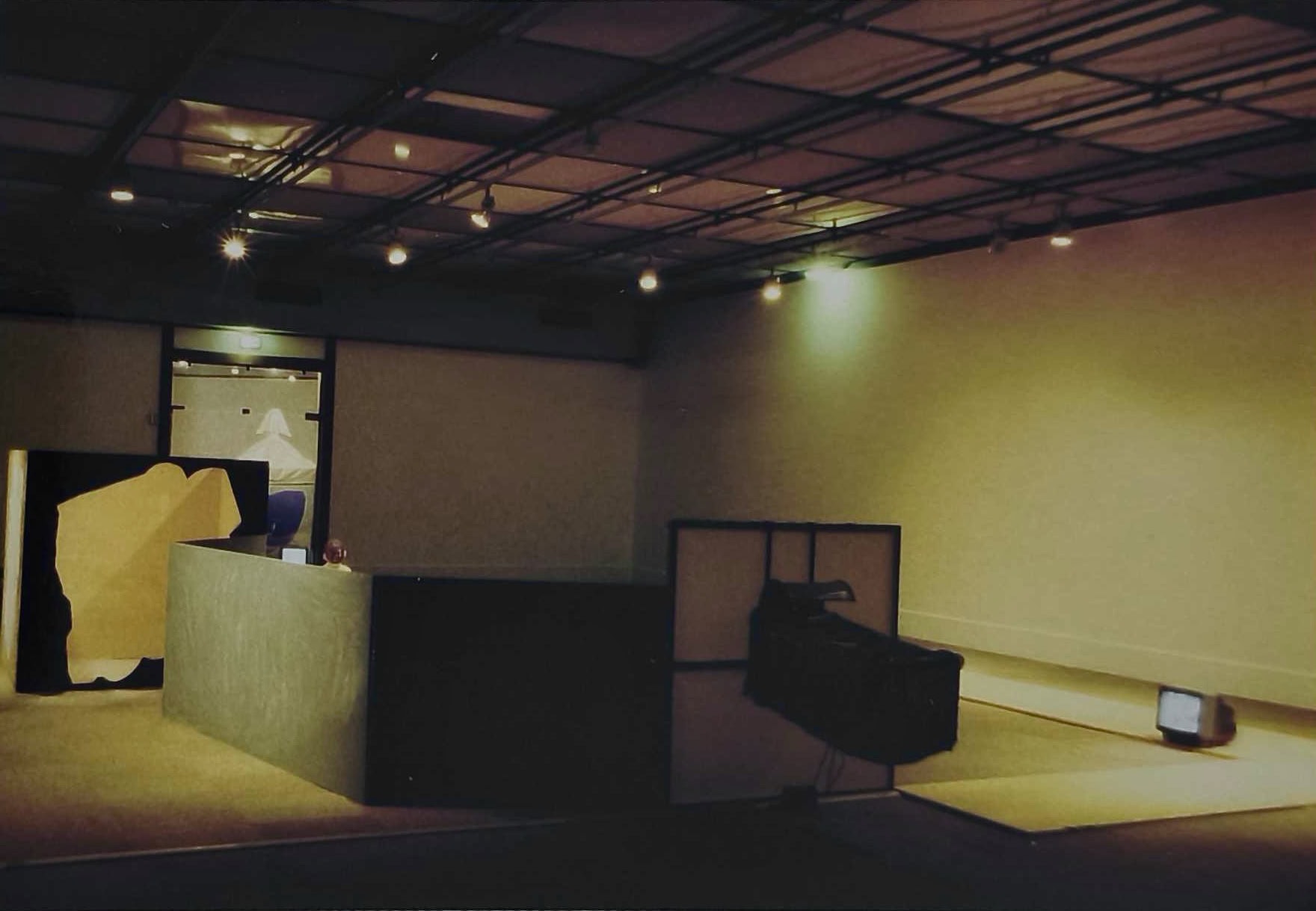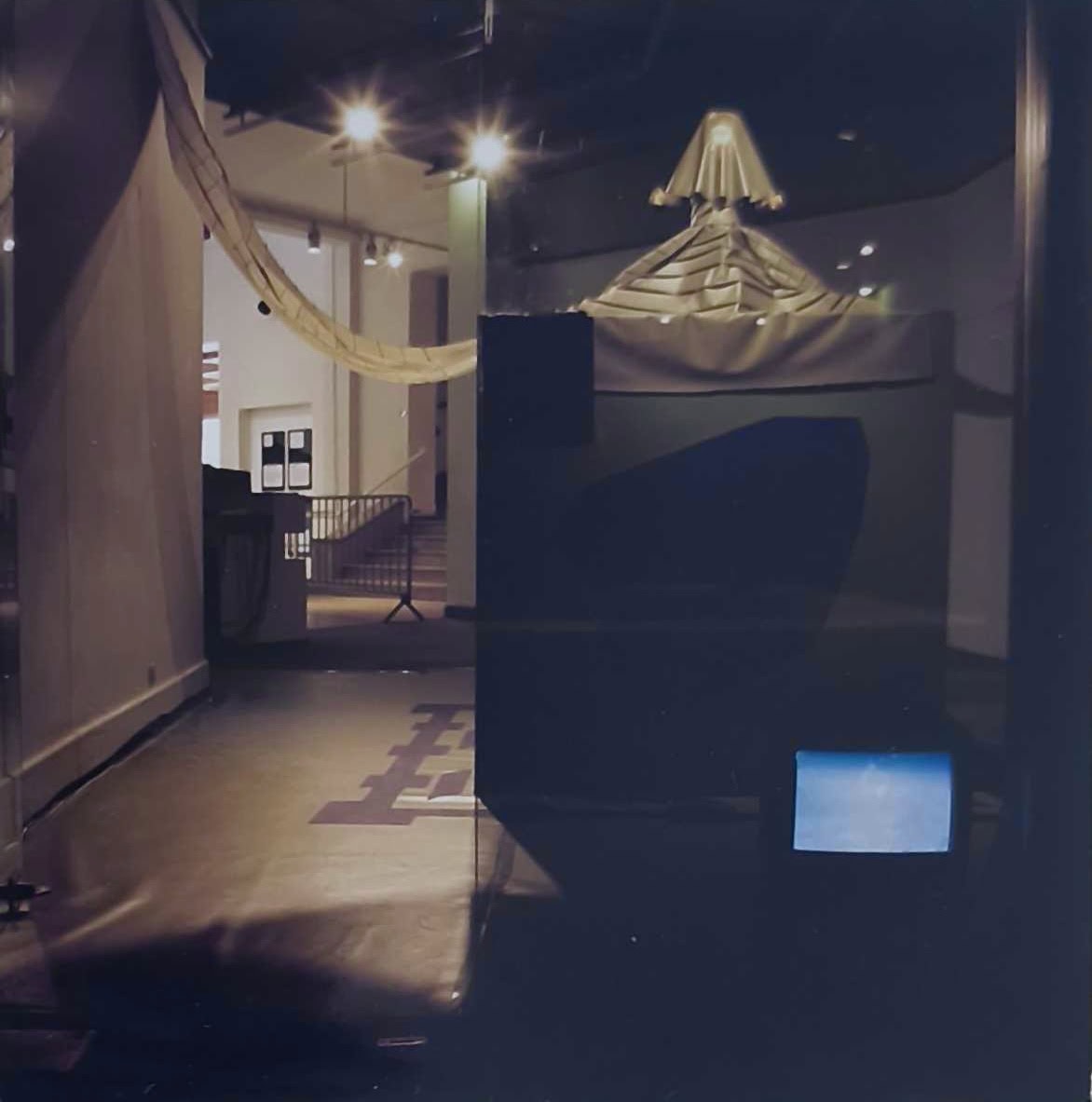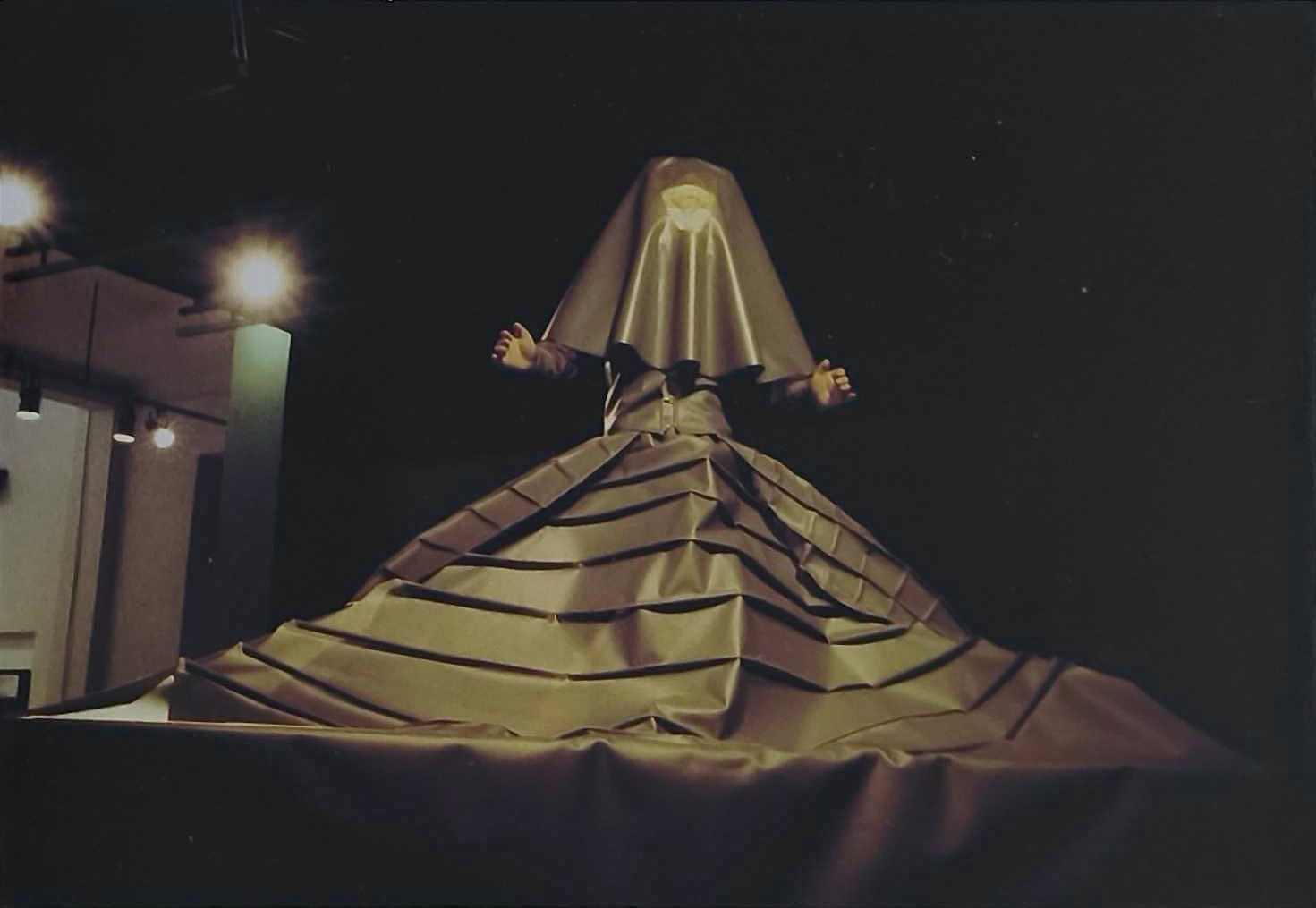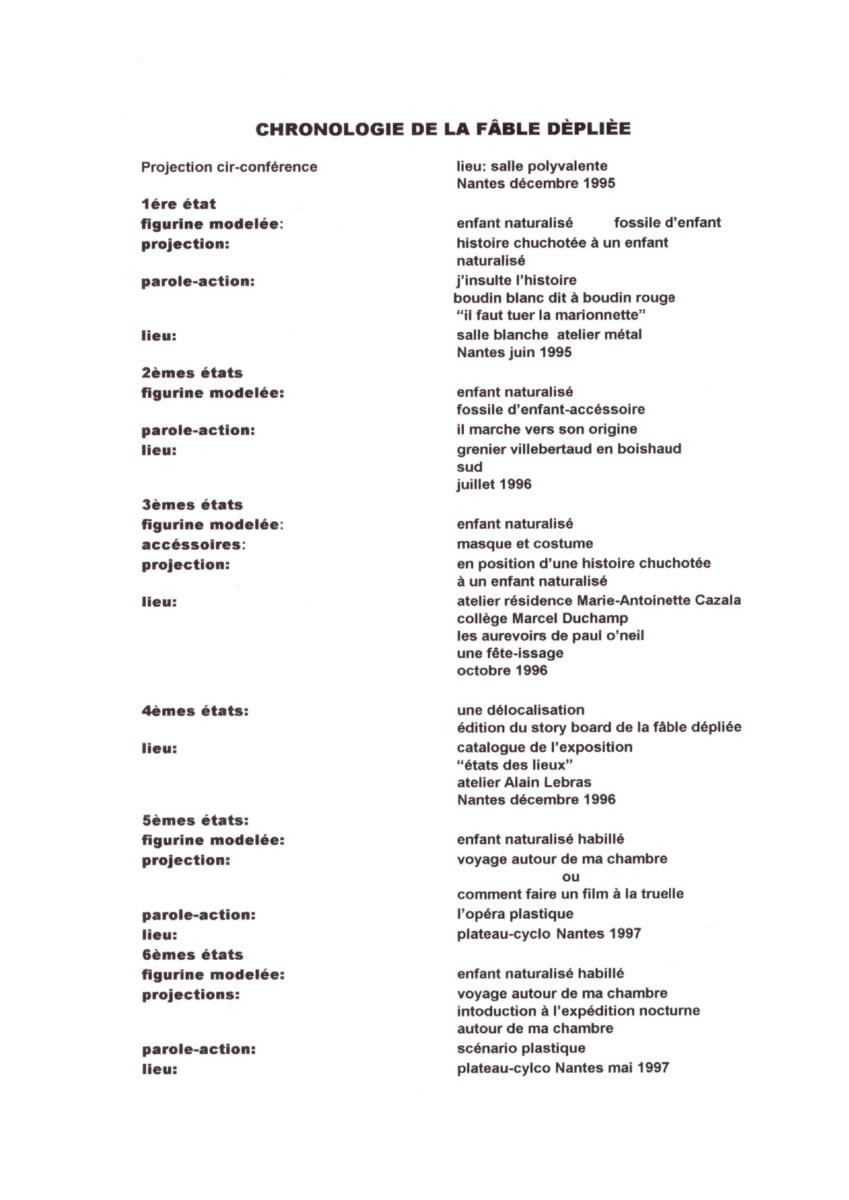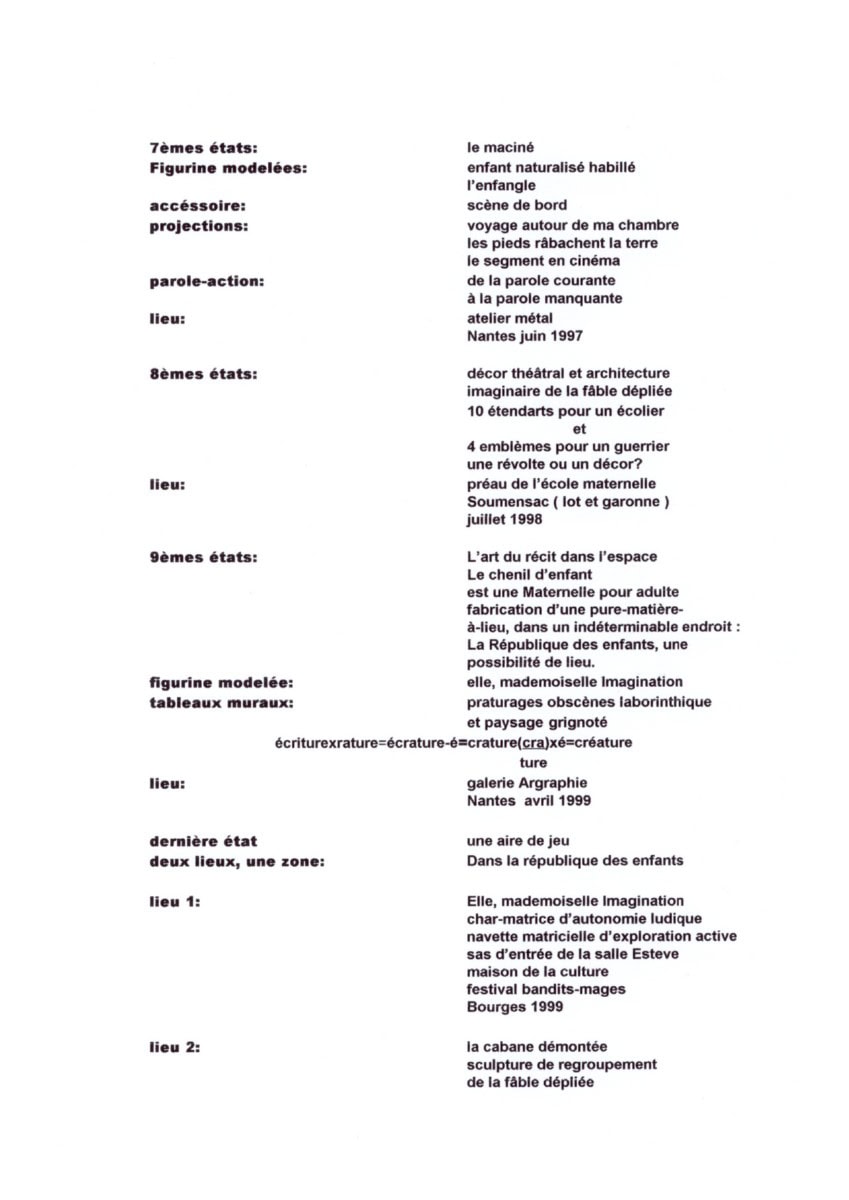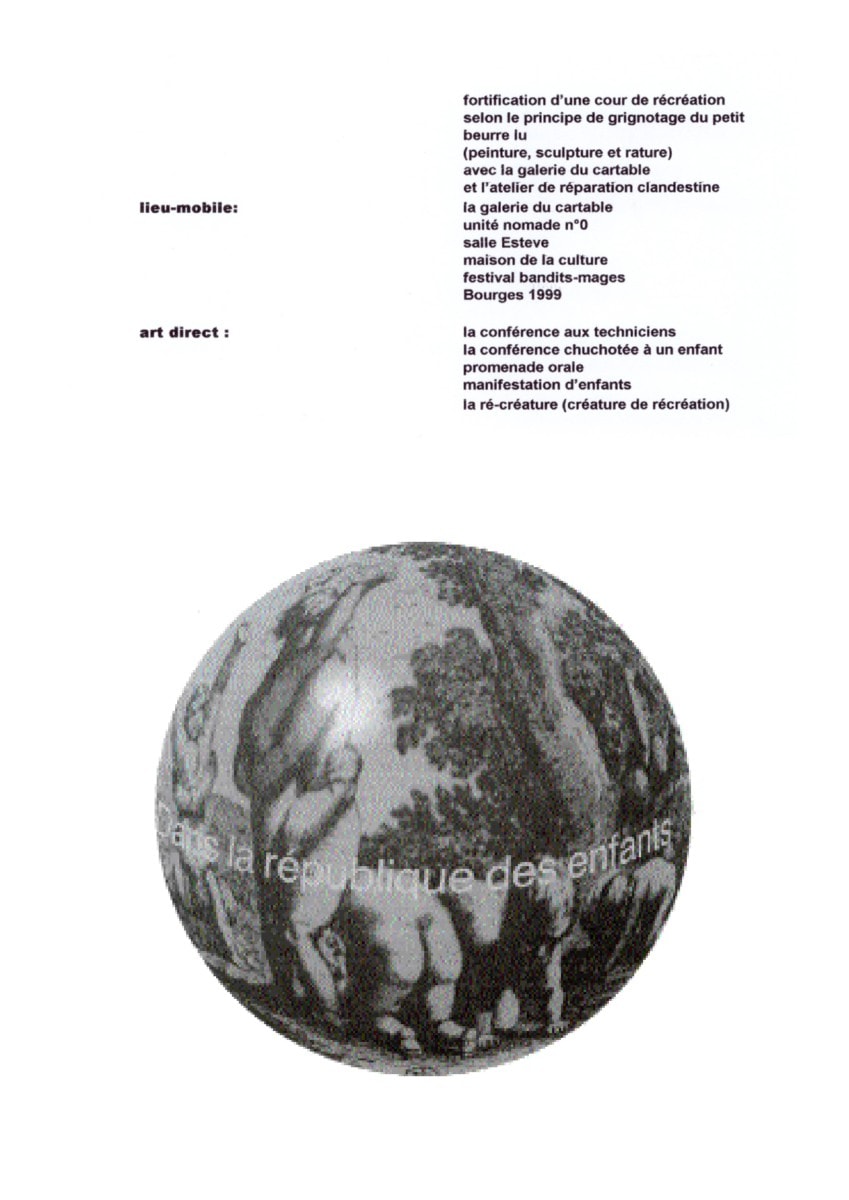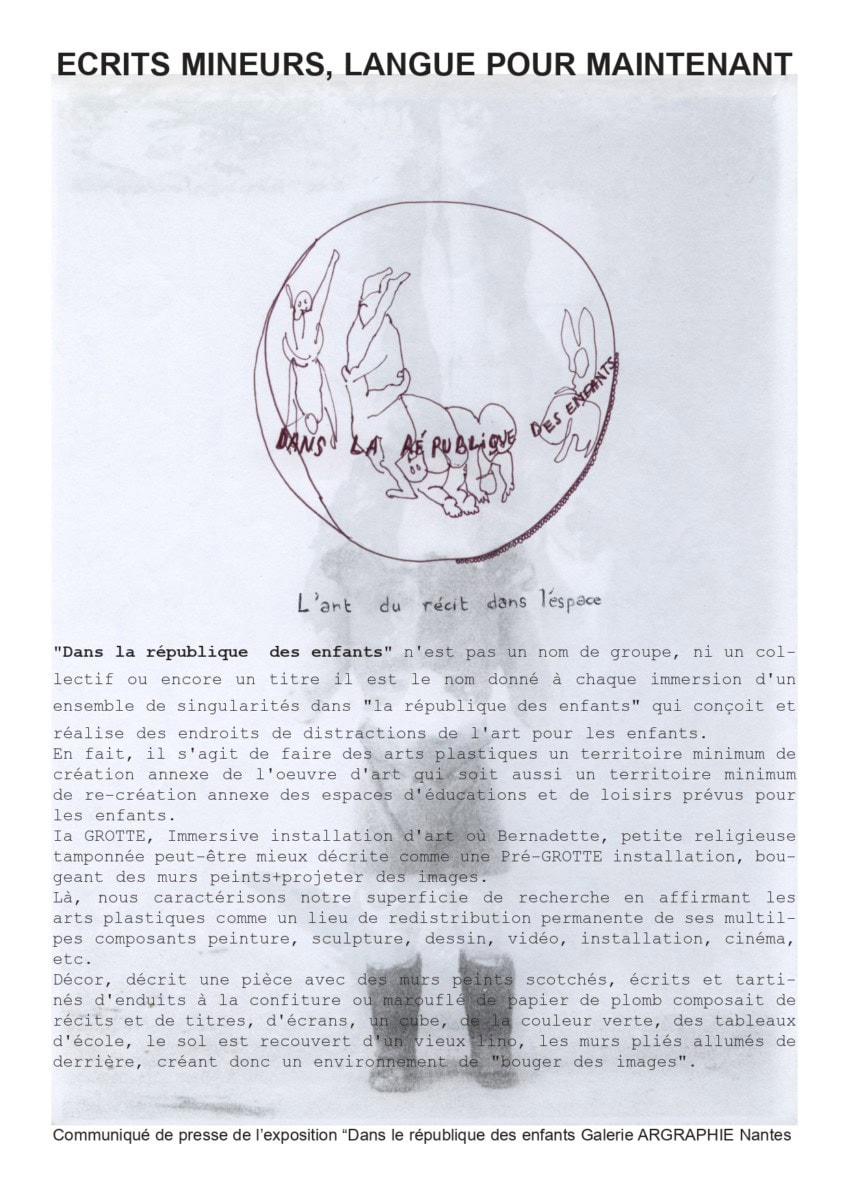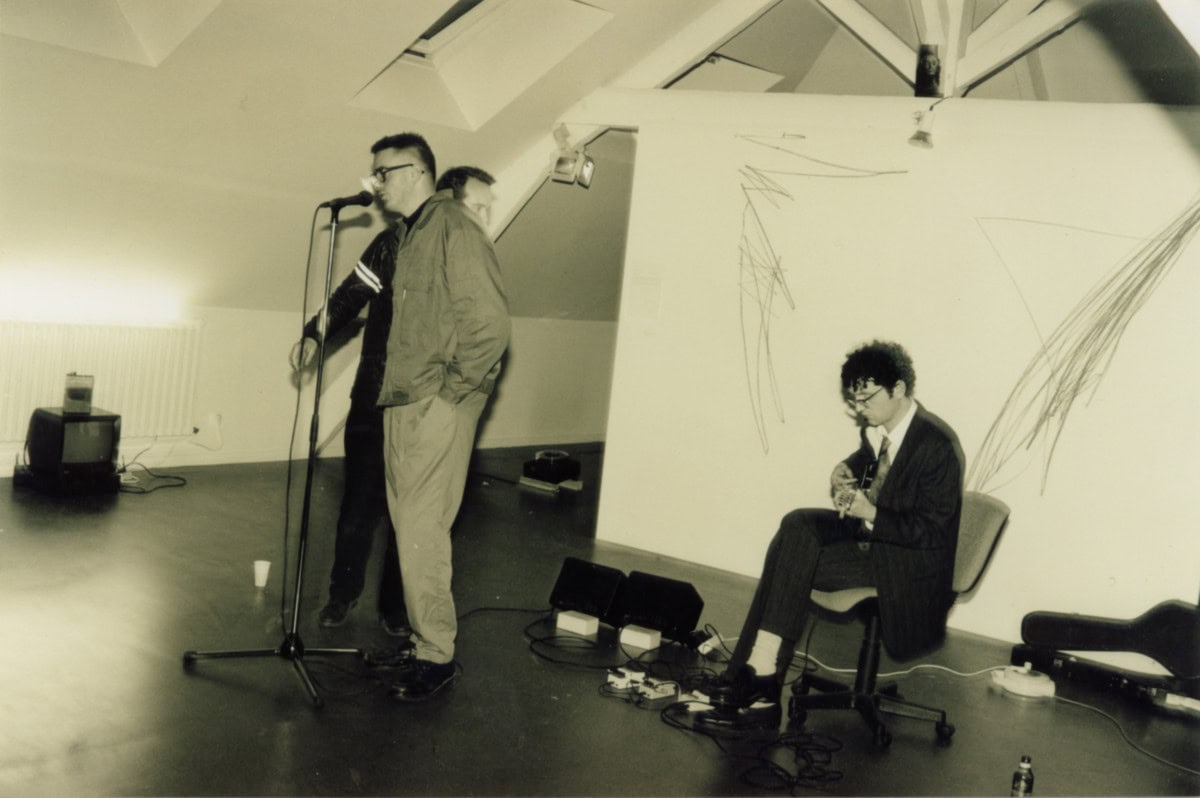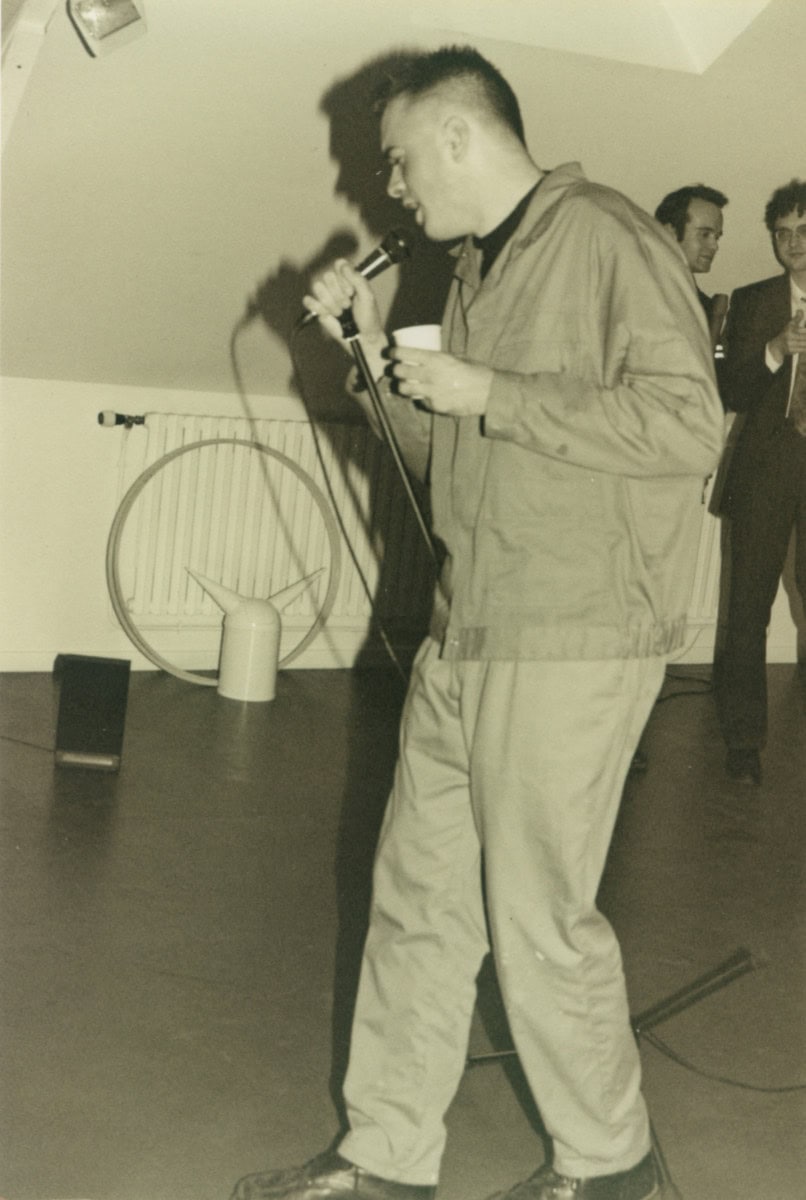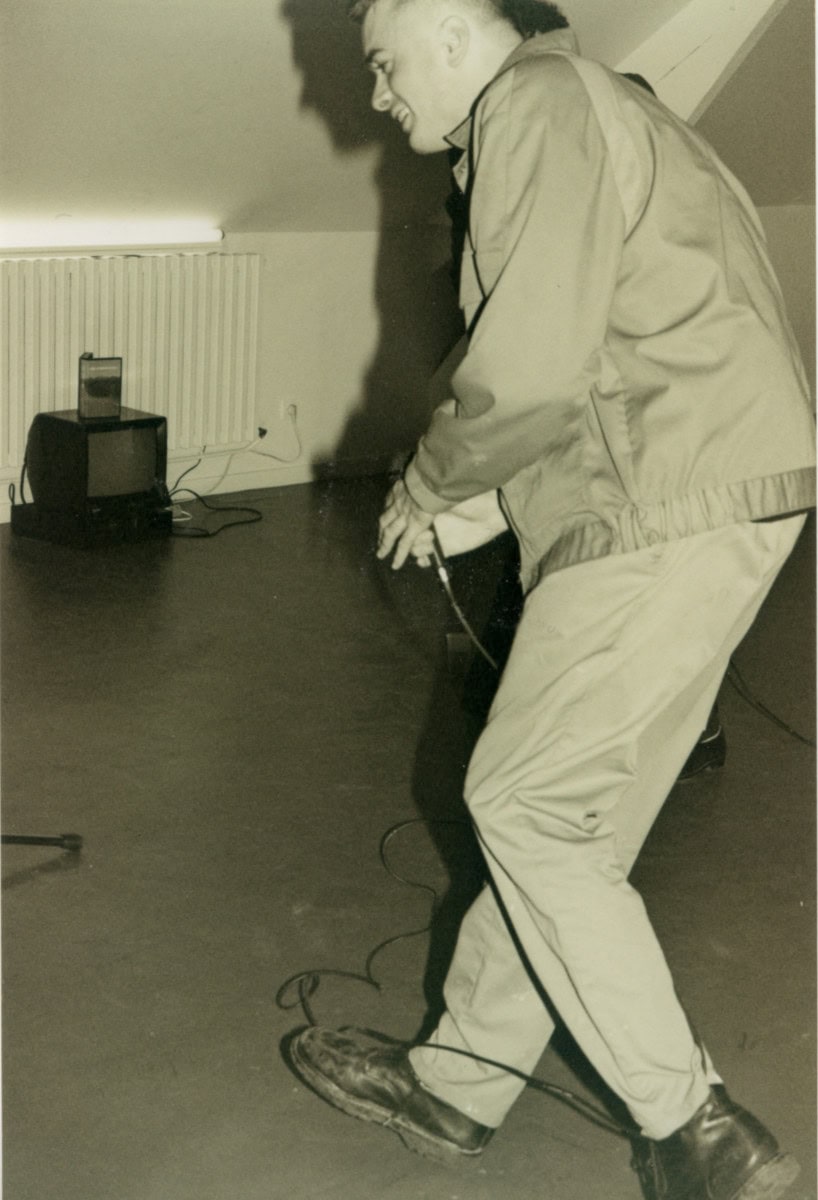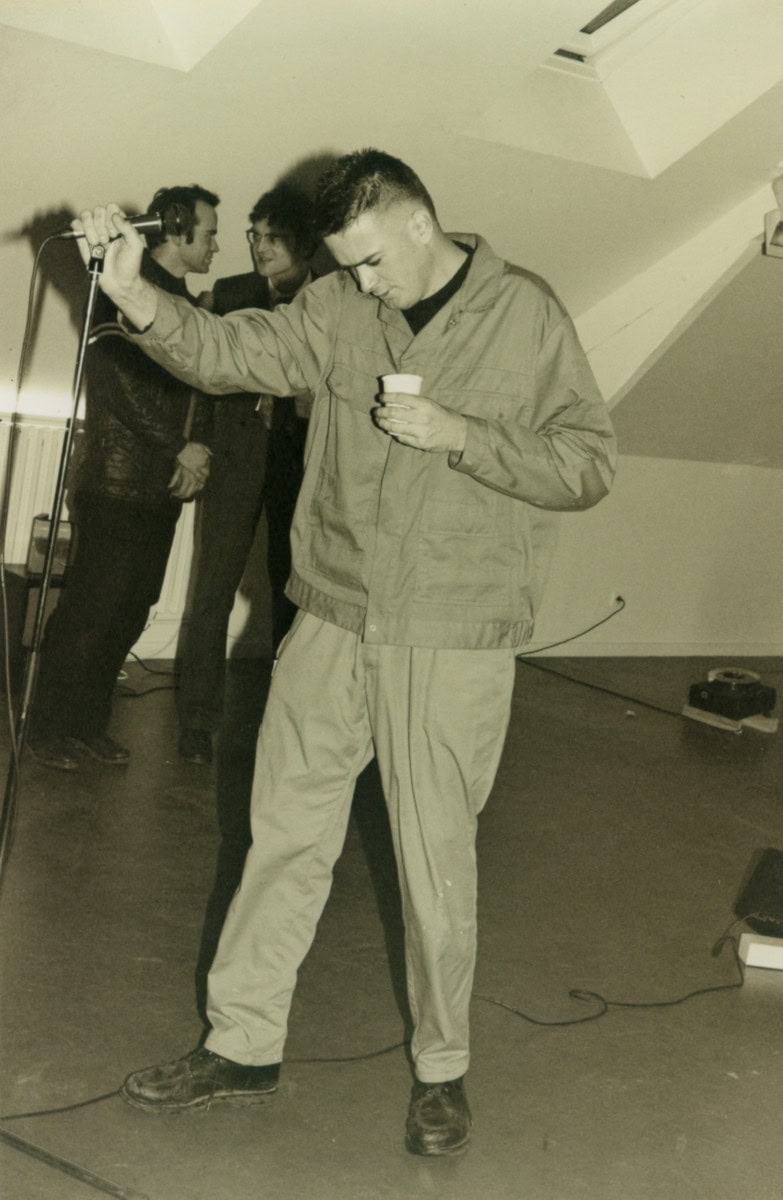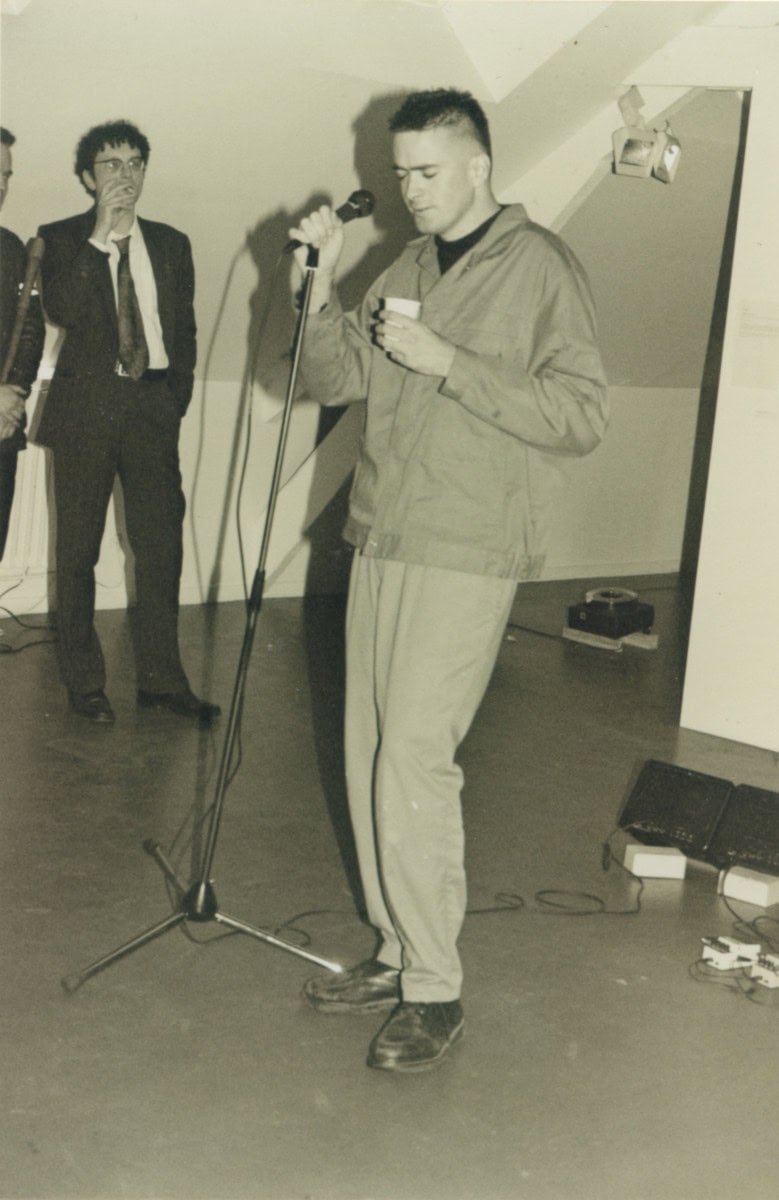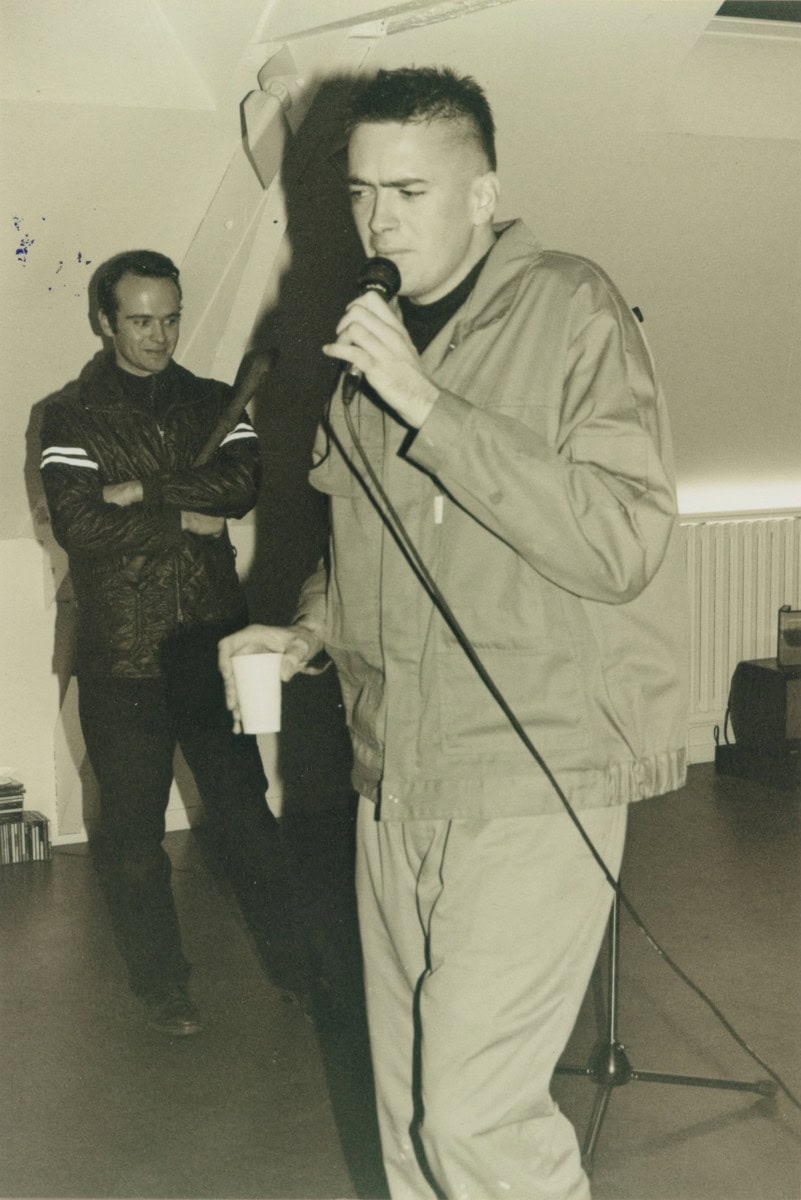Bizuth Duchamp 1,
Gallery of the Marcel Duchamp College, Châteauroux, 1990
"In the children's republic"
ARGRAPHIE Gallery, Nantes, April 1999
MINOR WRITINGS, LANGUAGE FOR NOW
The art of storytelling in space
"In the Republic of Children" is not the name of a group, a collective, or a title. It is the name given to each immersion of a set of singularities into "the Republic of Children," which designs and creates spaces for artistic entertainment for children.
In fact, the goal is to make visual arts a minimum territory for the creation of supplementary artwork, which also serves as a minimum territory for the re-creation of supplementary spaces for education and recreation designed for children.
The CAVE, immersive art installation, where Bernadette, a small stamped nun, might be better described as a Pre-CAVE installation, moving painted walls and projecting images.
Here, we define our research area by asserting the visual arts as a space for the permanent redistribution of its multiple components: painting, sculpture, drawing, video, installation, cinema, etc.
Documents
In 1990, in my room, I create my first archaeological sculptures using licorice and marshmallows to reconstruct prehistoric creatures. I also paint my first monsters, and it is there that I set up my child-pig, along with my first instruments of transmission and creation made from Scotch tape.
Document
First Manifesto of Fictional Aesthetics
"I DECLARE WAR ON..." FORTIFICATION OF TREES
The figurines sculpted from a distance, where each becomes the satellite of the other, end up fixing themselves eternally at the threshold of all relations to act as satellites.
Like the characters in Ferdinand Bruckner's play, Le Mal de la jeunesse,The self-sufficient nature of their intelligence means they only intersect at the threshold of conflict and fraternity. Not cowardly enough to step back, not brave enough to move forward.
In such a world, the assassin is the last human being to seek contact. And assassination, conflict, become synonymous with humanity. Without contact, there is no conflict; without contact, the human dies within man. Consequently, this means that war is the last refuge of what is called human. For war is contact, war is dialogue, war is free time. With the destruction of contact, and even the need for contact, only one word becomes possible :
"I DECLARE WAR ON..."
This impression is neither an invention nor a distortion of the text; it is a drift beneath the text that introduces the monstrosity of autism and makes the text resonate differently. Or, to put it in tragic terms, it builds around each being a wall with which they surround themselves to isolate from the real world. Yes, the text constantly vibrates because of this fault of impression.
FORTIFICATION OF TREES is already a proposal for the staging of plastic theater, which pulls the text towards its most monstrous side: from the disintegration of human relationships to the mechanism of murder.
The Theatre of Figurines
“At the start, as a student, I built the theater of plastic speech, which presented inert characters, figurines modeled on dolls with the proportions of young children, transgressing the figures of pupil and teacher at school. For example, four hybrid figures - the schoolboy warrior, the child pig, the child sheep, the warthog engineer - were staged, held at equal distance from each other, blocked at the threshold of all relations. Not cowardly enough to take a step backwards, and not brave enough to take a step forwards. This scene of plastic theater anticipated the dehumanization of relationships between teachers and students. The sets were painted, taped, written on, spread with jam plaster or marouflaged with lead paper, made up of stories and titles, screens, the green color of school boards, the floor covered with old lino. These scenes were also conceived in their fabrication as a liberation from small school equipment, creating an inverted pedagogical environment.
It's here, within these spaces, this environment, that I intervened by declaring :
_He who cannot speak, let him sing !
_ He who can't sing, let him whine !
Now, if I were to speak as a director, I'd say that in such a world (i.e. a world where there is no longer any contact, this society without links that I mentioned earlier, where communication has become the illusion of communication and culture the illusion of thought within knowledge) I interpret the last human being to seek contact. That the violence of speech combined with stuttering speech (which I described earlier as a syncopation of language) attempts to make works speak.
In other words, this word, once combined and pronounced in front of the works, through a genuine act of transmission, which I call “from the missing word to the current word”, playing the teacher's posture, served to make the stammering of the works heard at the beginning of their reconquest of language.”
View of the exhibition in super 8
the unfolded fable
Documents
Post-Mad Songs It was born from a series of nocturnal performances in artistic squats of the 1990s, where David Legrand, with out-of-tune instruments, blended raw poetry and absurd cries, halfway between punk and absurd theater.
These songs, improvised in front of audiences as eclectic as they were unpredictable, captured the essence of an era where the body and voice became the instruments of ephemeral and transgressive art.
ChatGPT a dit :
A true vocal and gestural laboratory, these performances oscillated between slapstick and tragedy, drawing a fragile bridge between mundane everyday life and a poetic quest for the extreme, while asserting a resolutely avant-garde aesthetic. post-Barjes.
Une esthétique post-Barjes In song, it is defined by the use of dissonant sound structures and parodic texts, blending triviality with poetic depth. It redefines classical musical and narrative forms, situating itself within a critical dynamic where parody becomes a tool for reflecting on aesthetic and cultural conventions
